Interested in visiting Scotland‘s outer islands? This post on the Outer Hebrides, Northern Isles and West Coast can help you plan your trip.
In my last post, I took you to Scotland’s magnificent inner Hebrides. In this post, I’ll share some of my trip to the Outer Hebrides and some of the northern most isles — Orkney. Either way, you can’t go wrong with visiting Scotland’s islands.
This was my first time to the far northwest part of the Outer Hebrides and I was excited to 1) plunge myself into piles of Harris Tweed 2) tour and taste at the Harris Distillery and 3) explore some of the oldest stone circles in the world on Lewis. The plan was to spend five days on Harris and Lewis and then head back to the mainland to explore the northwest Highlands and the legendary Sandwood Bay before heading over to Orkney, a place that has served as inspiration for many including Diana Gabaldon.
After meeting up with a special friend, we would also visit one of my favorite regions — Ayrshire and the west coast. I had several more islands on my to-do list, including one small isle that had captivated me since my very first trip to Scotland three years past. Off we go!
Harris/Lewis
First, I need to dispel a commonly held belief — that Lewis and Harris are, in fact, two islands. In fact, the island “Harris-Lewis” is the largest island in Scotland and third largest in the British Isles, following behind Great Britain and Ireland. The northern part of the island is Lewis and the southern portion is Harris. I had always thought that Harris and Lewis were separated by a causeway – but in fact, the boundary is where the island narrows slightly just north of the village of Tarbert on Harris. There is no real distinction between land masses. That said, the two islands are very different in many ways, as I came to find out.
First impressions can certainly take one’s breath away. As we rolled off the ferry in Tarbert, the very first thing I saw was the Harris Distillery ahead. I am a big gin fan — almost as much as I am a Scotch Whisky fan. But Harris Gin had been on my list to try for some time and it can’t be found anywhere else but on Harris where it is only three years young. One of my traveling companions, Catriona, and I popped in just for a look-see and to make an appointment for a tour and tasting later in the week once our friend Helmut returned and my friends from the U.S. had landed to join us. Once entering, you are greeted by a lovely warm exposed *real* fire place, and airy, modern, industrial-like reception and shop area, with a café down the hallway that serves soups and sandwiches. I immediately rushed my way to the shop area, grabbed one of the beautifully designed bottles of the namesake botanical elixir while Cat signed us up for a tour later in the week.
Exit the distillery front doors, turn left and walk straight ahead and not one but two shops ahead sport the familiar “orb” symbol of Harris Tweed. I started hyper-ventilating. Knowing these were the first of many, I tried to restrain myself but the thought of buying the famous textile on the island where it was woven was overwhelming. Needless to say, I exited both stores with just a few new items thus starting the voice in my head that would repeat itself numerous times during our time on Harris and Lewis — “how are you going to get all this home?”

Be still my heart…
After loading my tweed haul in the back of Cat’s already packed vehicle, we headed out on the 40-minute journey to our rental cottage in Stornoway on Lewis. The sun was shining brilliantly after a few spits of rain on the crossing and I got my first real look at the magnificent landscape of Harris — briefly — until we crossed over to Lewis where I was aghast at the vastness and beauty there as well. The cottage was right on Sandwick Bay and minutes from downtown Stornoway, the largest and most populated town on Harris and Lewis. We were close enough to town for shopping to be convenient, but far enough out to feel rural and, most important, seaside. Upon arrival, it took me 8.5 seconds to grab the bottle of gin, some ice and a few limes and settle in to a seat on the deck as the sun shone brighter even as the day grew long. I was expecting some of my dear friends from the U.S., Tony and Doreen Rau, to arrive the following afternoon. However, until then, we were off in search of some stone circles, beaches and whisky the following day.
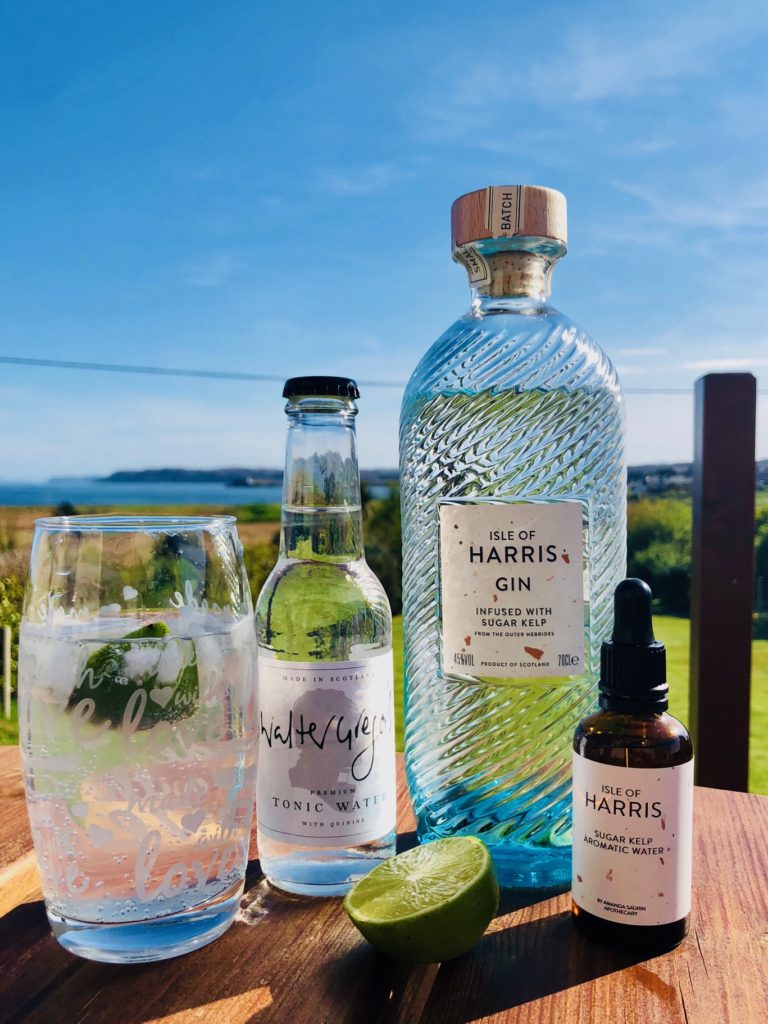
Ahhhh…Gin and Tonic never tasted so good.
We traveled primarily on Lewis the next day and I couldn’t believe the topography and how truly wild and raw it was. There were flat peat fields as far as the eye could see but also mountains in the distance. There were sometimes layers of mountain ranges, one right behind the other. We stopped several times to take some snaps and walk some beautiful, white sand beaches. We even stopped into Lewis’ only whisky distillery, Abhainn Dearg. It was a no-frills distillery. We couldn’t even find a body to give us a tasting! Still, glad we stopped to see it. The wind had begun to whip but we were also able to make a brief stop at the famous Luskentyre Beach on Harris. We even caught a brief glimpse of a couple of Luskentyre’s white ponies off in the distance. On the way back from Luskentyre, we made a small detour and stumbled upon a beautiful weaver’s shop. Truly the quality of the clothing was exceptional as was the interior of this rustic yet classic shop. Something about that shop made an impression on me but I couldn’t quite figure out what. Maybe it was the setting — on a hill besides the sea with a dozen or so skerries scattered about the bay and the sound of sea birds echoing amongst the rocks.
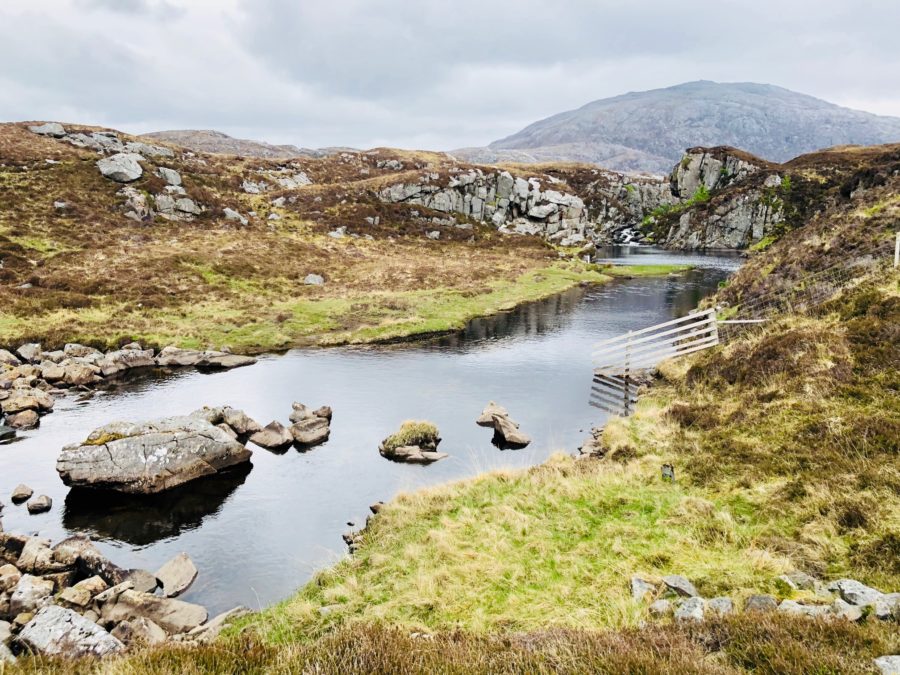
Wild Lewis
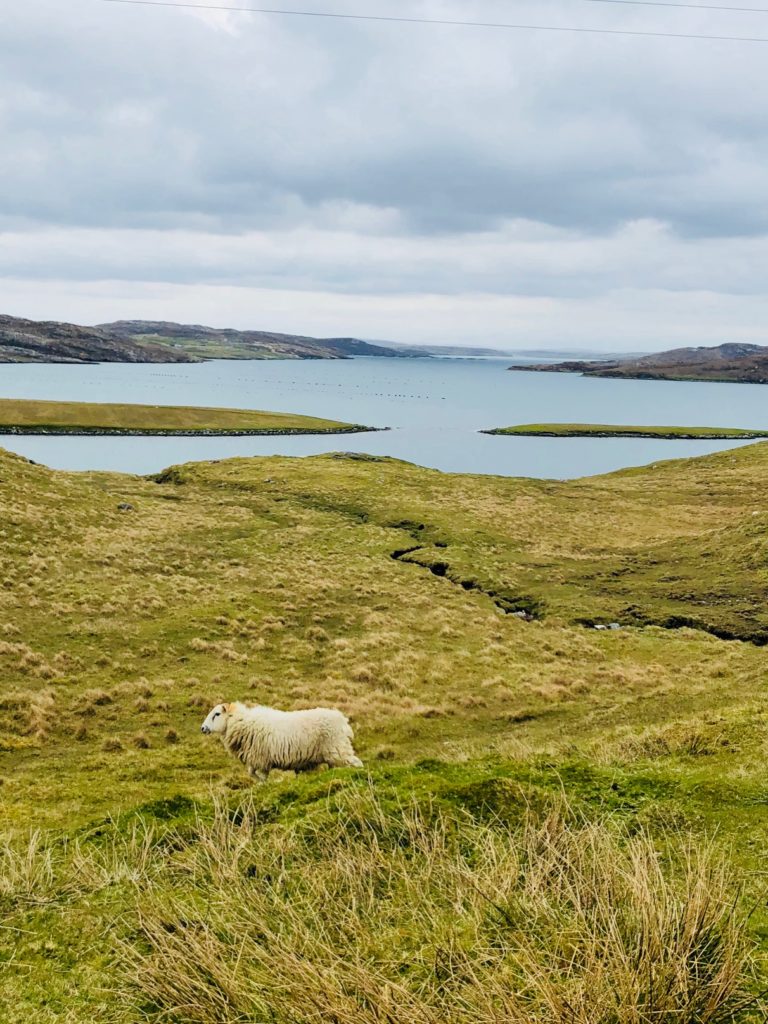
Peace on Lewis
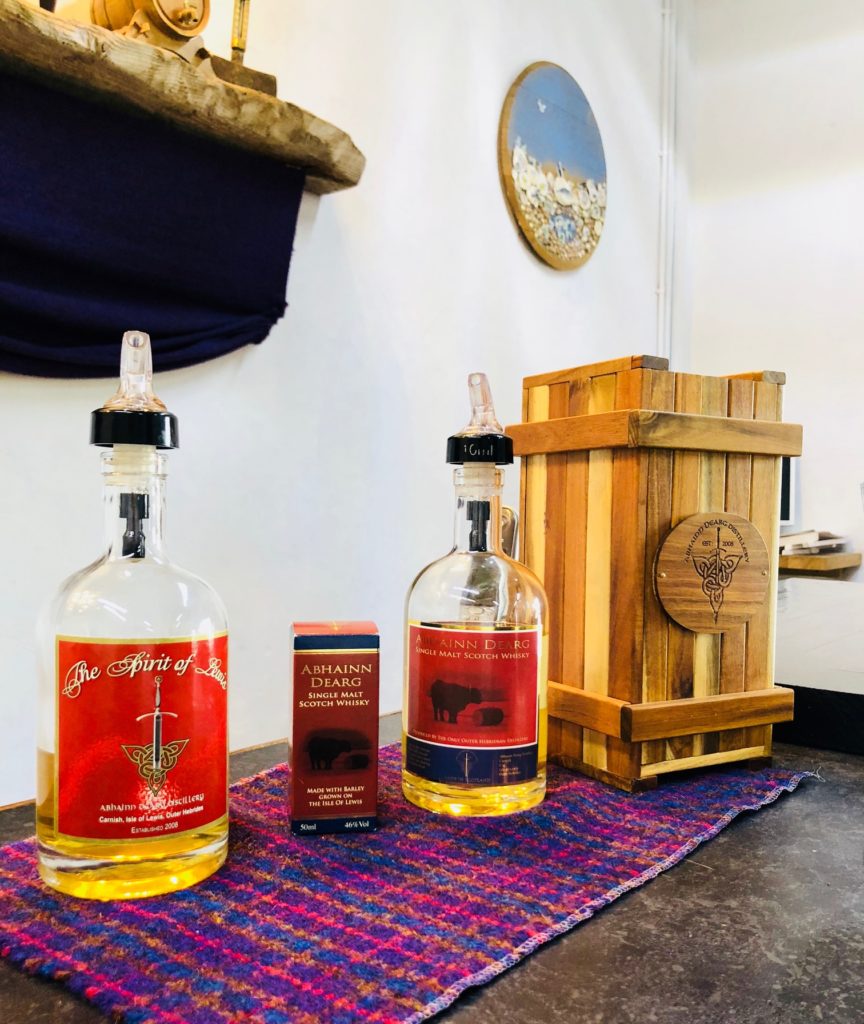
Distillery in the middle of nowhere
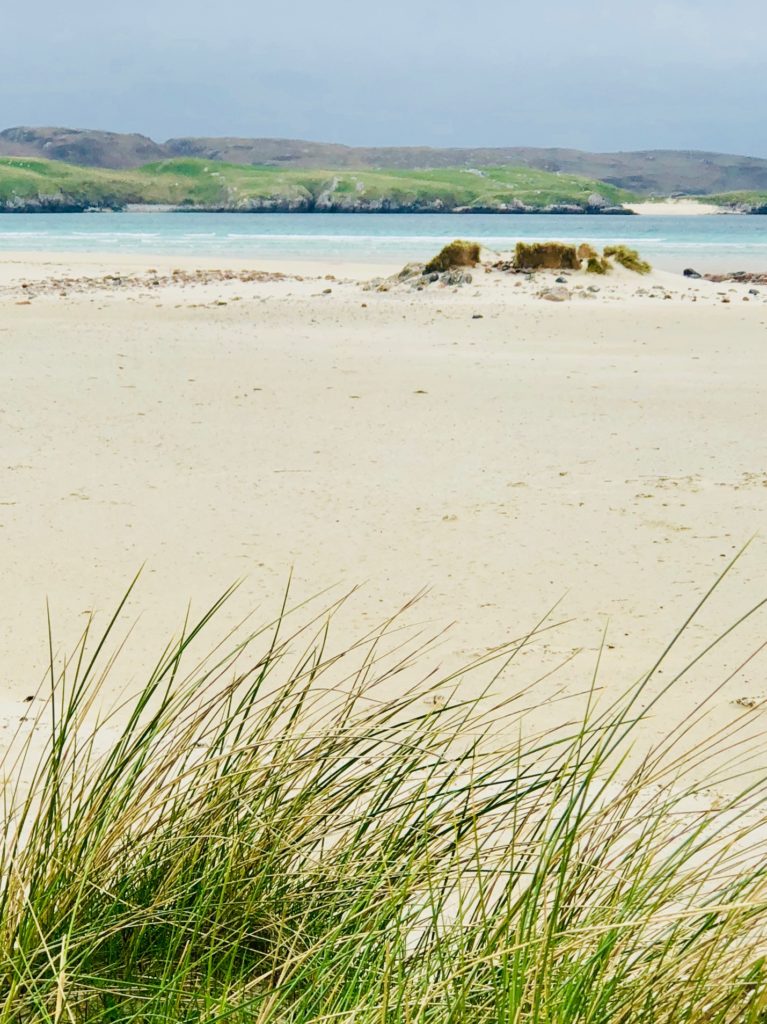
A Lewis Beach
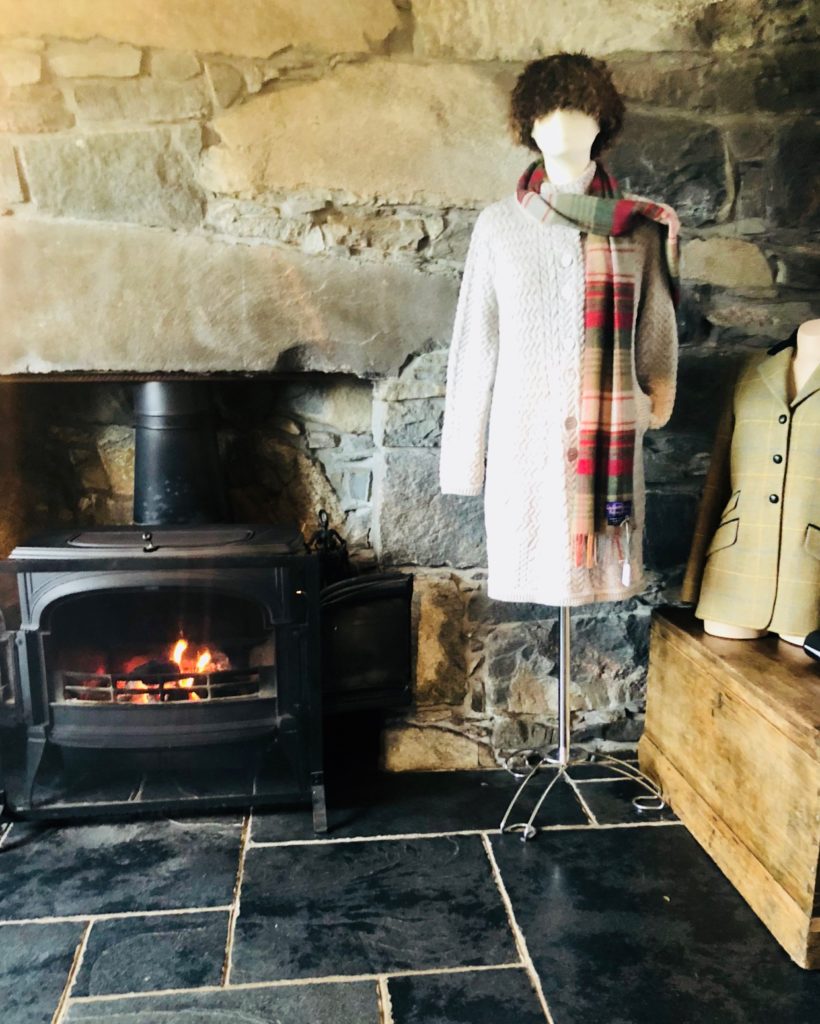
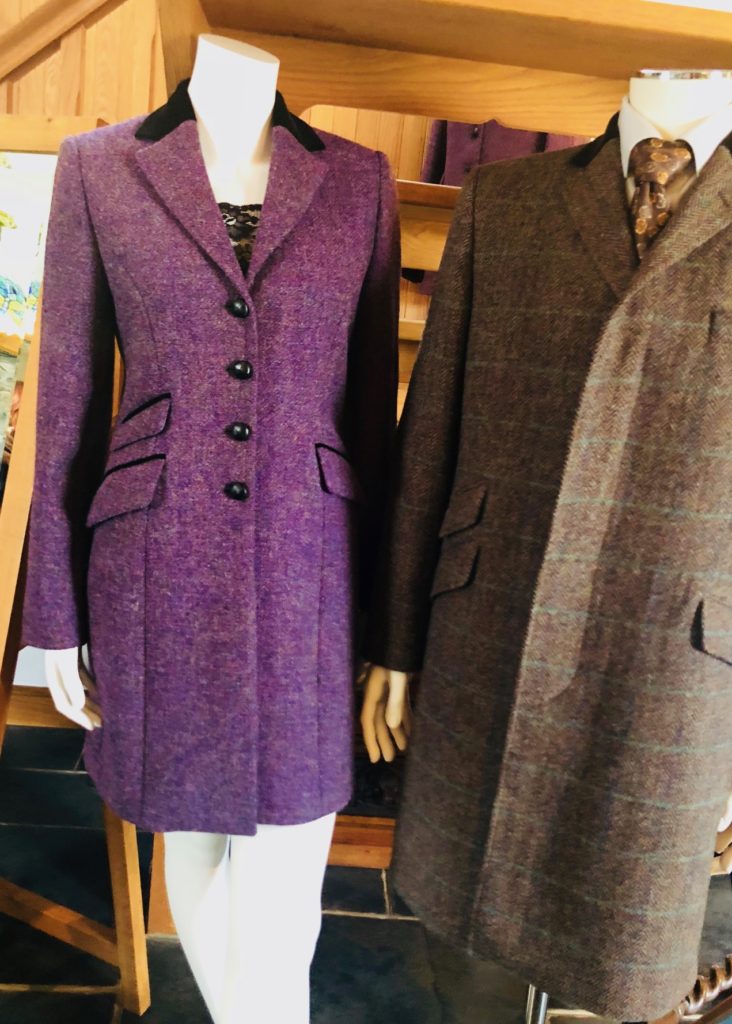
Catriona’s made-for-her coat
We set off the following day — now a total of 5 of us — still enjoying some mild, but blustery weather. First stop, the Callannish (or Calanais in Gaelic) Standing Stones on the west coast of Lewis. These 5,000 year-old stones were quite simply magnificent. Part of visiting any stone circle, I have found, is paying attention to the atmospherics that surround it. On any given day that could include the weather, the direction of the wind, the condition of the ground, the clouds, the sun and everything that makes up the ambiance that frames the structure.
On this day, it was slightly chilly and misty with a brisk wind blowing off Loch Roag just beyond the ridge above the circle. For me, this chilly, misty day made this mystical place seem even more intriguing. You could hear the whistle of the wind between the gaps in some of the stones as the mist blew in and out almost rhythmically. The site consists of 13 stones with a monolith near the middle. Five rows of standing stones connect to this circle and two long rows of stones run almost parallel to each other forming an avenue of sorts. Shorter rows of stones also stand to the west-southwest, south and east-northeast. There is a chambered tomb to the east of the central stone. As with most stone circles, the use and purpose of the stones is not entirely known although many theories exist.
A popular theory is that the stones were a prehistoric observatory. Others have different theories. Likely the true nature and purpose of the stones will never be known. In some ways this makes them even more captivating. I am sure I am not the only visitor to this ancient place who has made up stories about what actually went on there so many thousands of years ago. I would highly recommend the café at the Calanais Visitor Center where we went for lunch and to get out of the wind. It has a nice selection of cakes and sandwiches, soups and salads to satisfy most appetites as you simultaneously sit back and try to absorb the energy from visiting such a mysterious and peculiar place.
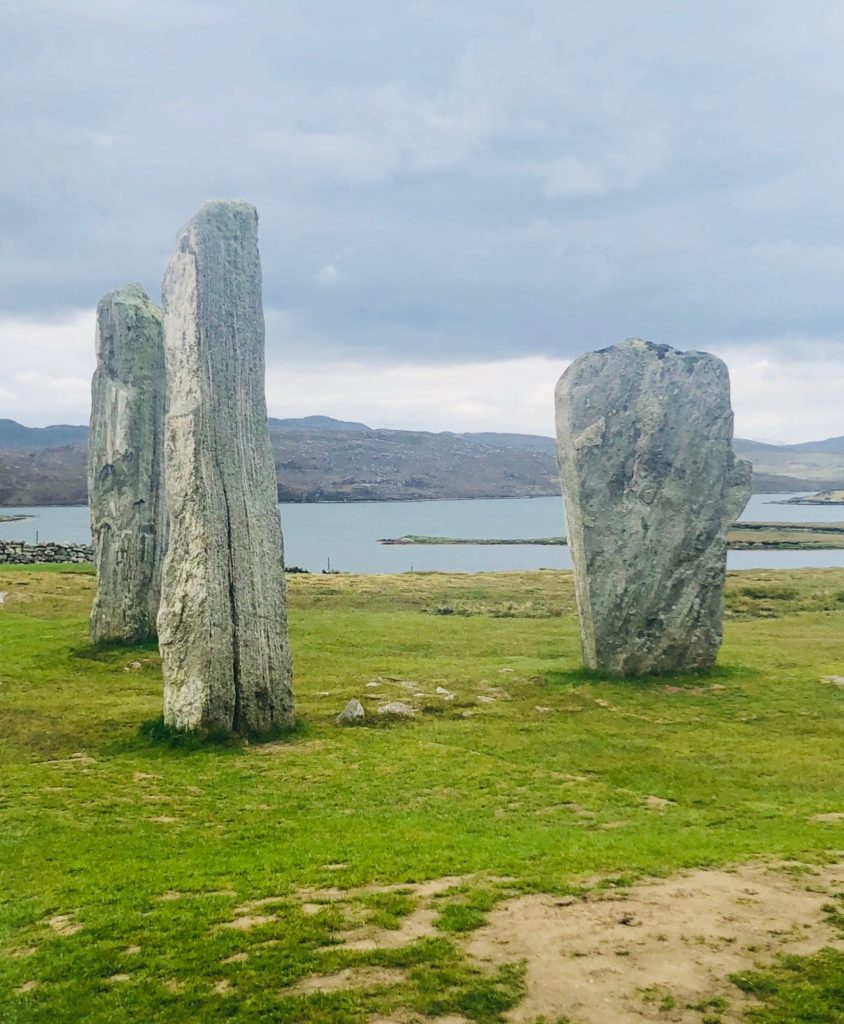
Callanish magic
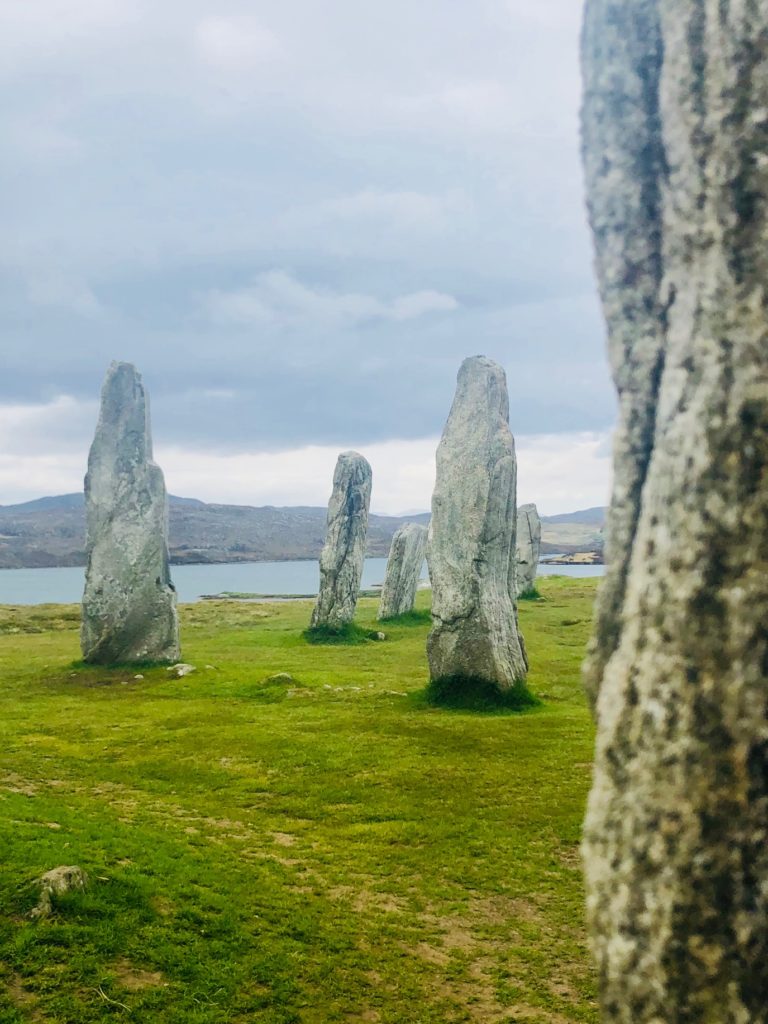
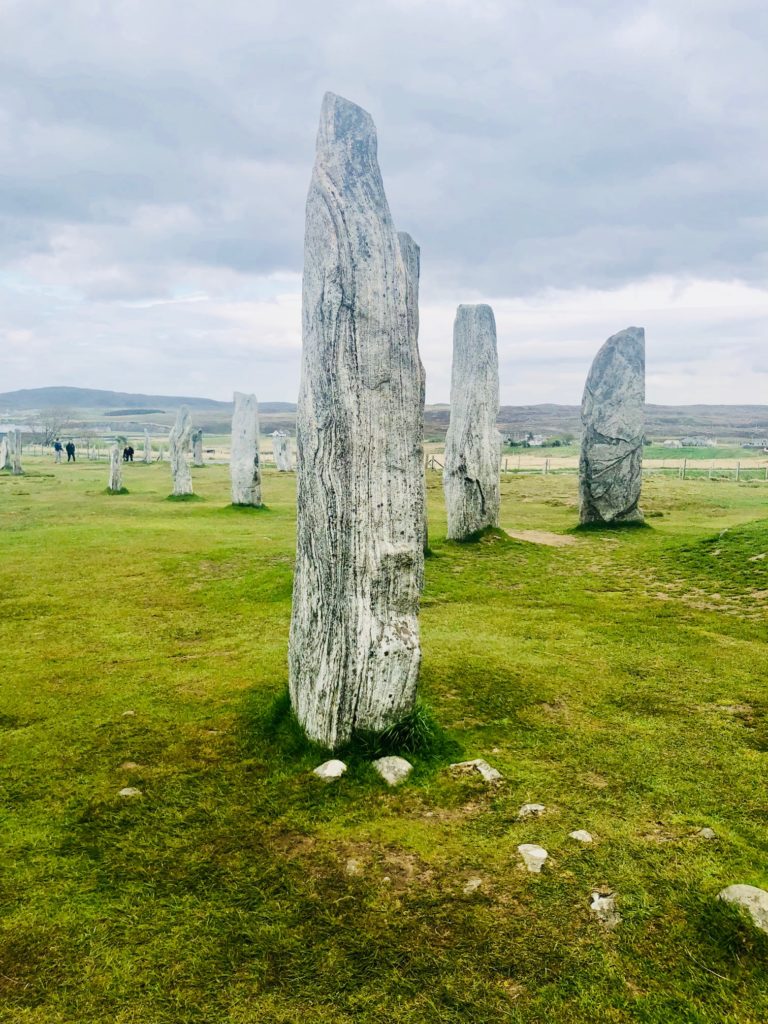
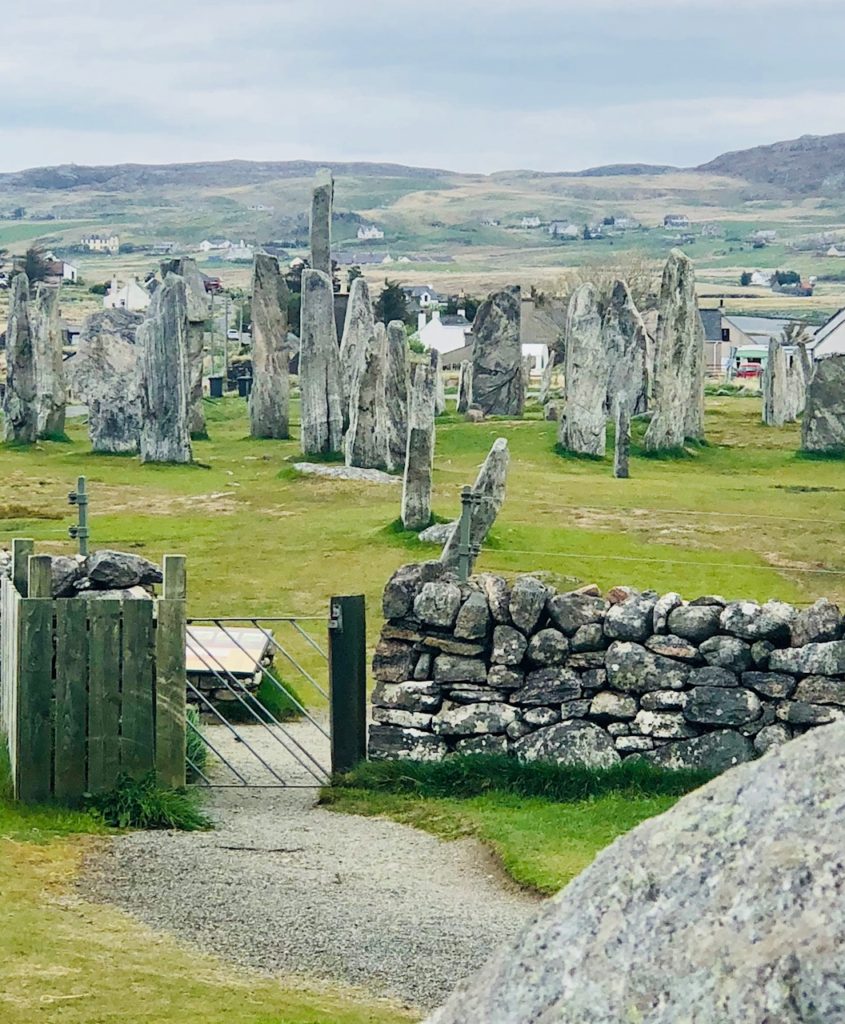
From Callanish, we headed to the north side of the island to see yet more ancient sites and some modern ones as well. We stopped at Dun Carloway, a massive but well-kept broch structure — the best-preserved broch in the Outer Hebrides.
Brochs are built of Iron-Age drystone and are hollow-walled. They are sometimes referred to as “roundhouses.” Some of the remaining sides of the Dun Carloway broch are as tall as 30 feet although its original height is unknown. The walls range from 10 to 12 feet thick. Most brochs were built between 100 BC and 100 AD and served multiple purposes. Brochs, or duns as they are referred to in the west of Scotland, were primarily defensive structures. But, there is also a theory that they were used as dwellings, sometimes for prominent families in the area.
Dun Carloway was the home of the Morrison clan in the early 1600s. That is until the rival MacAuleys took their vengeance on the Morrisons for stealing their cattle from the nearby isle of Uig. The MacAuleys smoked out the inhabitants of Dun Carloway and later destroyed a good portion of the broch. It was fascinating to walk inside the structure and see the remnants of what used to be layers of living space above. In many ways the broch didn’t seem to be a very hospitable place to live given its exposure to the wind and perched as it was atop a steep ridge. However, it would explain the use of the structure as a defensive fortress. Dun Carloway overall is an impressive antiquity and the stories it could tell, I could only imagine.
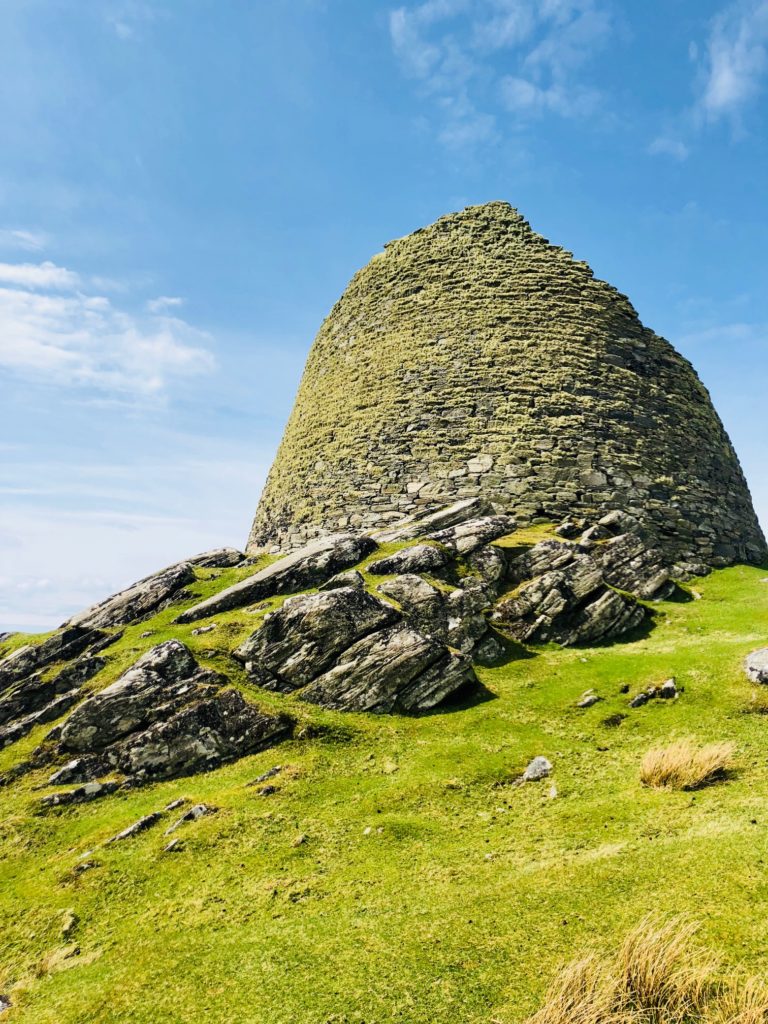
Remains of Dun Carloway
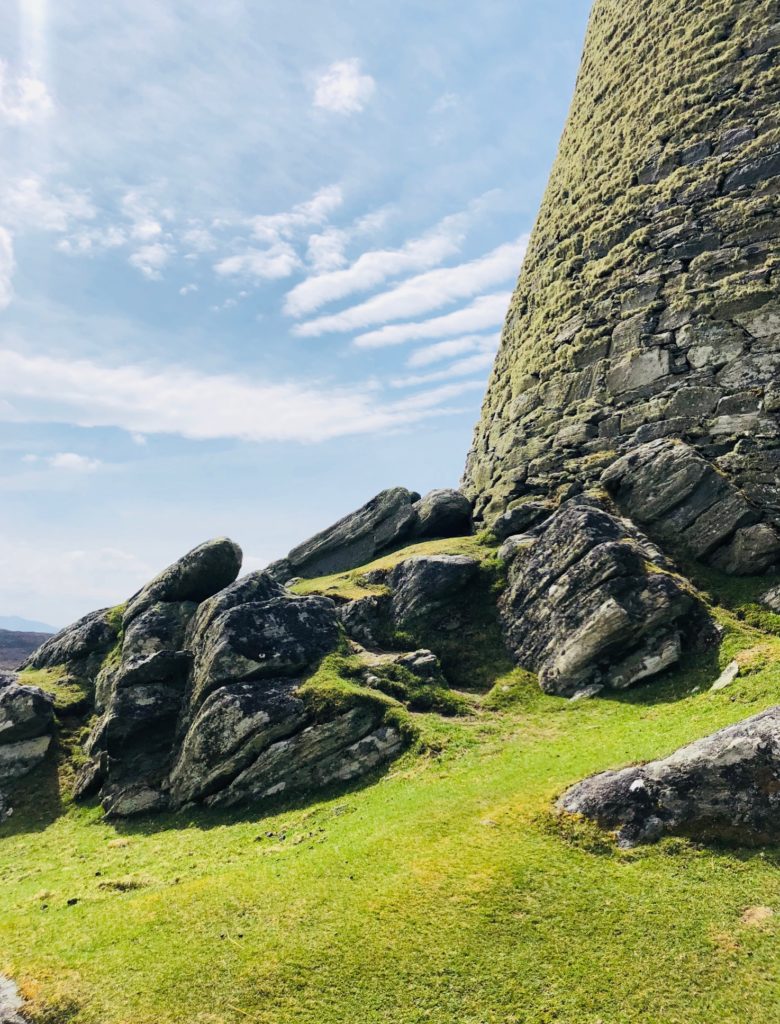
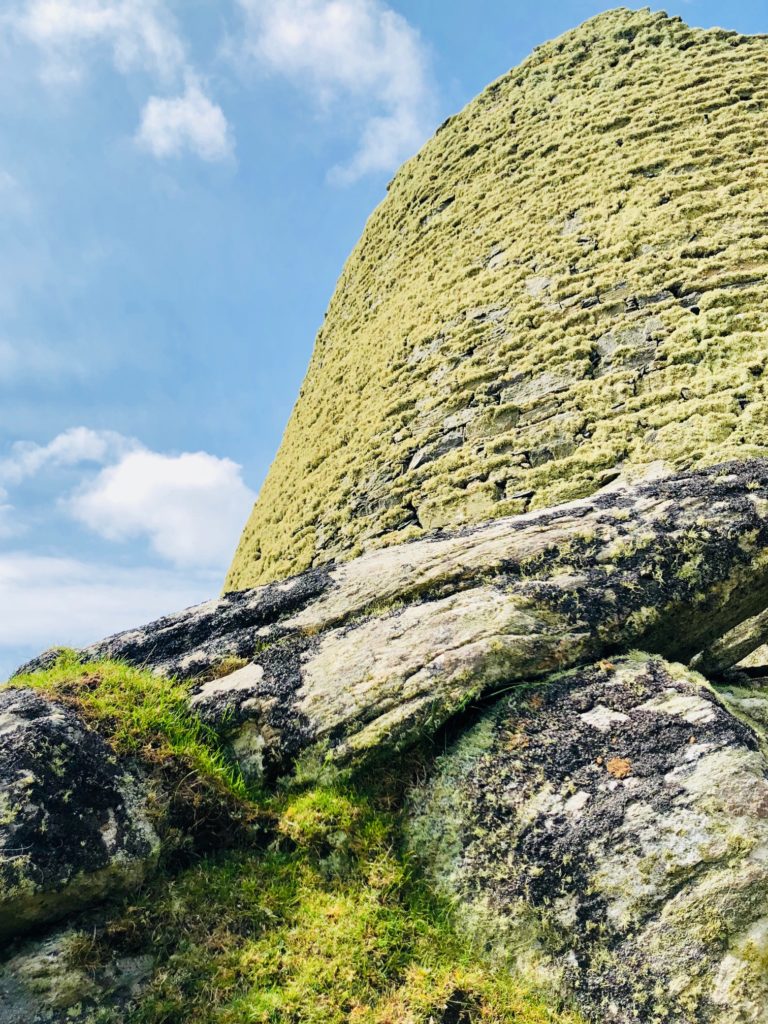
We left the Dun and continued up the road to see something that Helmut had told us about, the “Black Houses” at Arnol. These are more modern — 18th and 19th century — thatched dwellings common in the Highlands and the Hebrides. But, neither Helmut nor any of us could figure out why the specific term “black” was used when referring to these dwellings.
Apparently the origins of the term are still debatable. Some say there is some phonetic similarity between the Gaelic word “dubh” meaning black, and “tughadh” meaning thatch. Regardless, they are fascinating structures where families lived with their animals all under the same roof. People usually lived at one end of the long structures and their livestock on the other. The “No. 42 blackhouse” at Arnol has a peat-fire perpetually burning inside, much like the 18th century families had to keep warm from the oftentimes blustery and cold west coast of the Isle of Lewis. The peat fire also served as a means to keep the thatched roof dry and in good condition. Numerous black house ruins are at this site but No. 42 is the best example of what a house looked like as it’s been under the care of Historic Scotland since the 1960s when the last residents moved out.
Today, it is a living museum that you can walk through getting a very good impression of what it would have been like to live in a blackhouse. Numerous other structures are on the site, including the “white house,” a more modern (1920s) home that replaced the black houses.
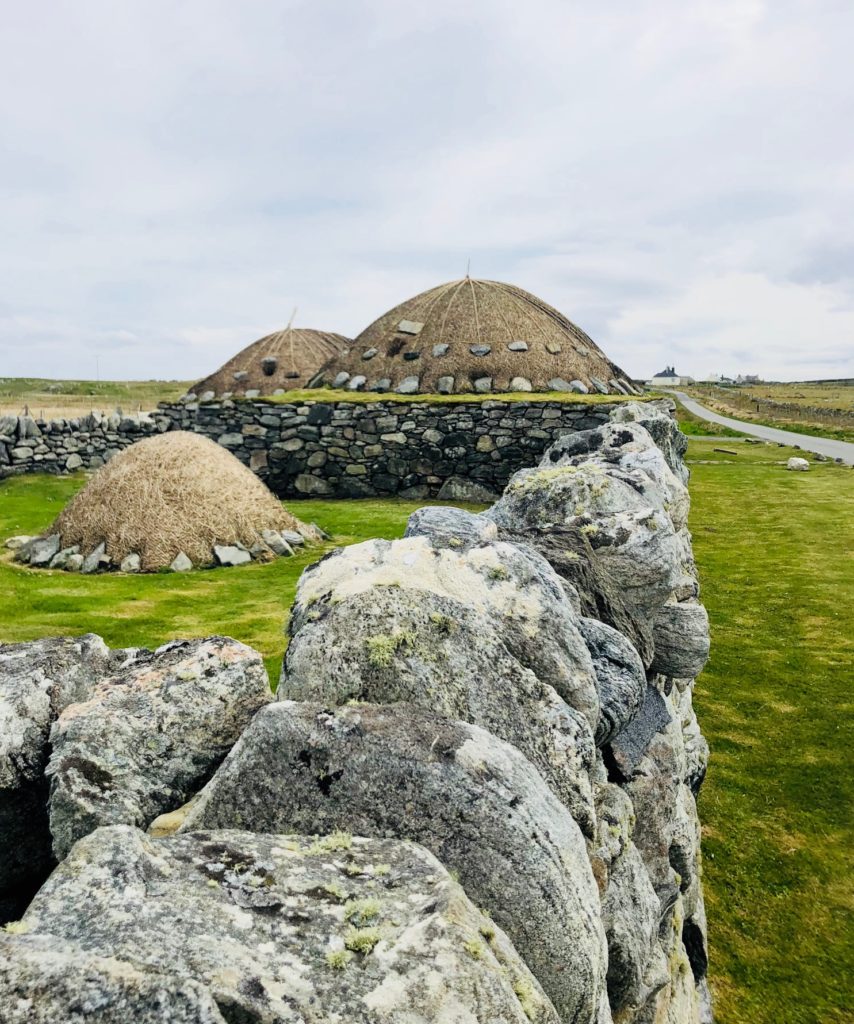
No. 42 Black House in Arnol
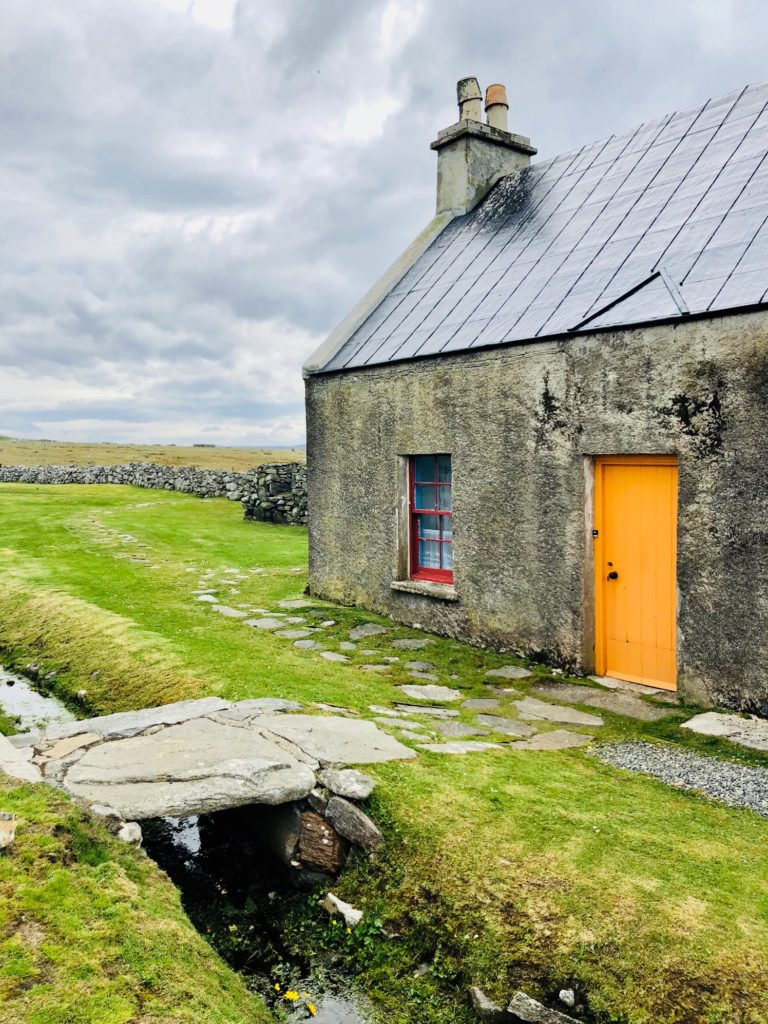
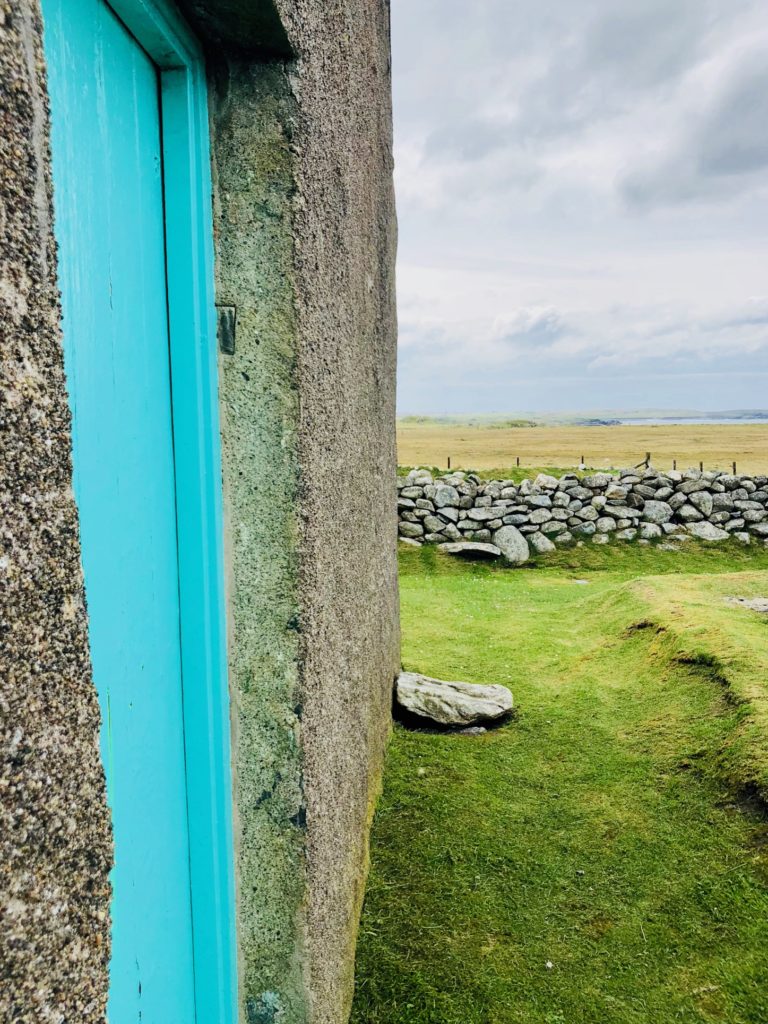
The back half of our long day traversing the Isle of Lewis was reserved for a few beach/coastal runs and a very special experience we were fortunate to stumble upon. Visiting a weaver’s mill was high on my to-do list when I made plans to come to Harris-Lewis. We knew they were everywhere but like many small, family-owned businesses they often do not keep regular hours and tend to be off the beaten track and not easily found. Driving down the road we noticed a few signs for the Carloway Harris Tweed Ltd. Mill, not to be confused with the much larger Carloway Mill.
After screaming at top decibel into poor Helmut’s ear to “turn here!,” we followed a single-track farm road to some basic homes and what appeared to be a glass fronted garden or croft shed. We were greeted by three very friendly black and white Border Collies milling about the property. We walked to the croft-shed and upon entering, realized we had hit the mother-lode. The weaver at Carloway Harris Tweed is Norman MacKenzie. Norman learned how to weave as a young boy from his uncle on the very same loom that sits inside the croft-shed today. Unfortunately, Norman was off-island the day we visited but his lovely wife showed us around.
One of the front rooms of the croft and one of the back rooms were filled with bolts of brightly colored tweed and baskets of scarves in every pattern you could imagine — houndstooth and blackwatch and bright pinks and yellows and blues. Norman is one of the last weavers still using the historic Hattersley single width loom to produce this hand-spun iconic textile. I was mesmerized by the bits of tweed we could see on the two looms in the croft — not yet completely spun and just waiting for their master to return, almost in a state of suspended animation. Being in that croft was almost a religious experience for me. ONLY on Harris and Lewis can this cloth be woven and stamped with the Orb trademark signifying genuine 100% Harris Tweed wool. Nowhere else in the world could authentically produce this striking textile. And, we weren’t standing in a store or a shop. We were standing where the cloth had its origin and where all the thousands of strands of brightly hued wool came together in a symphony of color and unique patterns.
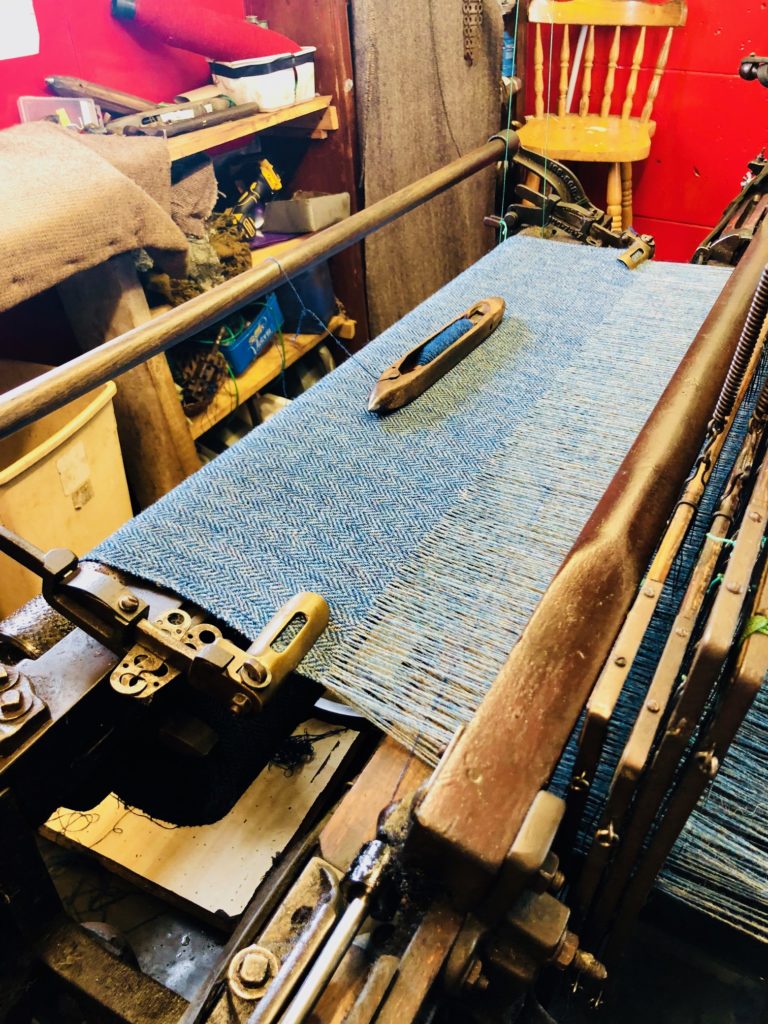
Norman MacKenzie’s Hattersley Single Width Loom

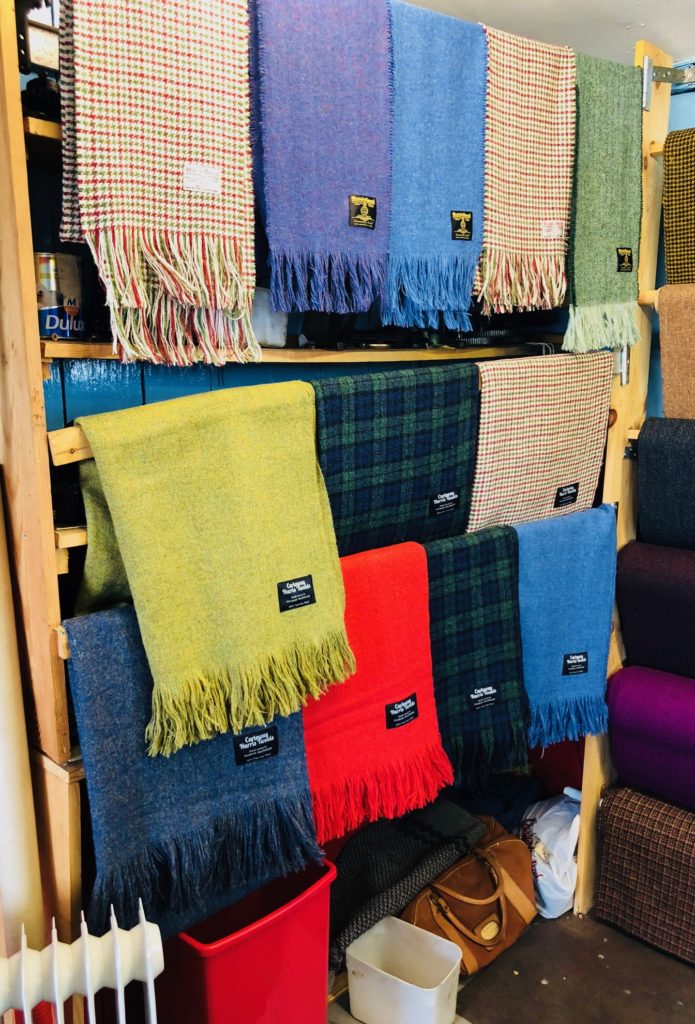
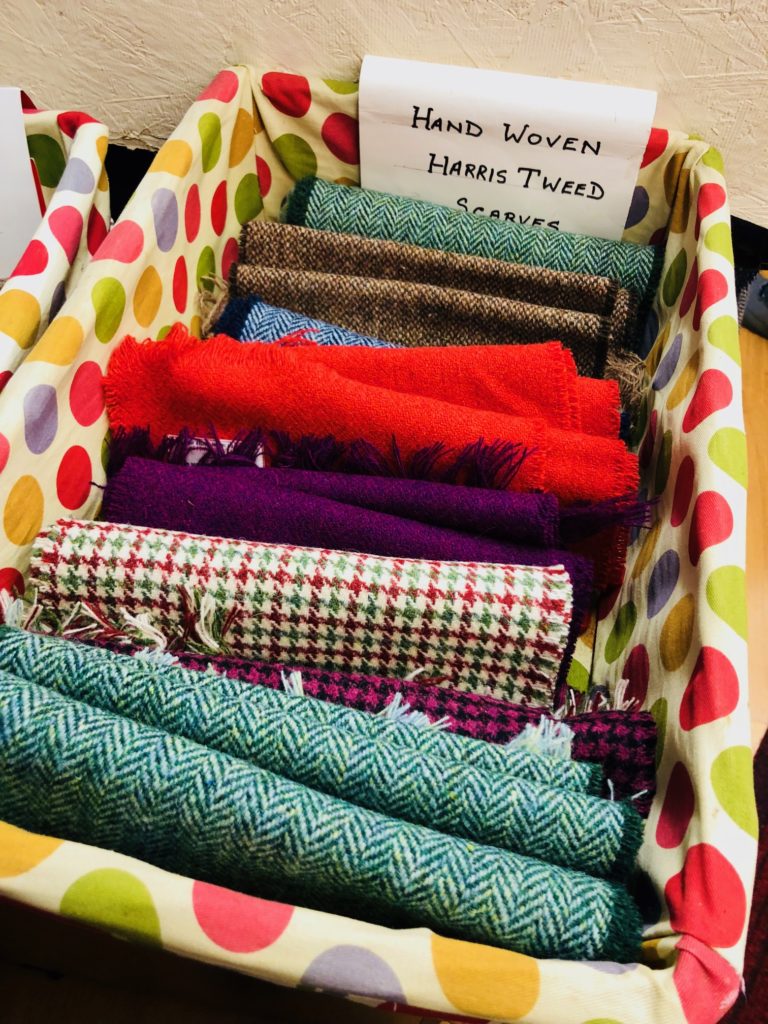
Gasp!
We ended our day with a drive to the most northern part of the Isle of Lewis, referred to as the Butt of Lewis. The lighthouse there is massive and the sea cliffs below are craggy and steep with the wind was blowing at least 10-15 miles an hour, making securing a spot for photos treacherous. The sea was a deep azure blue with bits of aqua green mixed in amongst the white swells that crashed and splashed against the rocks. With the wind doing its worst, we felt the spray from the sea colliding on the rocks some 50-75 feet below. The power of nature was on full display and it was thrilling, slightly dangerous but also strangely comforting. As we made our way back towards Stornoway you could feel the atmosphere starting to shift. A storm was coming and some rain.
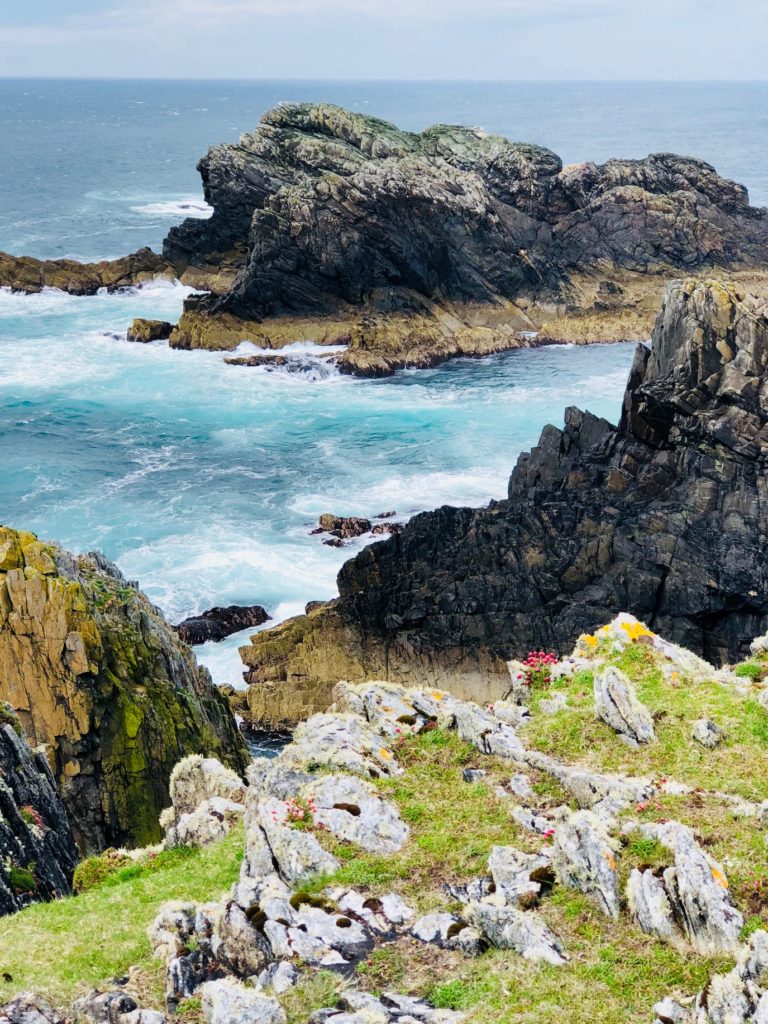
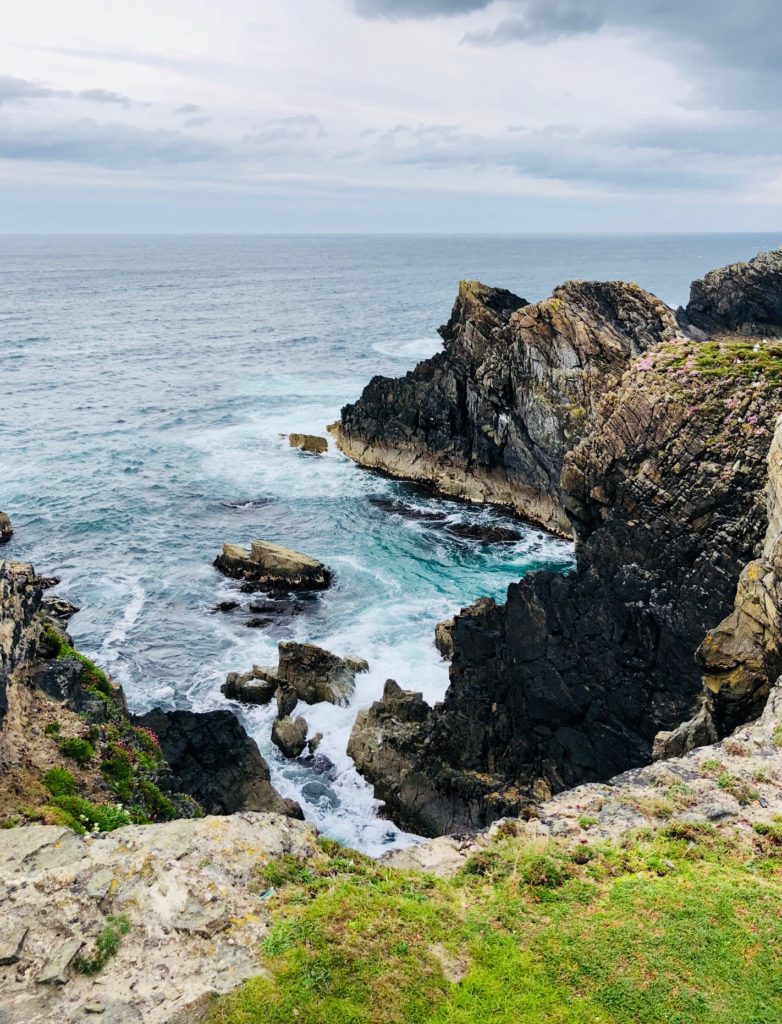
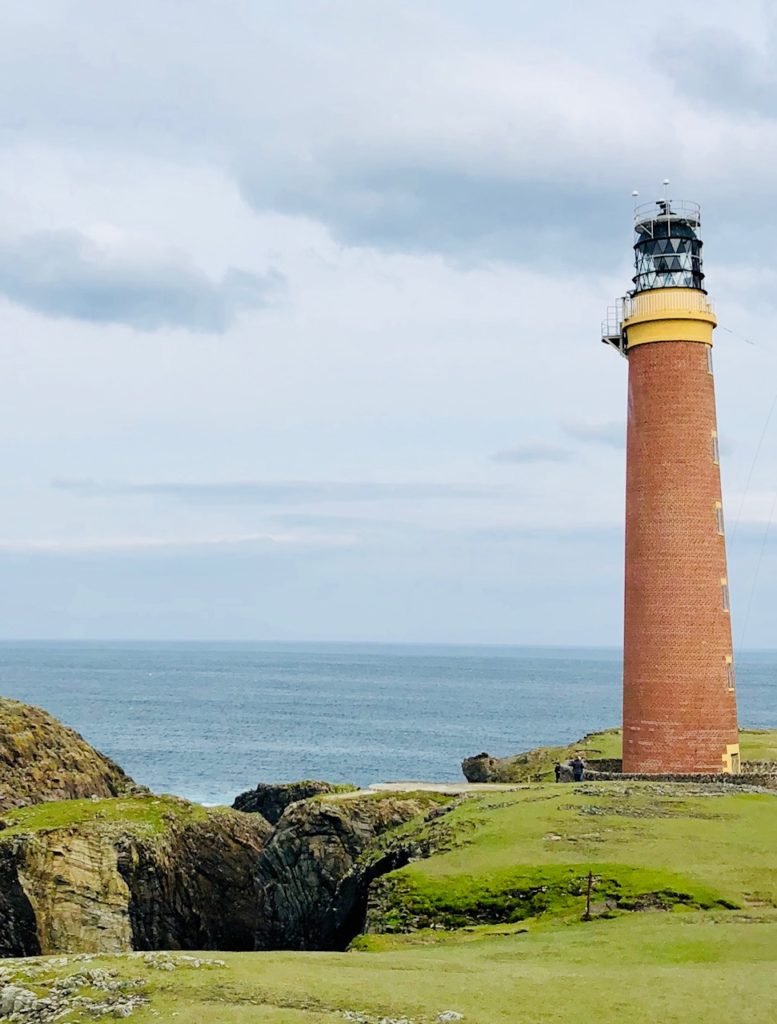
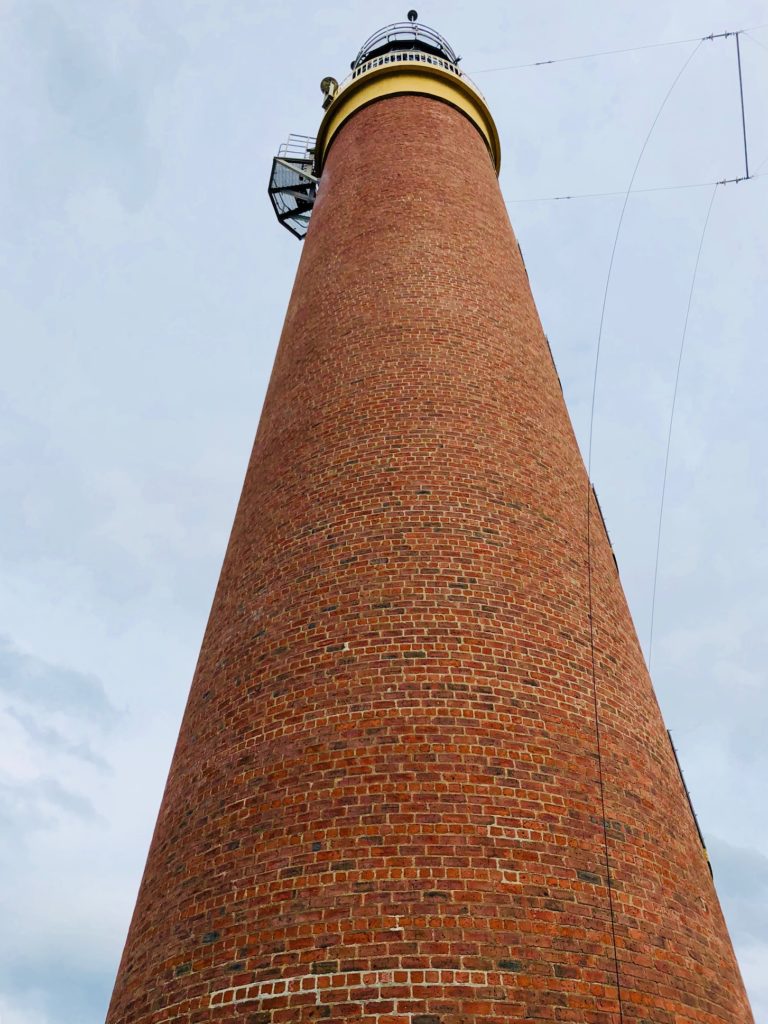
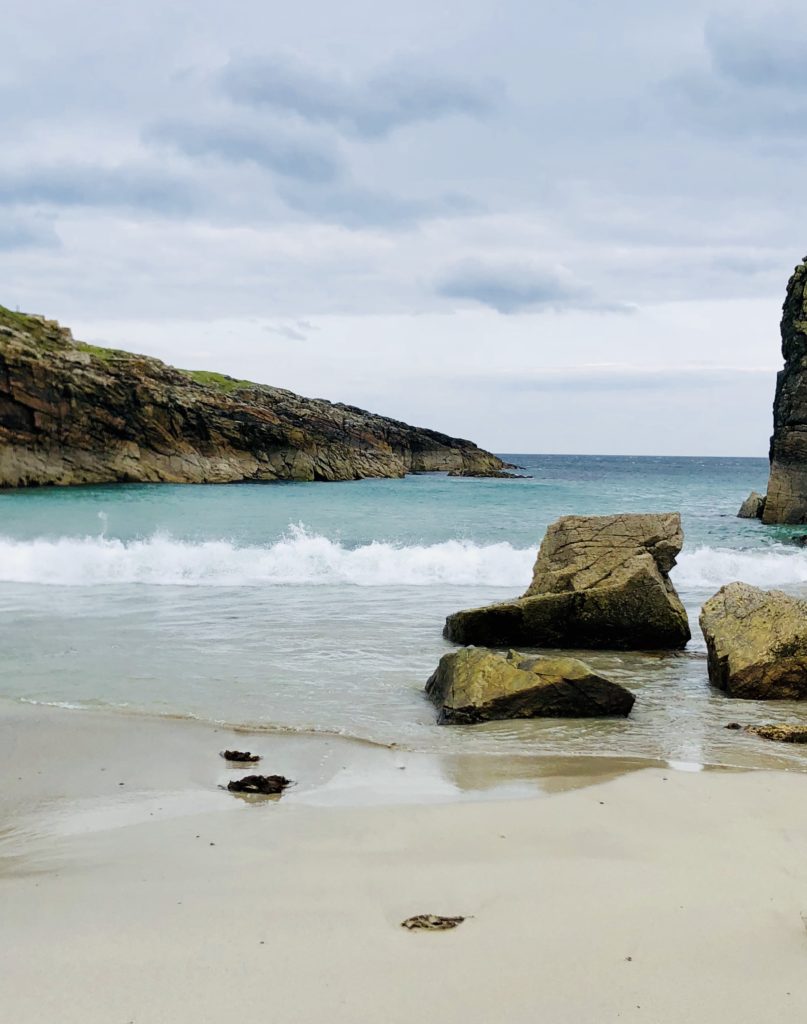
Another spectacular beach near the Butt of Lewis
The following day was the kind of chilly, Scottish island day you read about. I loved it. But, I was grateful to my traveling companions who recognized that the chest cold I had been battling since my camping trip on Skye was the perfect excuse for a long lie-in in the morning and a day relaxing at the cottage listening to the wind howl and the rain fall. A day of rest and a quick trip into Stornoway for “Sunday Lunch” was perfect. Also, it allowed me to fit a very serendipitous visit in with Megan Macdonald from Sandwick Bay Candles who, it turns out, lived only a hundred yards or so from my cottage.
We connected via Facebook after I had posted online about our stay near Stornoway. Prior to coming to the island, I knew of Megan and her amazing story of how she came to be on Lewis/Harris to start her business. But, I didn’t think I would find her right up the street from me. I am so glad Megan and I had a chance to meet and, lucky me, I came away with some of her wonderful, hand-poured soy candles. Even as the rain continued and the forecast looked grim, we made plans that night to head north the next day to Harris and a church ruin I had read about. We also wanted to show Tony and Doreen some of Harris’ wild beaches and windy coastal roads. Helmut and I were also counting on stumbling across a few more stone circles.
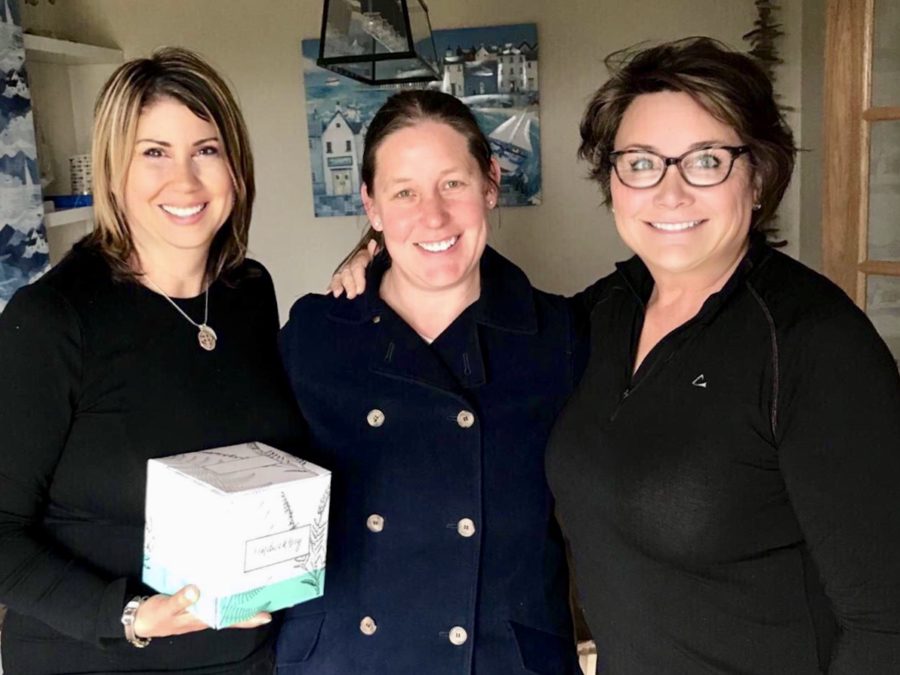
Doreen and I with Megan Macdonald of Sandwick Bay Candles
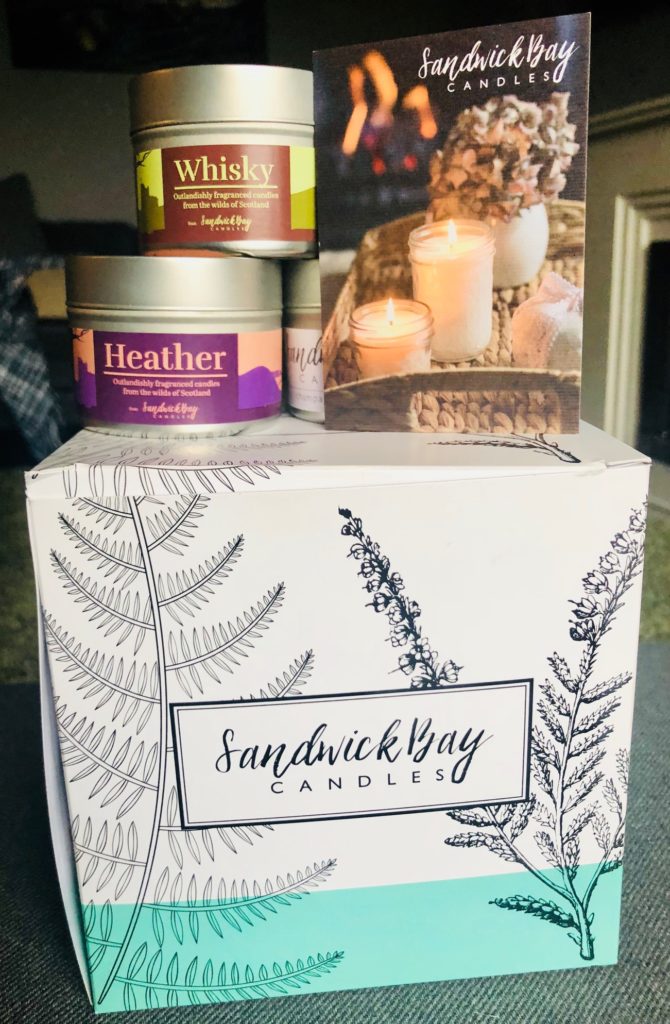
The next day we layered up with our rain coats and started off in the direction of Harris to see St. Clement’s Church and kirk yard in Rodel near the southern-most tip of Harris. The ruins and graveyard were stunning made more so by the cold, wet and windy weather. I will say the inside of the church was so damp and bone-chilling cold that it gave me a bit of an odd feeling. I couldn’t really shake it and would come to find out later that perhaps we weren’t alone that day. I believe some spirits joined us but wouldn’t realize it until later that night when I was perusing photos and noticed a few very odd images. Catriona frequently encounters ghosties as she travels around to some of Scotland’s historic sites as part of her “day job” as a tour guide. It wasn’t until I showed her the photos that she and I realized that the feelings we both had that day at St. Clement’s (and in Cat’s case, voices, too) were not a phenomenon of this world.
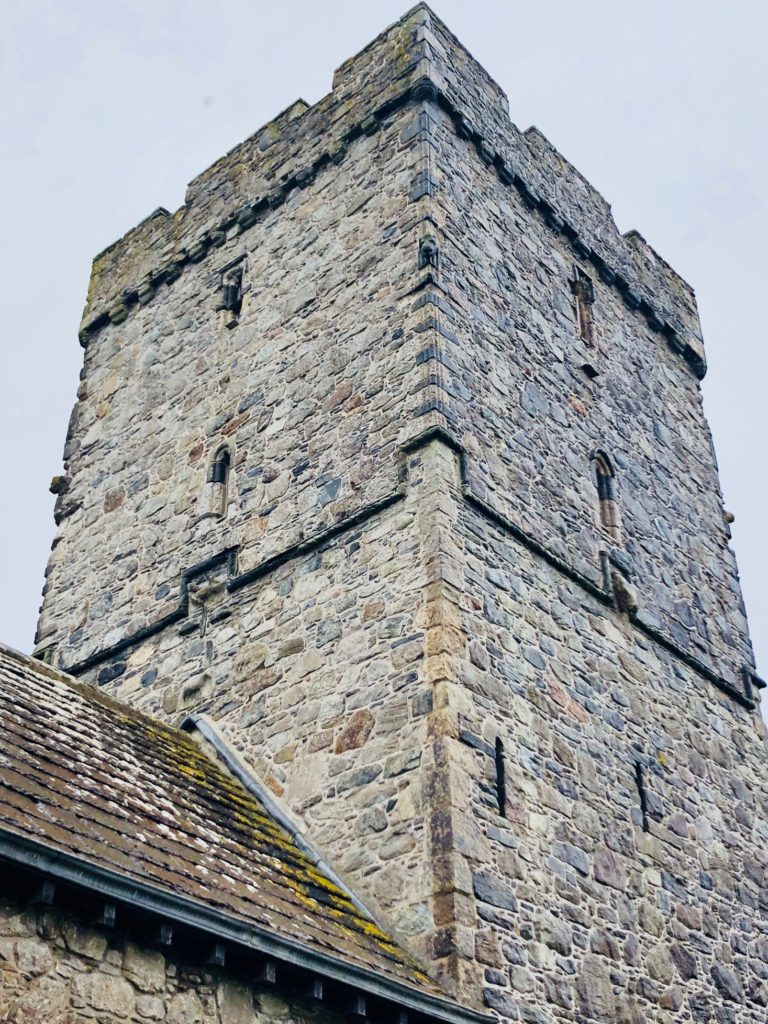
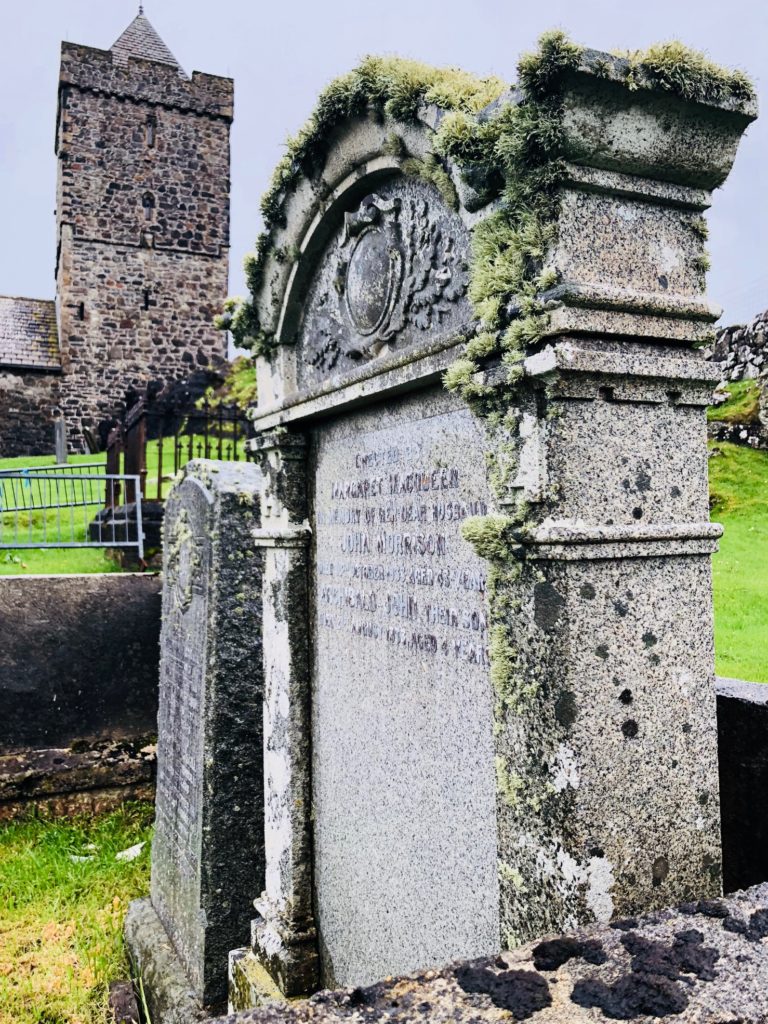

Three more tweed coat purchases later, a quick visit to the Harris Tweed Museum (excellent and worth the stop), a wee wander to Callanish II stone circle for Helmut and I, a tasting/tour at the Harris Distillery and it was a wrap on our last full day on Harris/Lewis. I was truly blown away by this spectacular island filled with so much history, industry and dramatic scenery.
We set off the next morning across the sea back to the mainland and to the seaside village of Ullapool. The next day we planned a trek to a famous beach and to experience some of the north-west Highlands before heading to the ancient island of Orkney. More active adventures awaited.
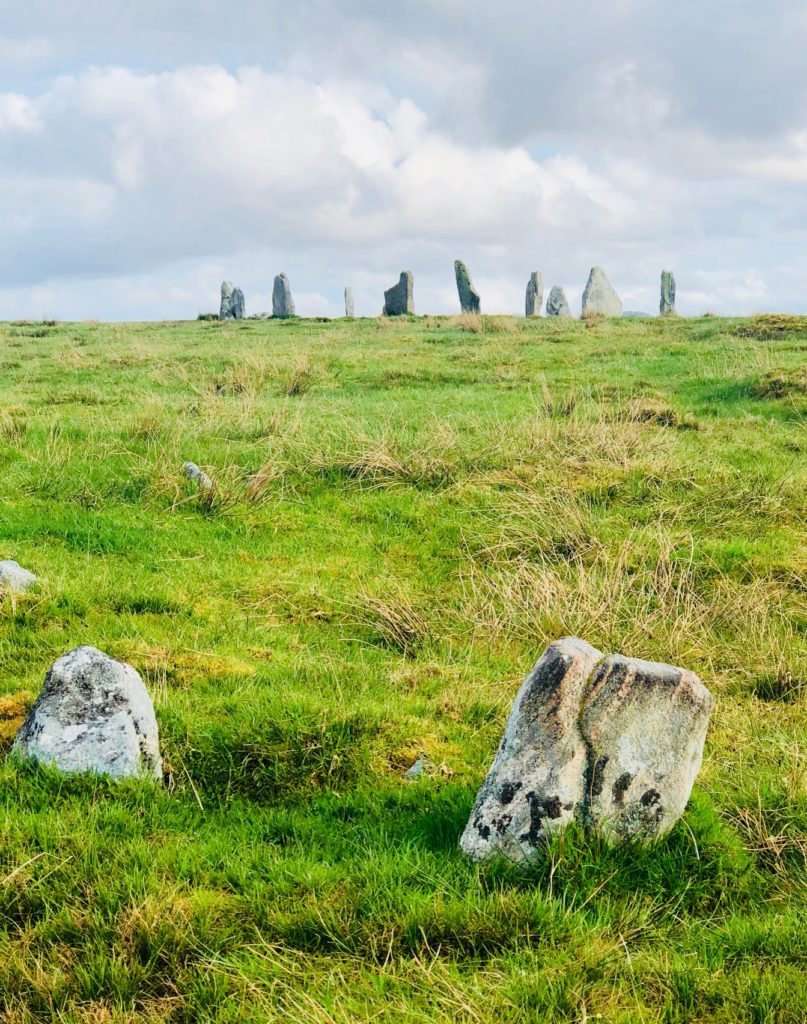
Calanais II — just north of Callanish 1 — amazing!
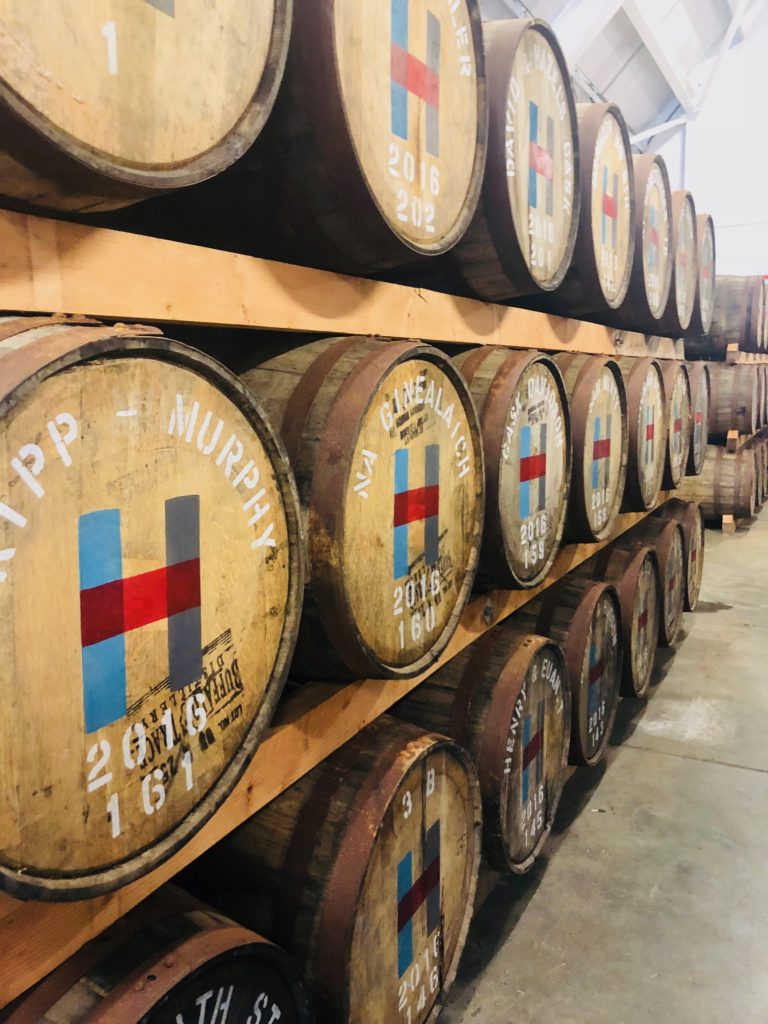
Whisky barrels at Harris Distillery
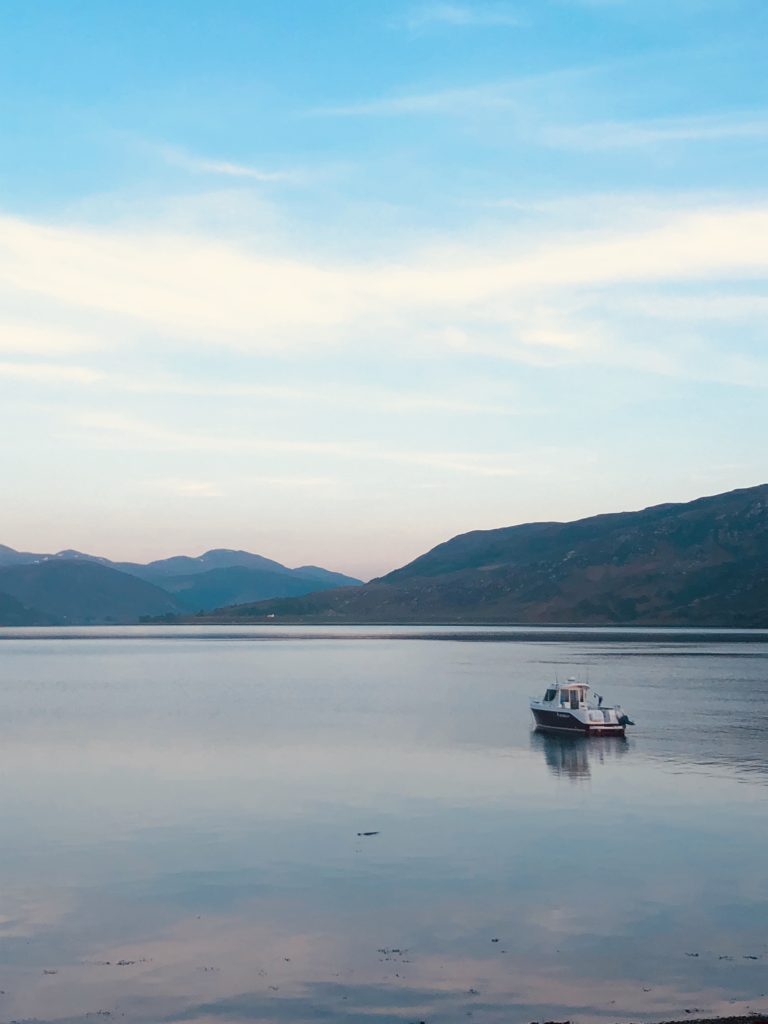
Our first dreamy night in Ullapool
Northwest Highlands
My Scots friend, Dave Lawson, put it in my head ages ago that a trip to the north-west Highlands wasn’t complete without a trek to Sandwood Bay. I was game as were Doreen and Tony and our friends, Rhona Walker and Colin Bell, who met us in Ullapool and would be joining us for the journey to Orkney. What a stunning drive through a part of Scotland I hadn’t much thought about prior to being there. Gorgeous sea views on the way out of Ullapool and then mountain vistas on either side of the roadside and very little civilization the further north we drove. The weather was warm. Very warm. Unusually warm. But, I certainly wasn’t complaining about the dizzy blue skies and sunny haze as we got ready to start our walk to the Bay.
The Vikings named this place sand-vatn, or sand water. It is a 4 ½ mile walk to the Bay and to a mile of wide, pinkish sand flanked by massive sand dunes, a loch, impressive cliffs and a 328-foot high sea stack on the bay’s southernmost tip. You need to expend some time and real effort to reach this secret place. It is a rather unremarkable walk although is anything ever truly unremarkable in Scotland? There were small sea bogs along the way, briskly running streams, lochans, and vast moorlands with mountain ranges in the distance.
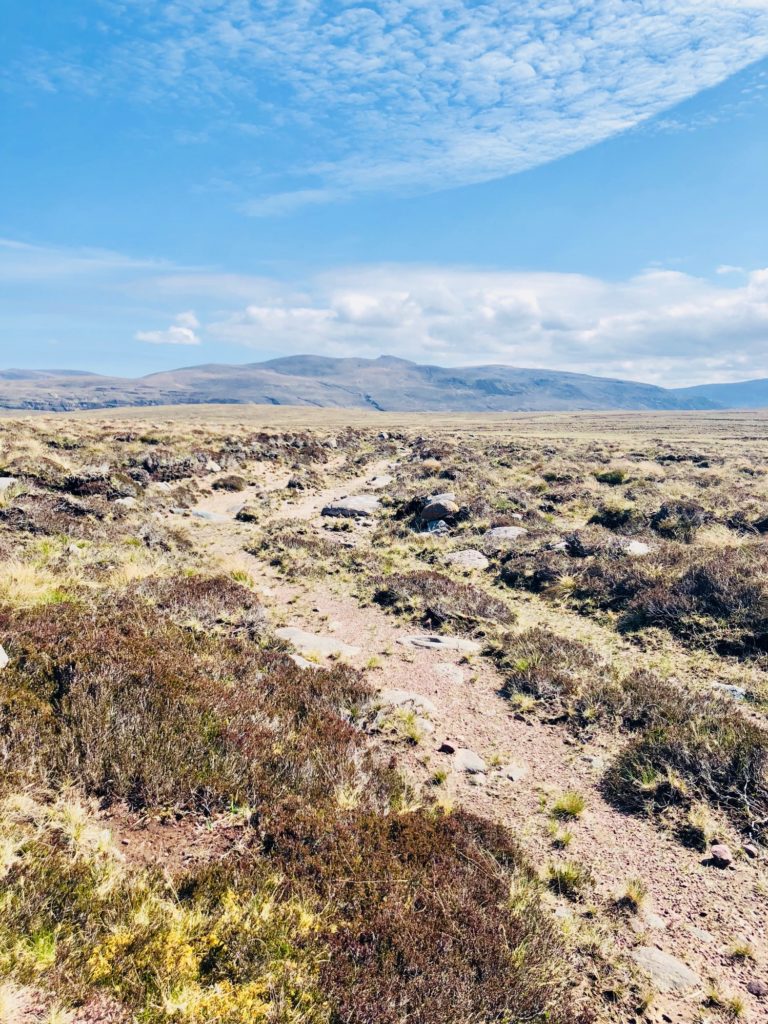
The way to the Bay
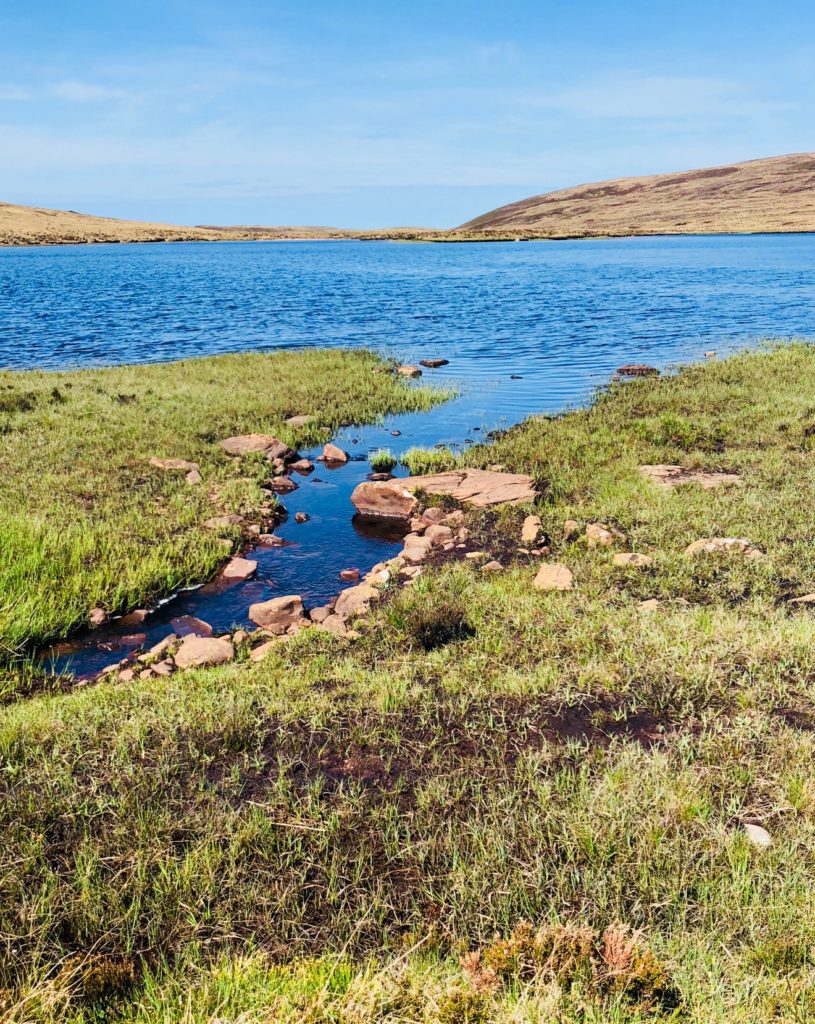
Lochans and streams on the way to the Bay
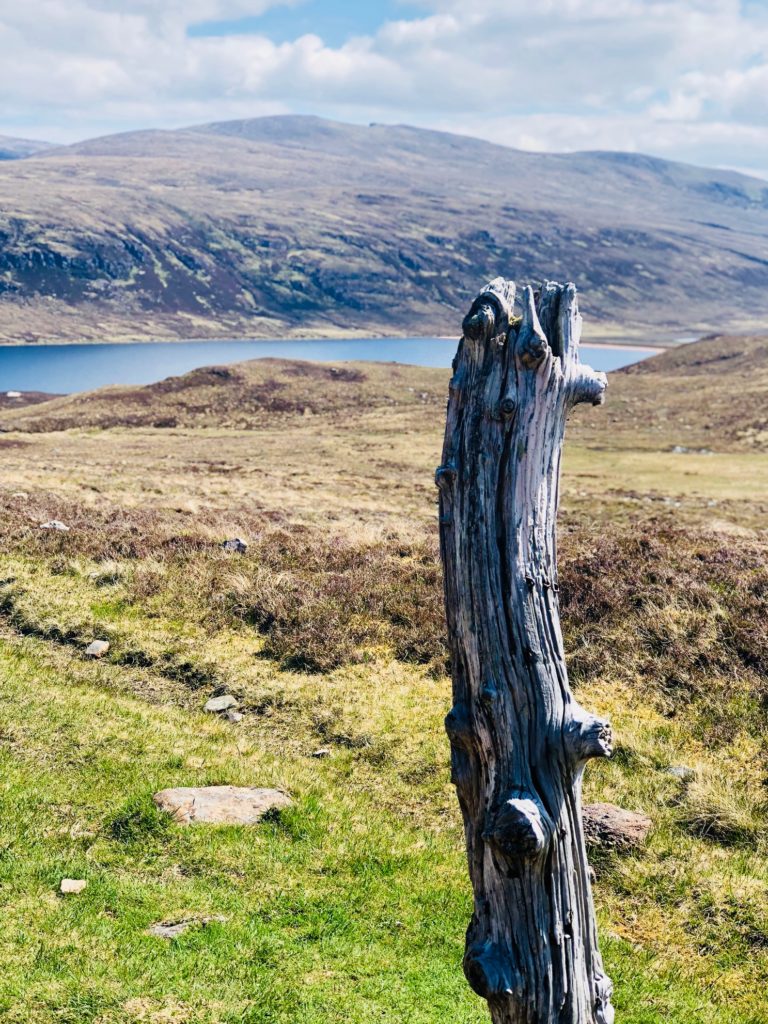
The anticipation was palpable as we plodded along wondering if we would catch our first glimpse of the legendary beach around the next corner. It appeared we were close when we came upon the ruins of Sandwood Cottage across the moors. The roofless gables of the dilapidated structure looked sad and desolate sitting by itself about 75 meters from the path. We forged ahead and finally ascended a small hill to see before us the crashing seas and wide expanse of Sandwood Bay. We were so happy to finally reach our end-point but effort was still required to make our way down the steep dunes to the beach. Once there, we all fanned out to explore. I spent my time just sitting, staring and snapping photos. The seas of the North Atlantic crash relentlessly against the shores here. Just north of the Bay lies Cape Wrath, aptly named for the wild seas that have shipwrecked hundreds over the years. There is no shortage of folklore surrounding Sandwood Bay. Many claim that it is a gathering place for mermaids and that ghosts of shipwrecked seamen are seen wandering the dunes. Some recent tales tell the story of a black-bearded sailor seen aimlessly roaming the grassy dunes.
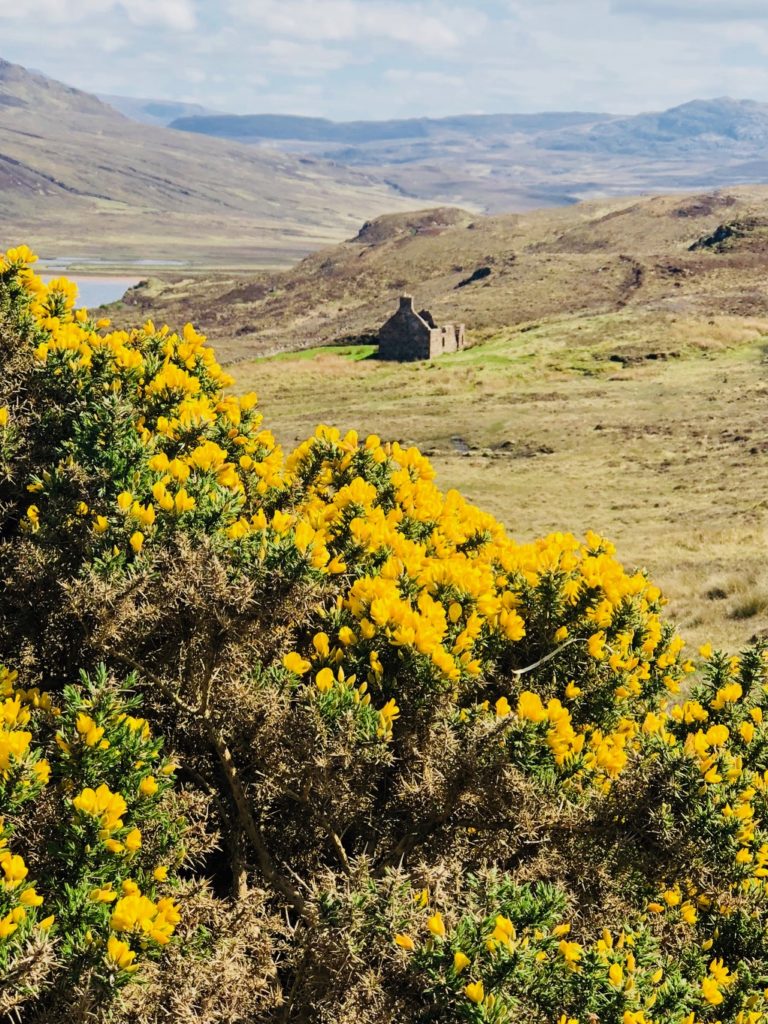
Sandwood Cottage ruins
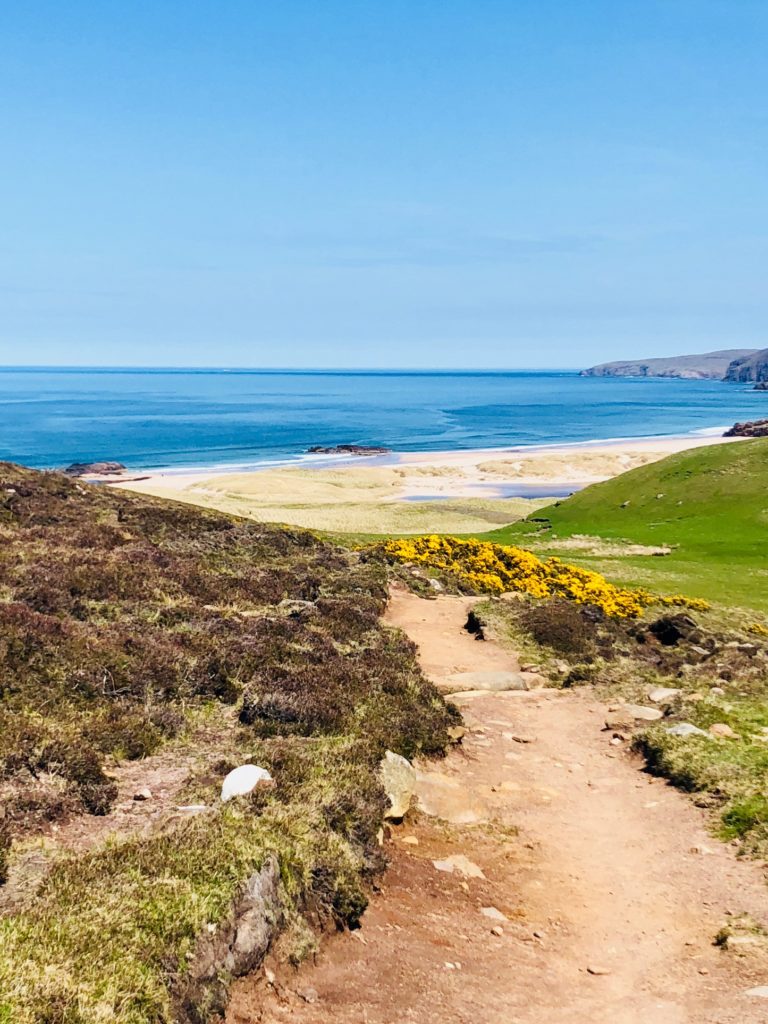
We made it!
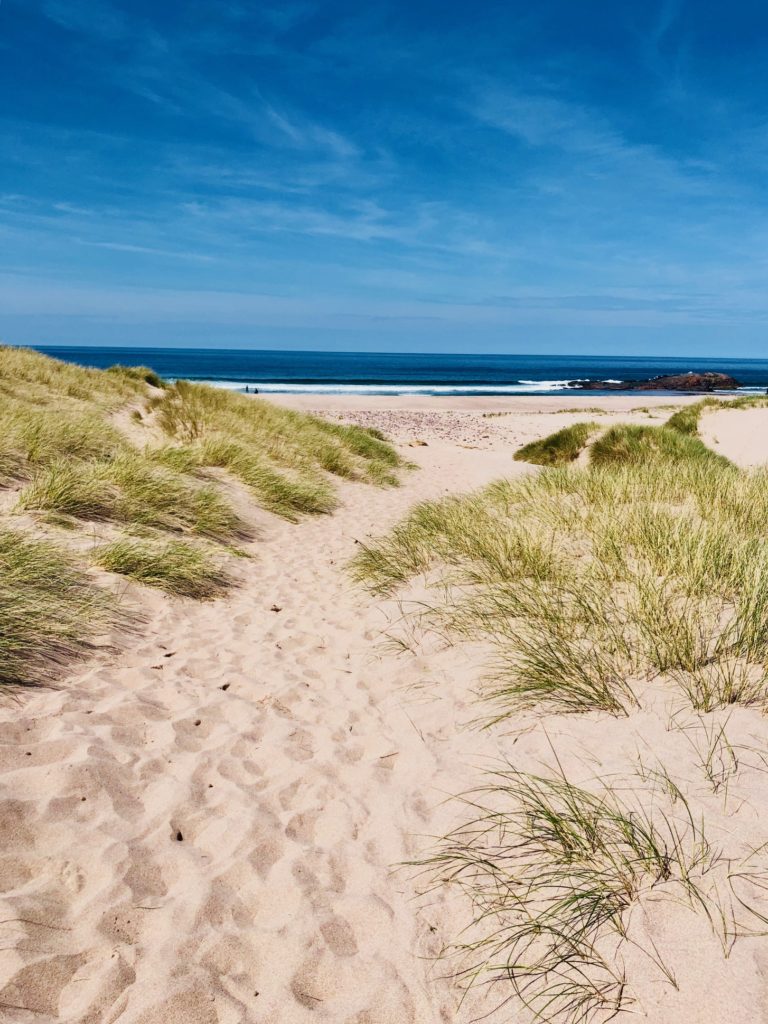
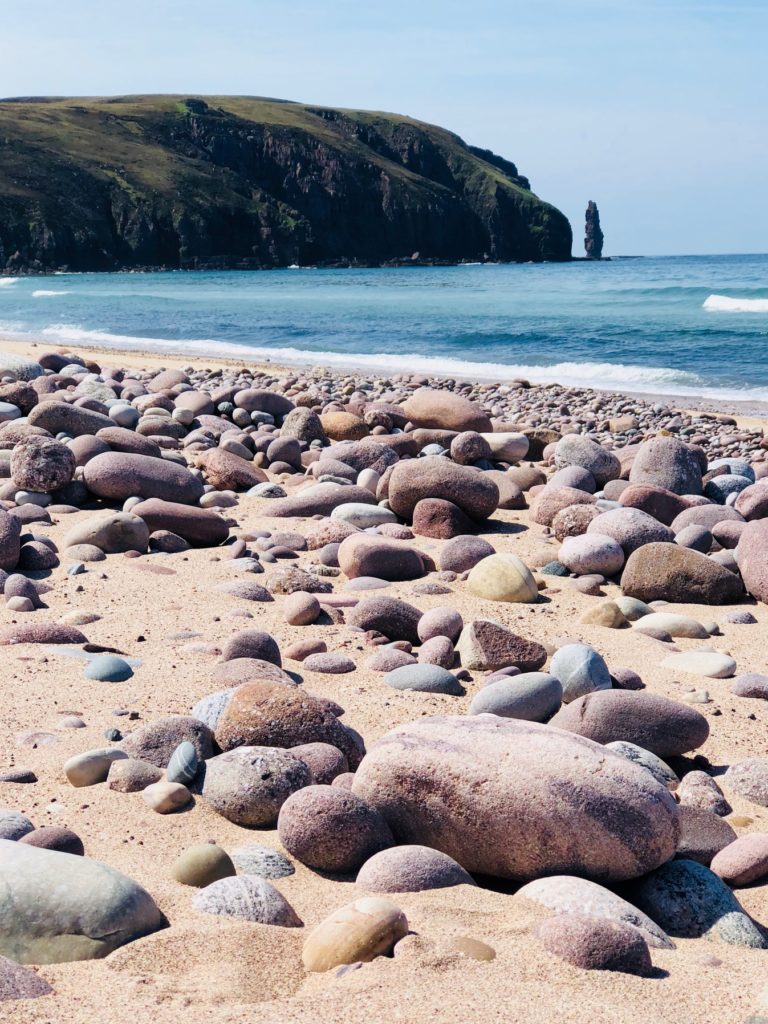
Am Buachaille sea stack at Sandwood Bay
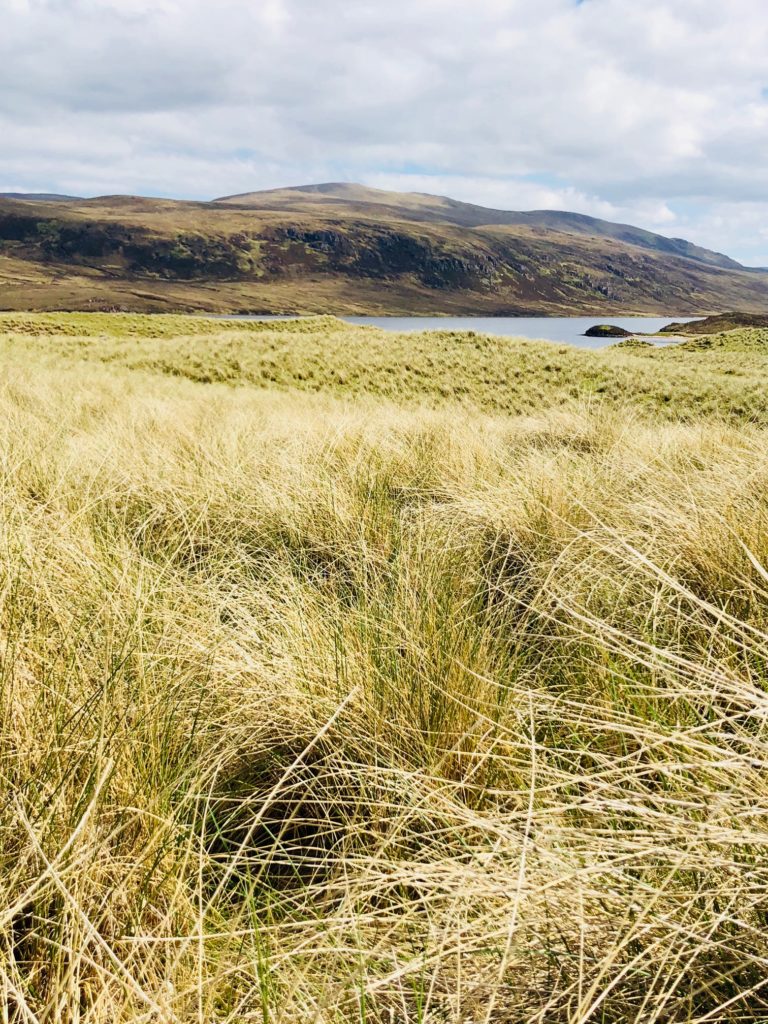
Sandwood Loch
We lingered on the beach only about an hour although it seemed longer. As we trudged up the sand dunes back to the track, I kept stopping and turning around to absorb the beauty of the Bay. It was the one time this trip that I thought to myself that maybe I wouldn’t ever have the chance to come back to this place. I don’t know why I thought that but knew that I needed to take in every moment, every scent and every sight before we rounded the corner and headed back down the unremarkable path to the car park.
We were exhausted, sunburned, parched and my fever from my bronchial infection had returned as we finally made it to the car and headed back down the road for our last night in Ullapool. The effort to get to Sandwood Bay, however, was worth every step. The remoteness of it adds obvious mystery but it felt to me like it had many tales to tell and, perhaps, still many secrets to uncover. There is an element here that remains unexplained yet keenly felt by only those who make the journey to get there. I recently discovered an album of music titled Sandwood by Duncan Chisholm, one of Scotland’s most recognized and accomplished fiddle players and composers. Raised in the Highlands, Chisholm finally made the sojourn to Sandwood Bay and was inspired to write the album after his visit there. For weeks after returning from Scotland, I played and replayed this album. It truly captures the essence of the place.
The Way to Orkney
We set off the next morning to cross the upper portion of Scotland on our way to the A9 roadway and then straight up to Thurso and the ferry to Orkney at Scrabster Harbour. Once on the A9, Scotland’s longest road at 273 miles, we passed through many beautiful villages. The sea reappeared on our right side, too, but unfortunately, views were mostly obscured by thick fog. It was very moody, however, as mist drifted in and out. We passed by some of Scotland’s largest wind farms with their massive turbines turning smoothly and silently overhead.
Traveling through the town of Thurso meant we were not far from the harbour and our ferry. This would be my first time aboard NorthLink Ferries and I was eager to compare it with CalMac. It was a bit of a frantic load with at least a dozen NorthLink staff directing traffic onto the car deck. The ship itself was elegant. Reminded me of a cruise ship, really. I hung out on deck as we pulled away from the dock as I always do. It was a glorious day with not a cloud in the sky. We had access to the Magnus Club onboard. Complementary prosecco, snacks, and other booze so I was pretty happy. And, we were treated to an impromptu concert from a group of fiddlers hanging out in one of the lounges. Doesn’t get more Scottish than that! It was a smooth crossing although missed views of the Old Man of Hoy sea stack as we came into Stromness Harbour. It might have had something to do with the free prosecco!
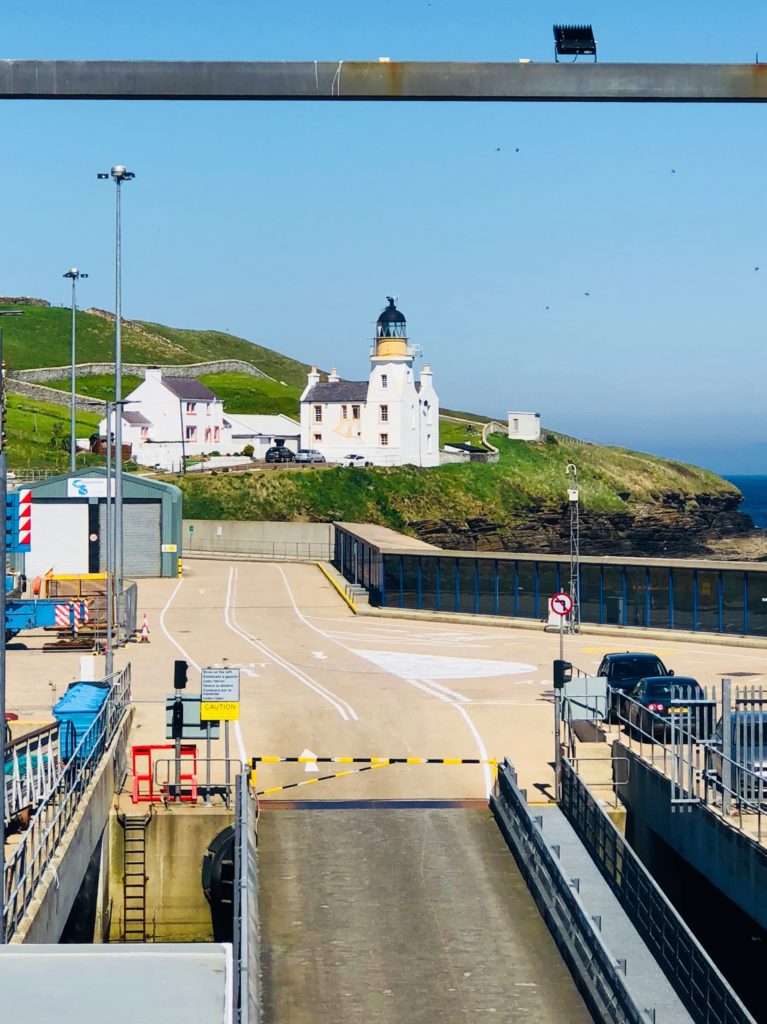
Sailing away to Orkney aboard NorthLink’s MV Hamnavoe
As we made our way out of Stromness, armed with directions (but no satellite coordinates, unfortunately) in search of our cottage, I noticed that the landscape of Orkney is different from other parts of Scotland I’ve seen. It was flat but with the mountains of Hoy rising in the distance and many lochs scattered about the flat farmlands. The roads, however, were very straight. This was so different from all the other Scottish islands I had visited thus far. Some roads went straight for miles. But, best of all, from almost any vantage point, you could see the sea. I liked it already.
After a few hits and misses and help from a local school girl walking alongside the road, we found our cottage in the area of mainland Orkney called Birsay. Midhouse Cottage was everything I expected it to be. I have never been disappointed with any self-catering rental in Scotland because I take the time to do the research, and (here is the key) I spend time developing a relationship with the owner or agent. Sometimes this isn’t always possible, especially if you are renting through Booking.com, which usually doesn’t allow direct contact until right before the rental period. But, in the case of Midhouse, I had been referred to the owner by an Orkney friend of a friend. We spent months chatting online before and after I booked and he was always responsive and kindly answered all my questions.
The house sat just above Boardhouse Loch surrounded by green fields filled with sheep. We had four rather disheveled looking male sheep just to the side and back of the house in their own pen, clearly being sequestered from the ewes. They looked none too happy about it, either. The kitchen was large and well equipped and there was plenty of living space including a lovely sun room overlooking the fields and the loch below. It felt so good to arrive, unpack and relax after a long day of travel.
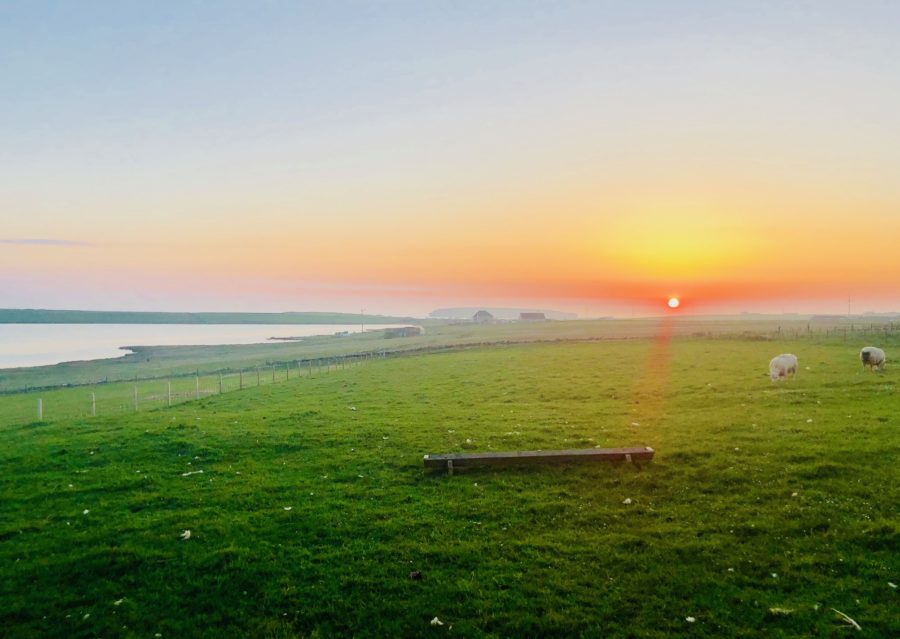
First of many amazing sunsets from Midhouse Cottage
The next day we would begin our Orkney adventure, and I would meet my Scots friend first thing in the morning. We had met virtually via Instagram in January and had bonded over several mutual interests. He made me laugh A LOT and by the time March had rolled around, we both knew that “something” was at work here, although I knew not what. If truth be told, I felt like I had known him my whole life. Originally when discussing my May 2018 trip to Scotland, we had agreed to meet up towards the end of the trip for a few adventures in Ayrshire. But, it became clear pretty quickly I didn’t want to wait that long into my trip to meet him. An invitation was then extended and accepted for him to join my crew on Orkney. Forthwith, I will call him “Mr. X” (like the X in the Saltire, Scotland’s national flag). And so, Mr. X arrived to my cottage on Orkney right on time that Friday May morning and it was the most natural thing in the world meeting in person for the first time. Strange, but not strange. There were definitely a host of powerful feelings between us but also the comfort of familiarity. It was all very surprising to say the least.
The rest of my crew had taken off earlier in the morning and we were to meet them later for their own introductions to our new cottage mate. But, until then, Mr. X and I explored Birsay and all its wonders, of which there were many. First stop was the amazing ruins of the Earl’s Palace located just down the road from the Brough of Birsay. Truly a spectacular set of ruins, inspiring my first use of the hashtag #RuinsPorn for this trip. Once the residence of Mary, Queen of Scots’ half-brother, Robert Stewart, the castle dates to the 16th century. The footprint of the ruins is extensive and what remains of windows and courtyards are quite clearly outlined. There are nooks and crannies and multiple rooms where you can wander freely. It was a photographer’s dream. Mr. X had been a professional photographer in a previous life. My iPhone 8+ could hardly compete with his professional gear, but he let me take a turn with his large lens at one point.
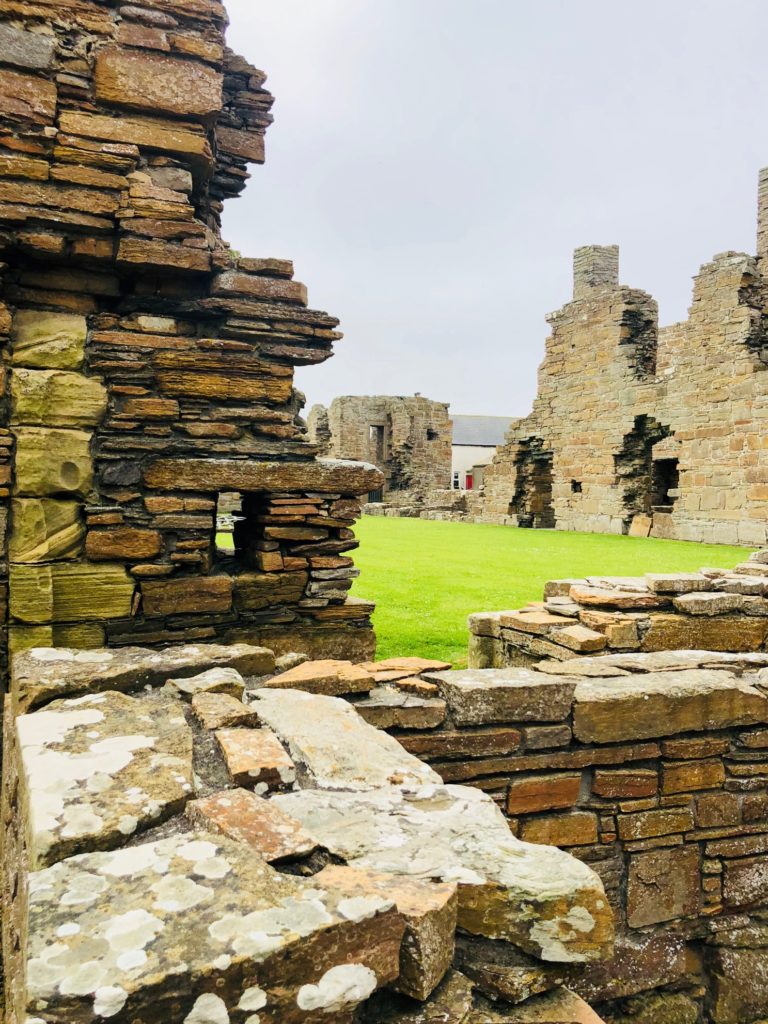
Earl’s Palace Birsay
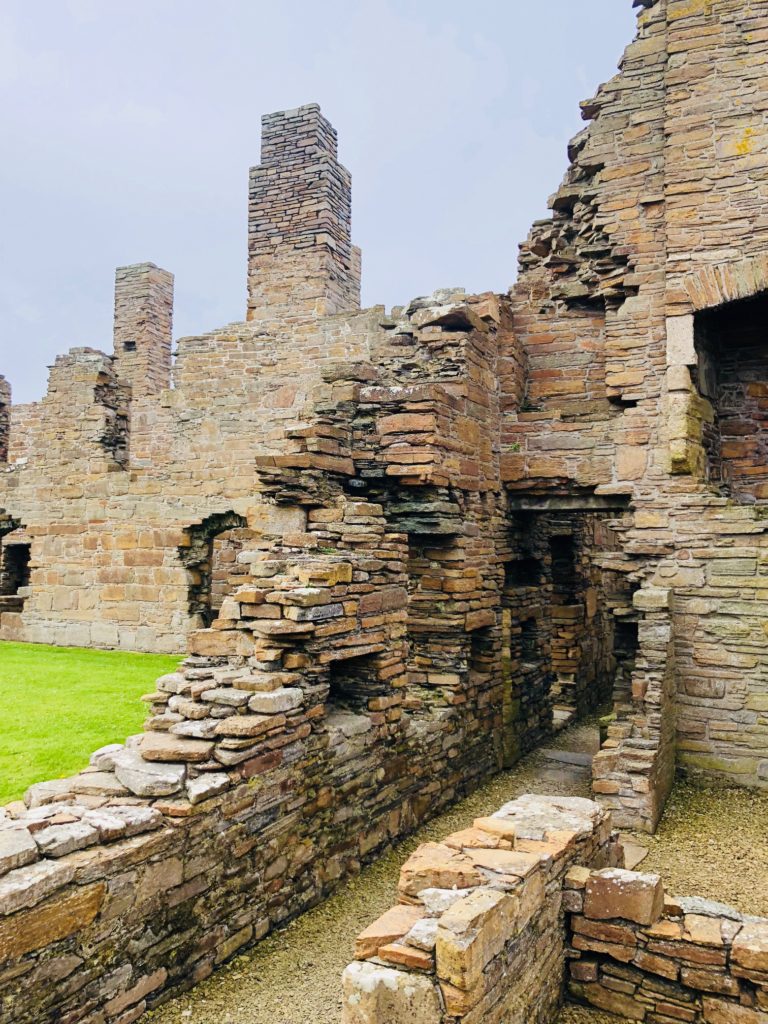
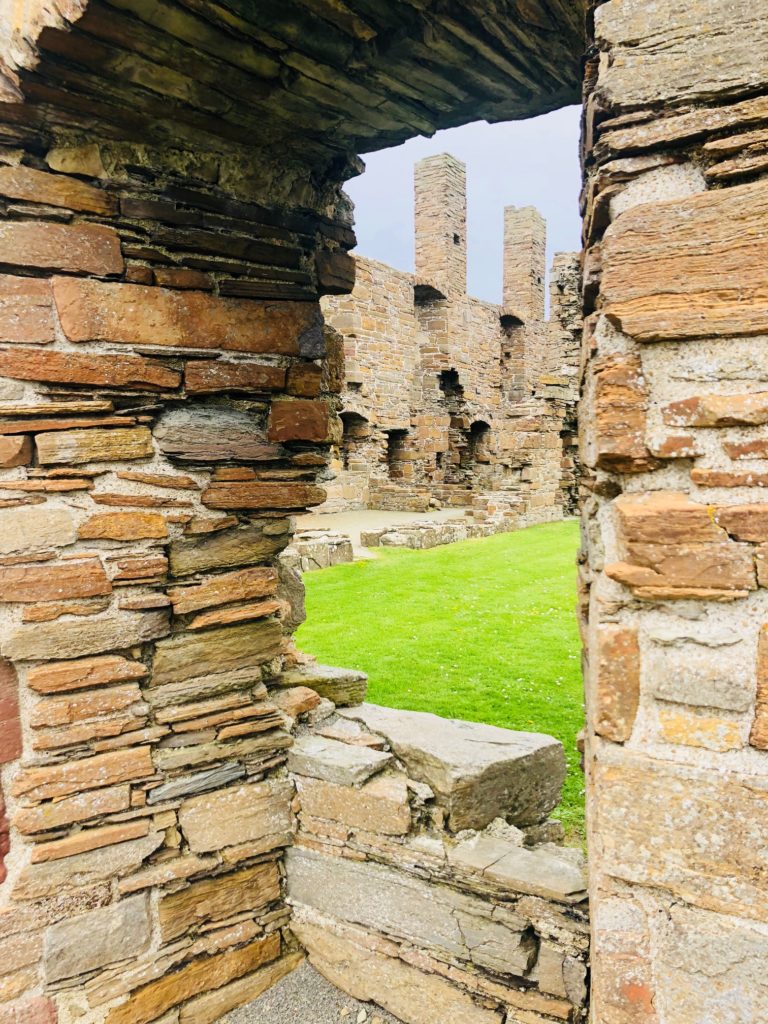
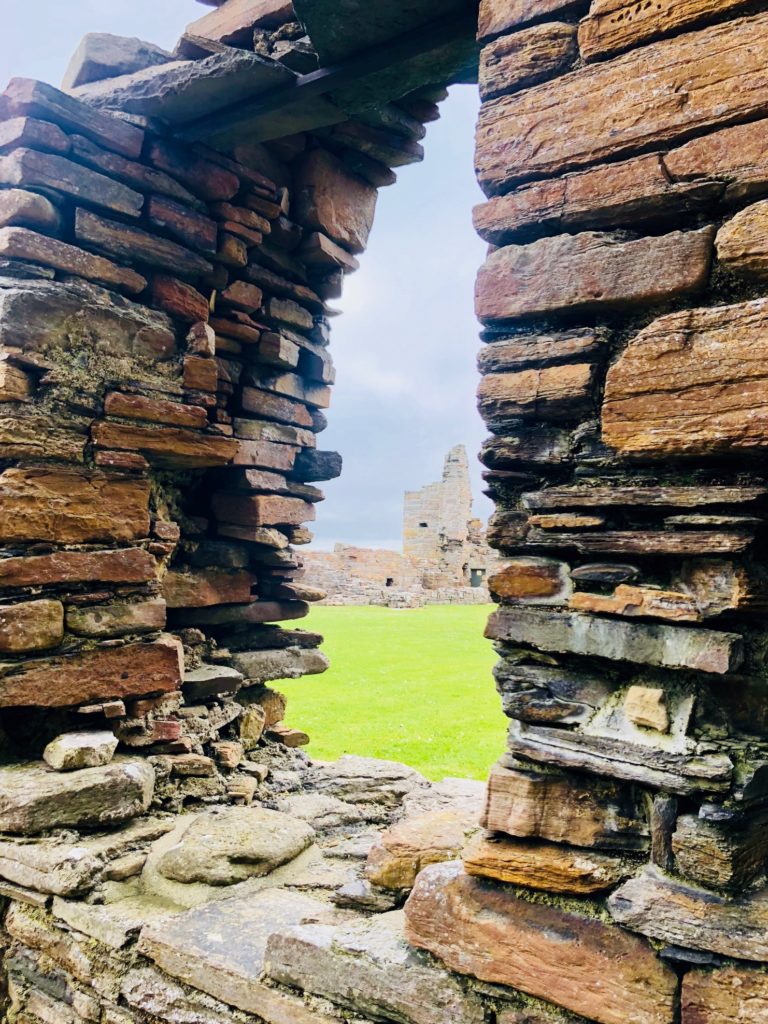
Beyond the Palace just a few steps up the road is a hauntingly picturesque cemetery. The graves didn’t appear to be that old, but the stones were lovely with brightly colored yellow moss clinging to many. With the backdrop of the Brough of Birsay in the distance and the blue seas beyond the walls containing the grave yard, it was quite stunning. Between the Palace and the grave yard, I probably took nearly 100 photos. But, I was unprepared for what came next even as I was getting the feeling that our cottage being located in Birsay was most fortunate. It was central to so many of Orkney’s treasures, only 20 minutes from the ferry and bustling Stromness and we could see and smell the sea every time we stepped outside. And, bonus, we had amazing sunsets each night over the Brough of Birsay, which is where Mr. X and I headed next after wrapping up the photo frenzy at the Earl’s Palace and the accompanying kirk yard.
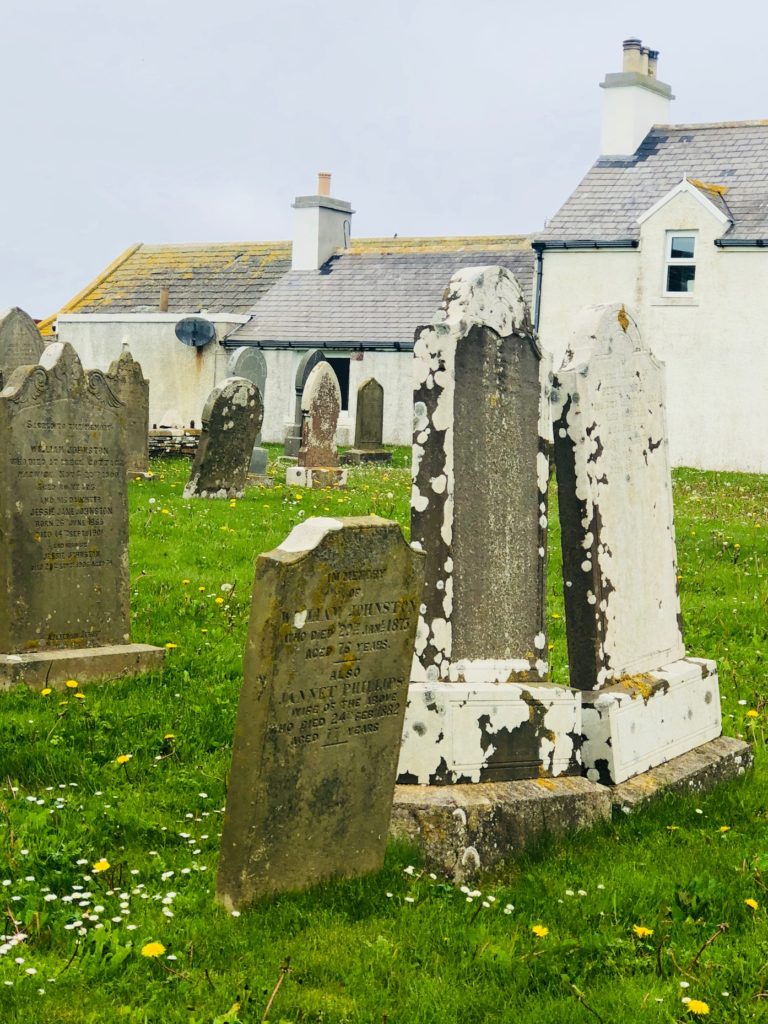
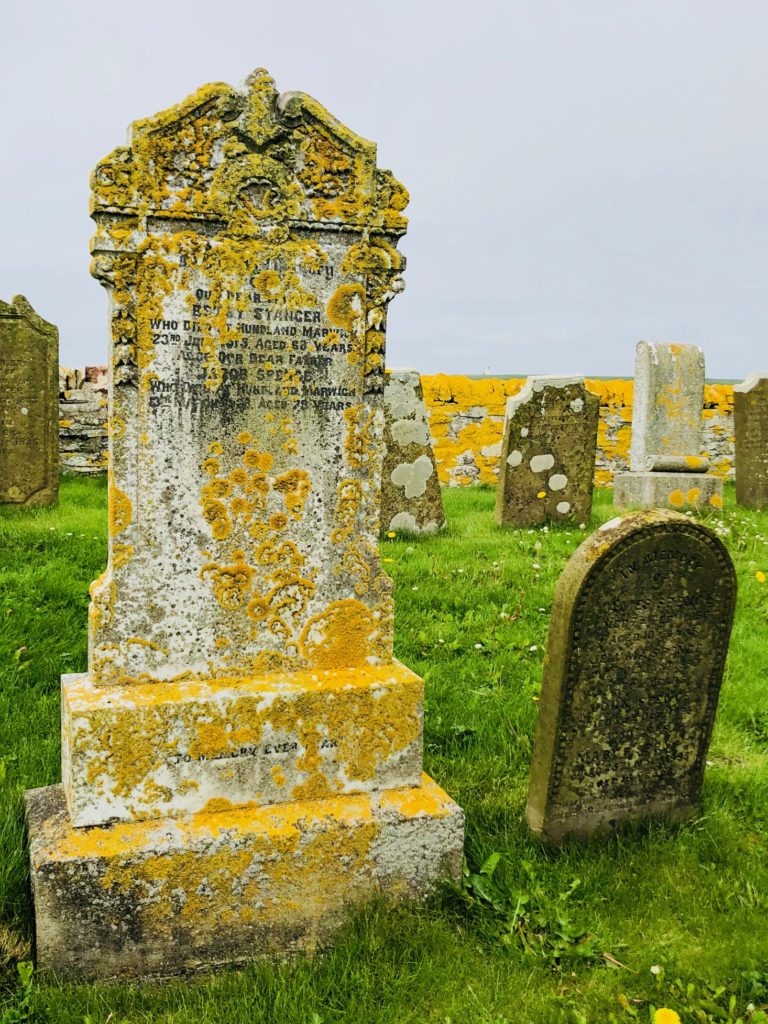
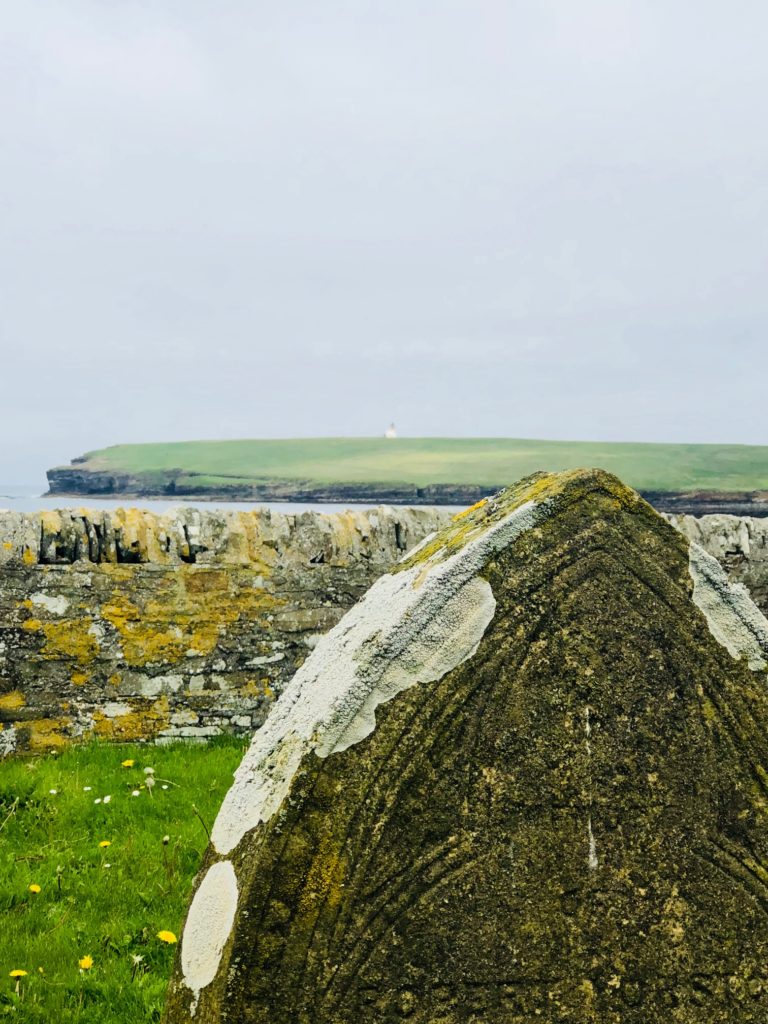
Brough of Birsay in the distance
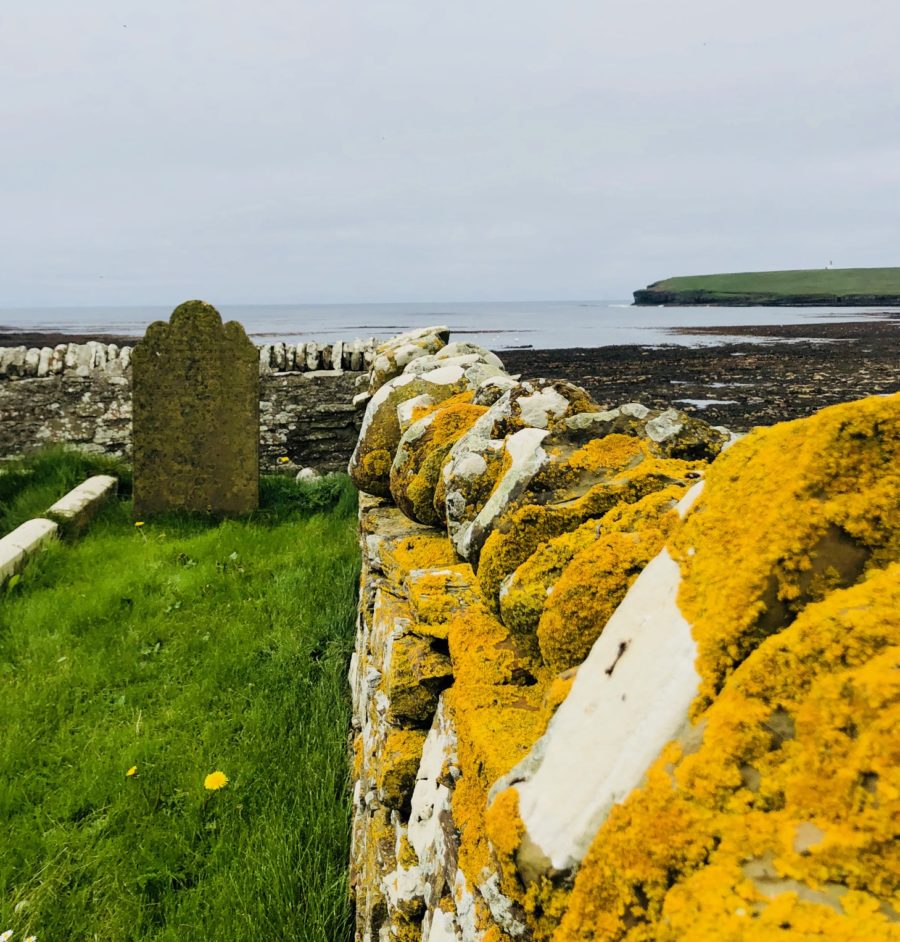
The Brough of Birsay is accessible only at high tide. When I first heard this, I was skeptical. But, it’s true that there is a long, natural causeway separating the car park and beach from the actual Brough. When the tide is out, the causeway is walkable, but slippery. But, when the tide is in, you’ll be getting more than your feet wet if you are caught on the Brough side and still hope to get back. This, however, added to the charm of this magnificent uninhabited tidal island.
You will find the remains of 800-1200 AD Pictish and Norse settlements just on the other side of the causeway and then can wander along the edge of the island and make a large circle or stop at the lighthouse at the very top of the Brough to have a look around there. Views from the rugged cliffs are awe-inspiring. Sea bird breeding colonies can be found all around the cliffs and if you are sure-footed enough, you can usually get some up close and personal photos of a few birds minding their nests. Mr. X and I walked the entire circumference of the Brough stopping frequently to snap photos on a spectacular and quite warm May day. In preparation for coming to Orkney, I had read a bit about the Brough, but nothing could really prepare me for the absolutely stunning beauty of this jagged island. When we walked back across the causeway, I was pretty sure we would be coming back at least once before leaving Orkney.
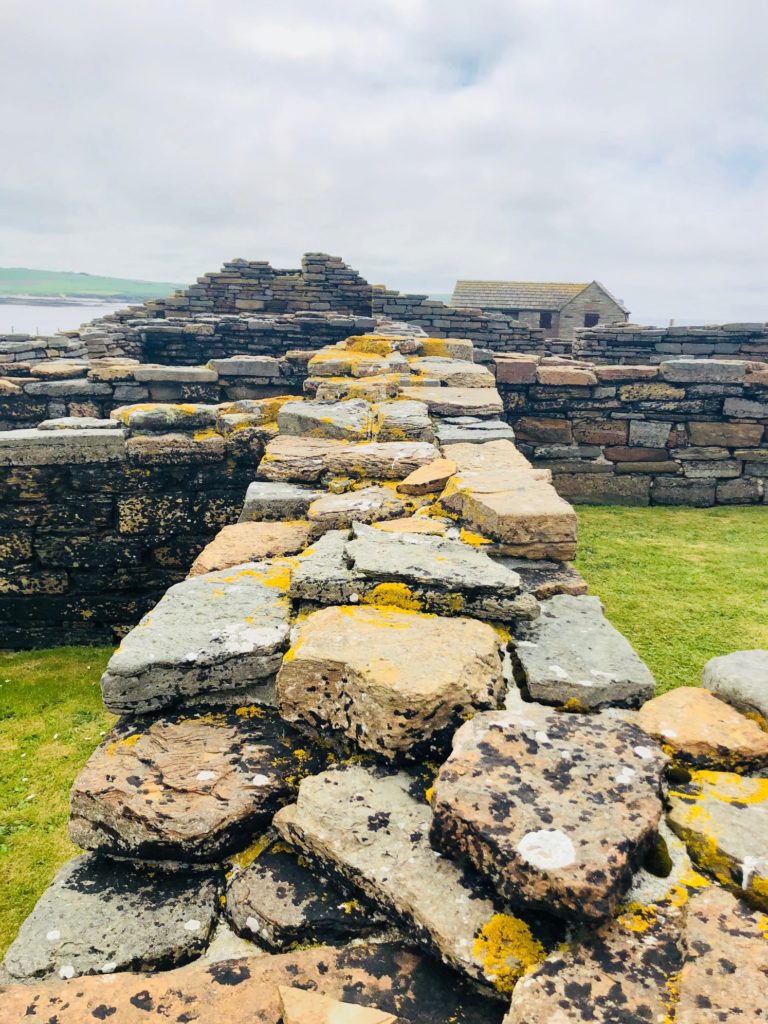
Remains of ancient Norse village
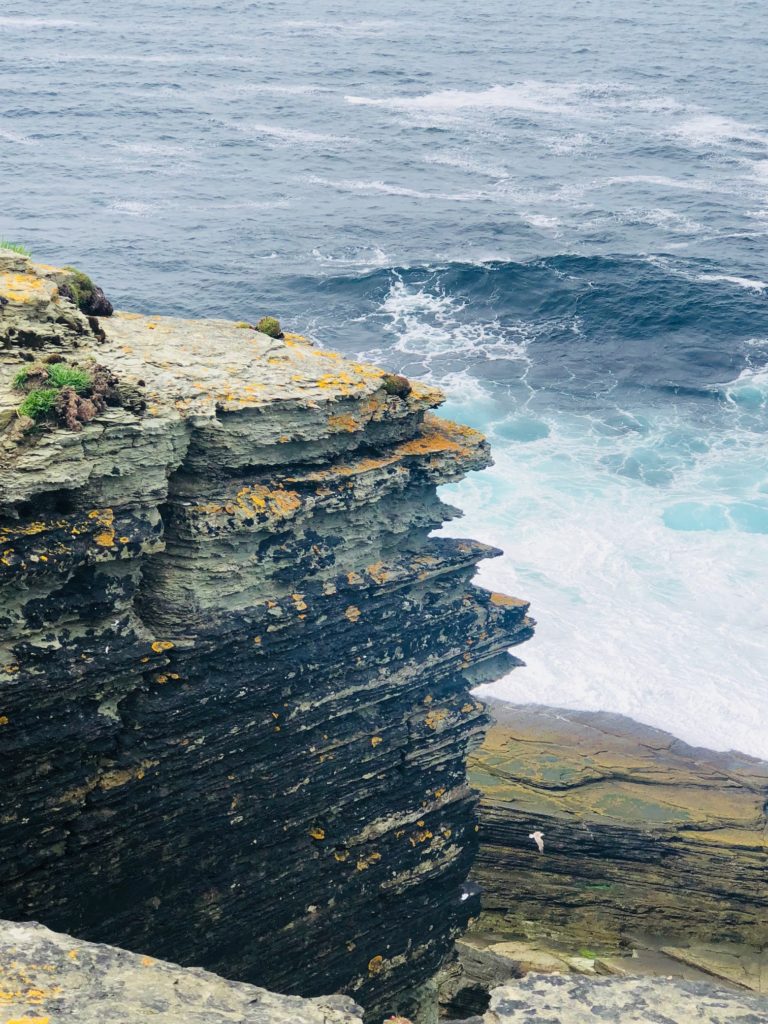
Brough views
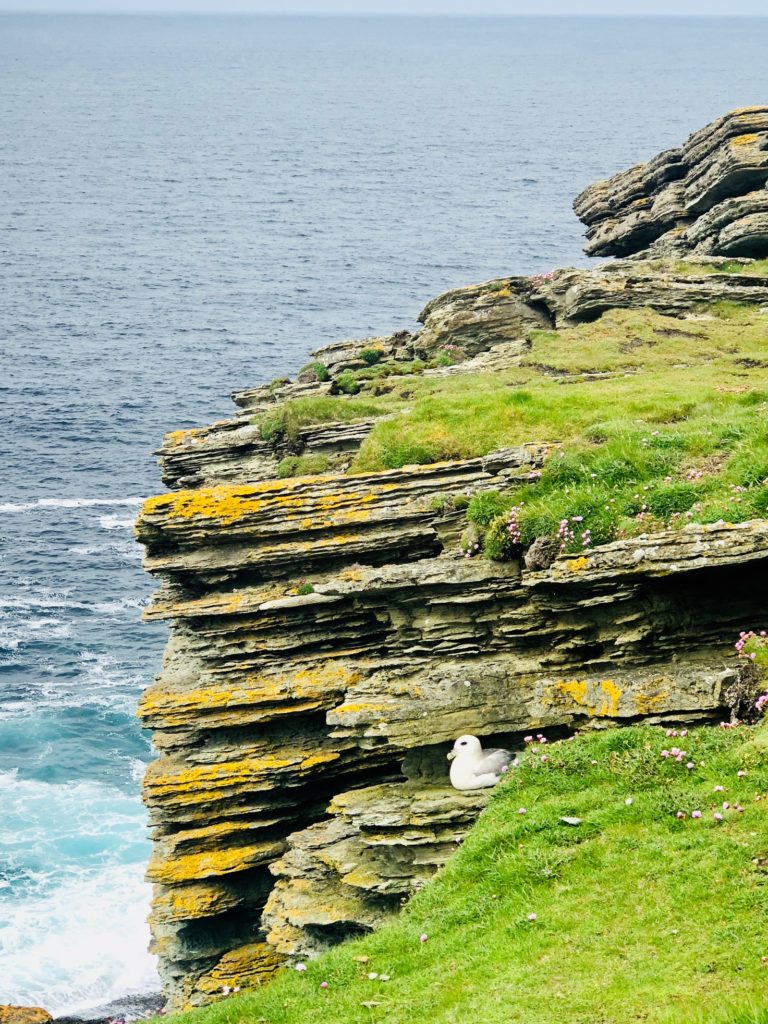
Many rooks for nesting
On from the Brough to the ancient dig site of Skara Brae. It was here that Outlander author, Diana Gabaldon had some inspiration for an upcoming book regarding her character from Book 2 Dragonfly in Amber, Master Raymond. *Spoiler* — Raymond is a time traveler like Claire Fraser. Diana has said in National Geographic that her own visit to Skara Brae inspired her to think that perhaps Master Raymond would have spent some time there on Orkney back in the Neolithic period. I’ll be first in line whenever that book comes out!
In fact, Skara Brae is fascinating. It is a surprisingly extensive village unearthed after thousands of years of erosion from the nearby sea and winds. Shortly after the first signs of the village were seen after a great storm had battered the island in 1850, excavations began. Over the years excavations stopped and started but as archaeologists continued to dig, more and more ancient homes emerged including what passed for what we would know today as “furniture.” Seeing the remains of the village today, you can get a very good sense of what every day life must have been like for the ancient Picts that lived there. Due to efforts to preserve the 4,000 year old stone walls and furniture inside the homes, you are unable to walk down into the homes themselves. But, a nice pathway around the perimeter of the exposed village gives you a great vantage point. There is a small theatre and museum attached to the café and gift shop next to the Skara Brae car park. The short film in the theatre sets the stage for what you are about to see and helps put this ancient place into riveting context.
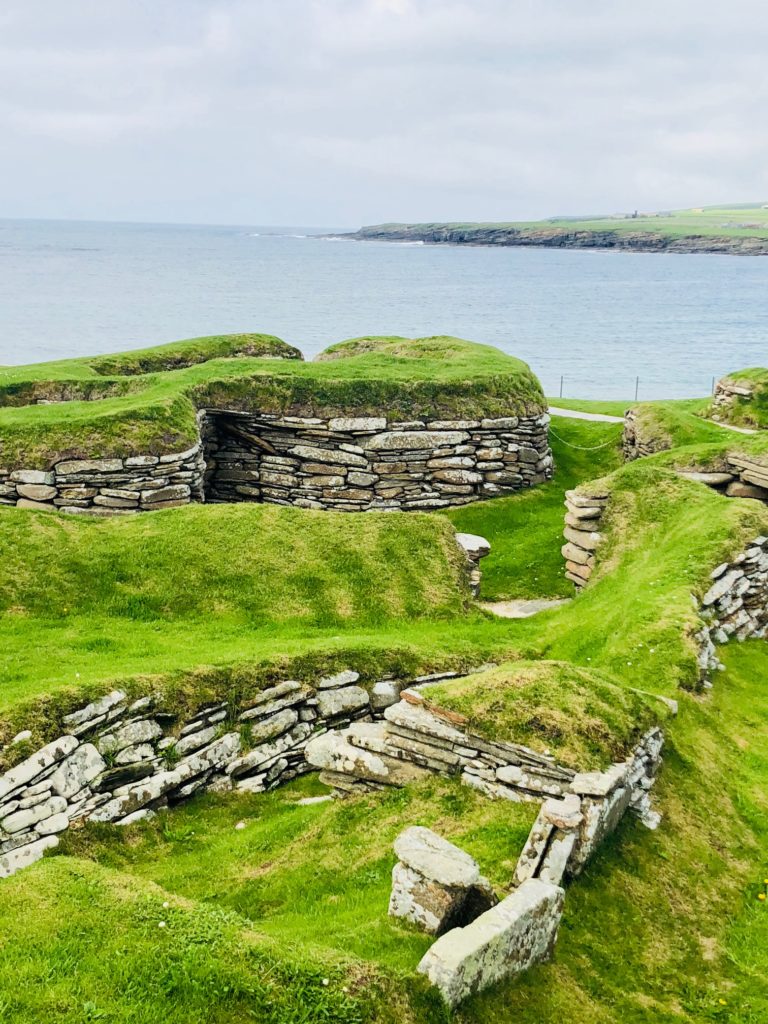
Skara Brae ancient village
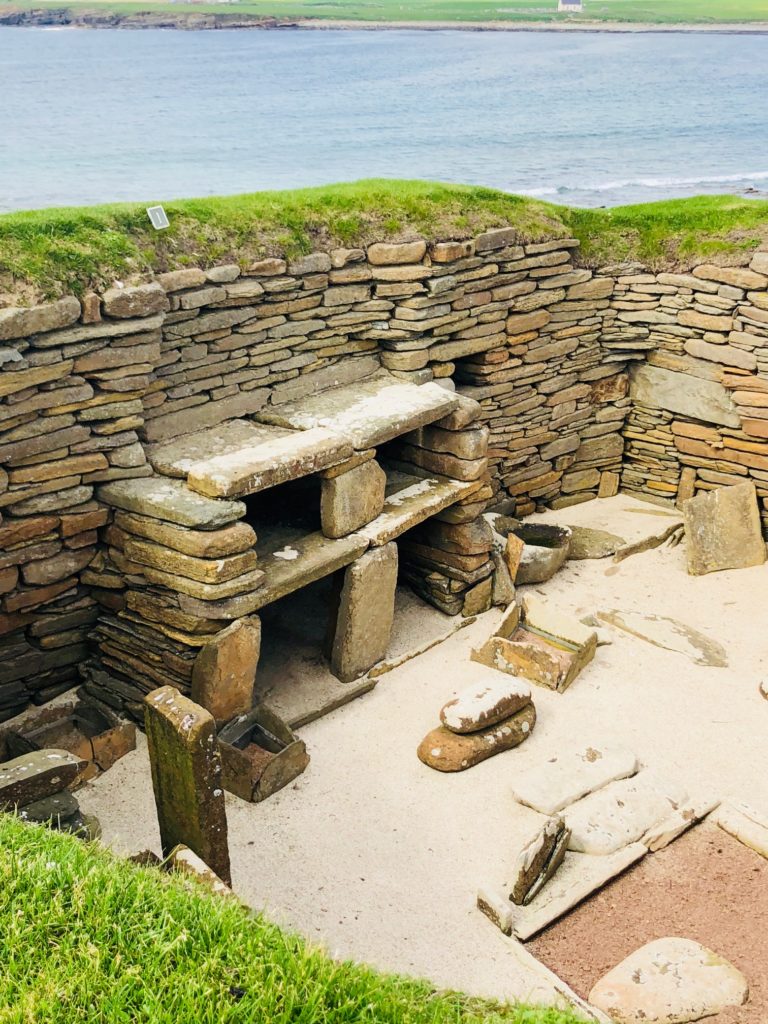
Skara Brae 5000 year old “furniture”
We met up with the rest of my traveling crew at the café at Skara Brae and then Mr. X and I were off again, this time to make the trek to a unique spot along the coast. The Fisherman’s Huts on Orkney are a hidden gem at Marwick Bay in Birsay. In 1896 the steamship “Monomoy” was wrecked at Marwick Bay. This forced local fishermen to abandon the bay as a centre for their activities and to move half a mile down the coast to Sand Geo, a narrow, sheltered inlet that faces the Atlantic Ocean. Three huts were built, and boat nousts (or hollows) were cut into the earth at the top of the low cliffs where the boats were to be kept safe from the sea. The stone built huts were where sails and fishing gear was stored. To make life a little bit easier, a winch was salvaged from the wreck of the Monomoy and placed at the head of the geo, in order to haul the boats up the shore. The huts have been sensitively restored and add charm to the beautiful scenery. The huts can be found about two miles down the beach from the car park. Mr. X. and I loved the windy walk there along the rocky coast and not another soul in sight. Poking around inside and beside these crude huts was an intriguing experience – trying to imagine the crusty men of the sea that used this remote spot as likely smelly storage space. It was a lovely, serene and even somewhat romantic spot to visit. We loved it.
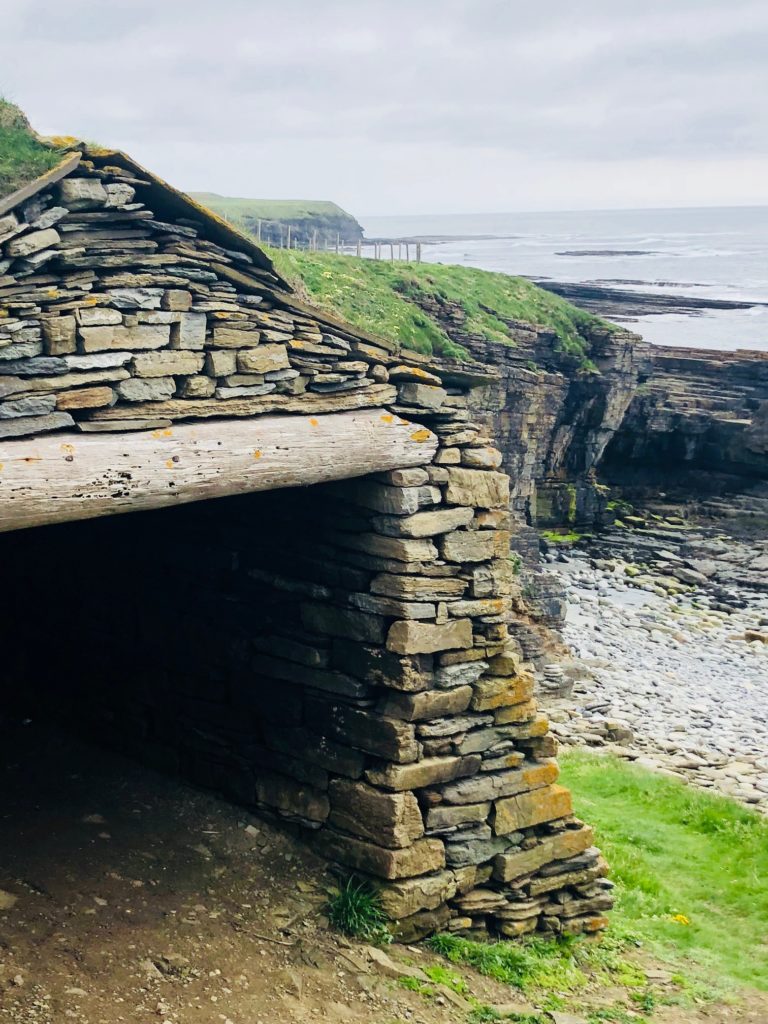
The quirky Fisherman’s Huts
That evening we enjoyed yet another spectacular sunset and a visit from some Scots friends staying up the road. My friend, Dave Lawson, and family/friends had timed their visit to Orkney to correspond with ours. It was fun catching up with Dave that evening — and getting used to his accent again! He came bearing gifts of whisky, too. The next day we planned on meeting up with Dave and crew at the beach below the Skara Brae dig for a walk with the pack of Cavalier King Charles Spaniels accompanying Dave and our other friend from Edinburgh, Darcy Weddell. Twelve Cavalier Spaniels in total on the beach that day, but given both Doreen and I were missing our own Cavalier Spaniels at home, this was a welcome frenzy. Cavalier Spaniels brought Dave and Darcy and I together over three years ago and I am so grateful for these lovely Scots people and their continued friendship. Another example of social media making the world a bit smaller.
After our beach walk and with the yapping of the spaniels still ringing in our ears, the six of us from Midhouse Cottage headed out to one of my most anticipated stops — the cliffs above the Yesnaby Castle sea stack. The famous winds of Orkney were on full blast as we arrived at the car park. It was unclear exactly the location of the sea stack as it was not visible from the car park. But, there was a well-worn coastal trail to our left and if nothing else, it appeared we would be treated to some spectacular cliff views.
Mr. X and I took the lead and began fighting the wind as we wound ourselves along the cliff path in search of the stack. Once we came within view of the sea stack, I took a double take. I could not fathom what was actually holding up this 115 foot, two- legged sandstone behemoth. Yes, the stack stands on just two puny legs even while the sea continuously crashes about its base. You get the feeling that at any moment, the whole thing may topple over. And, at some point, it most certainly will. But, the views were spectacular as the sun and blue skies that day framed this remarkable freak of nature. Mr. X repeatedly made me nervous as he got perilously close to the cliff’s edge in search of “the shot.” The winds had picked up and were gusting as high as 20 miles per hour with a slight bite to them. Temperatures along the coast dipped despite the unusually warm inland heat. I was blown away by this amazing spot and uniqueness of the setting. As we made our way back towards the car park, again, I found myself turning around periodically to stare at the Castle waiting for it to topple into the sea as the next wave crashed violently against it. Alas, it did not. But, another unforgettable location to add to the memory bank.
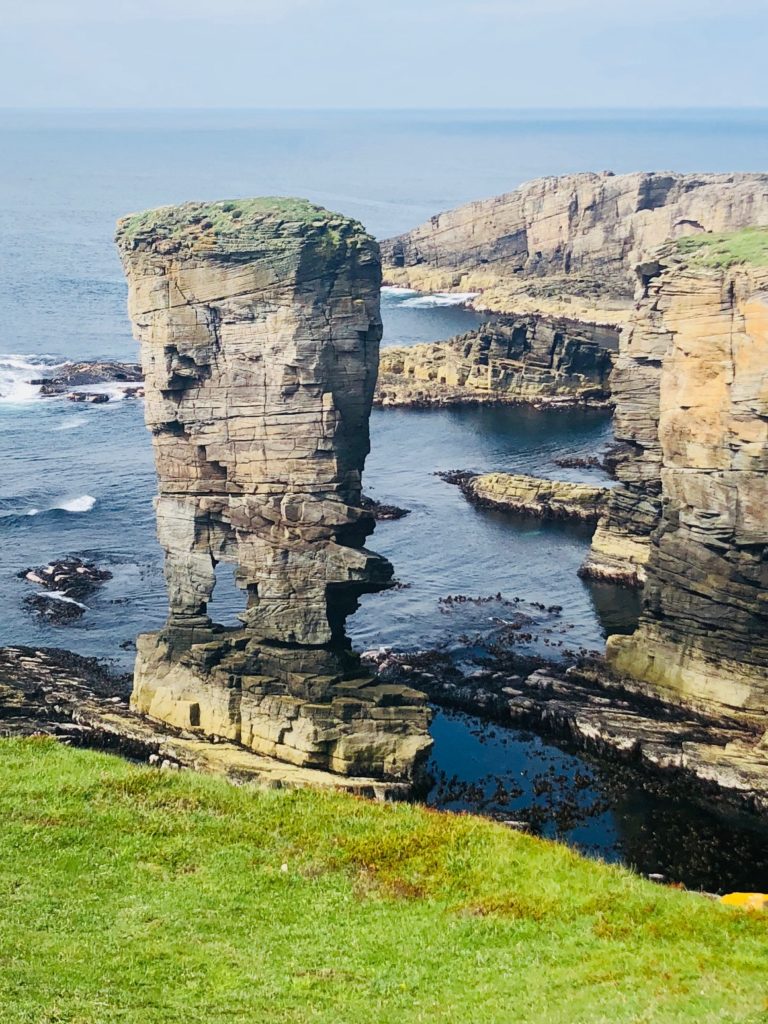
Yesnaby Castle sea stack
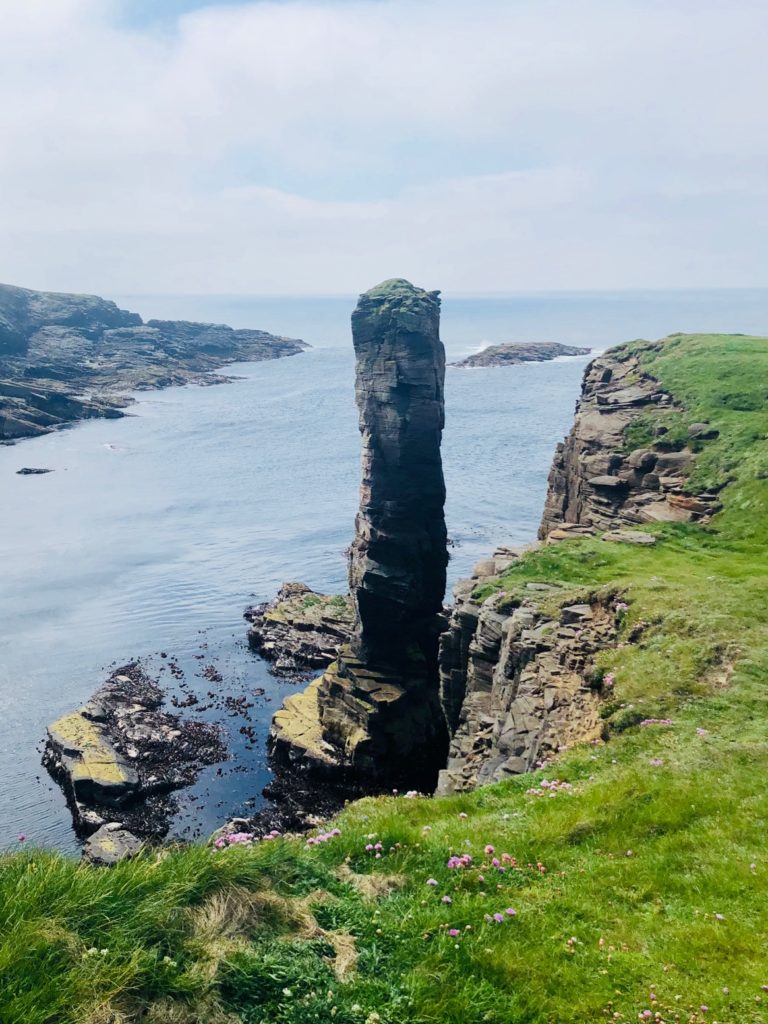
Yesnaby profile
Mr. X and I left the rest of the crew as they set off to begin dinner prep to end our perfect first day with a run to the Stones of Stenness and the Ring of Brodgar. I was literally hyperventilating once again thinking about seeing these stone circles in person. I think Mr. X thought my breathless anticipation a bit strange, but he was only beginning to find out about my obsession with standing stones in Scotland, even though I had warned him about this many times.
Thankfully, we arrived at the stones of Stenness just as a large tour bus was leaving. I hate people in my photographs, but they can be hard to maneuver around during prime tourist season in Scotland. So, timing was just right to get some amazing shots of these tremendously high stones. They were few in number but magnificent as their presence cast long shadows across the grass. I loved the setting here — so close to the windy loch just on the other side of the road. But, it was the next stone circle that truly impressed. Just up the road, less than five minutes from Stenness lies the very impressive circle known as the Ring of Brodgar. The circle is a true circle measuring 340 feet in diameter and is the third largest stone circle in the British Isles. The place practically oozes energy as you walk up a slight slope from the car park across the street.
At one time it was thought that the ring contained up to 60 large stones. Today only 27 remain but most are well-preserved still standing tall — the tallest up to 7 feet. Only a few are laying flat on the ground where they had fallen over at one point. The second highest stone at the Ring was struck by lightning in 1980 and scattered pieces of stone were found up to 20 yards away. If that doesn’t indicate some massive energy in this place, I don’t know what does. I was dumb-struck, really, walking amongst the stones and around the perimeter of the giant circle. However, what I really wanted to do was to see this place at sunset. Mr. X and I made a pact to come back one night before our time on Orkney was to end. Once was definitely not enough at this place. Day Two on Orkney done and dusted but not sure how it just kept getting better.
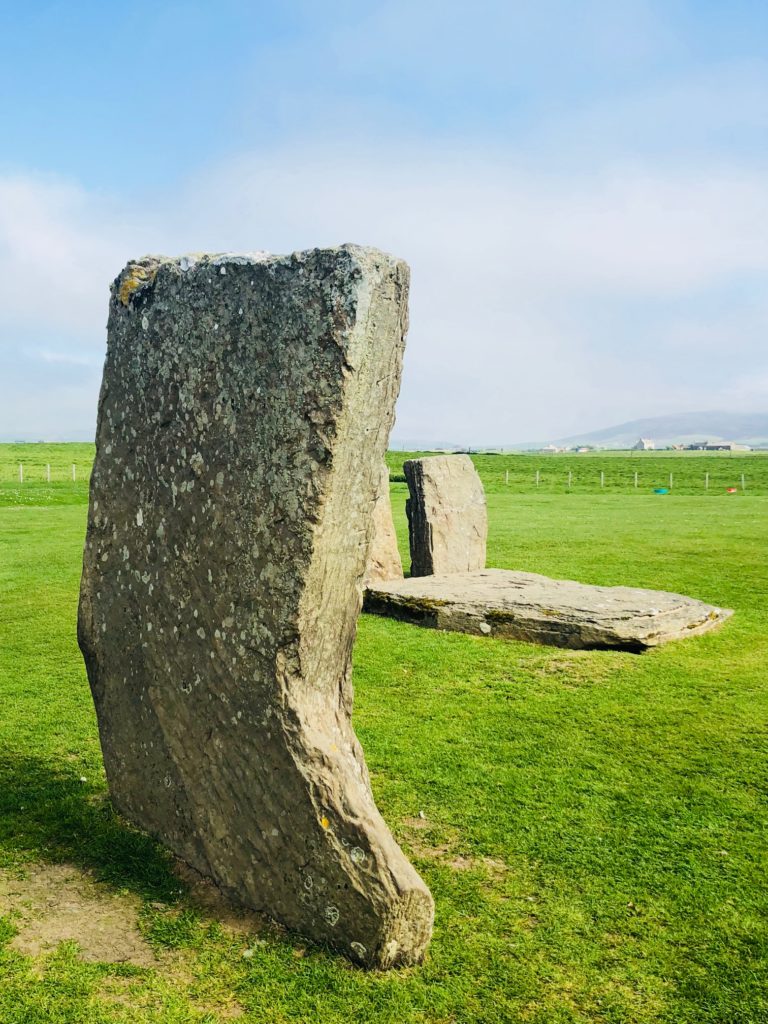
Stones of Stenness
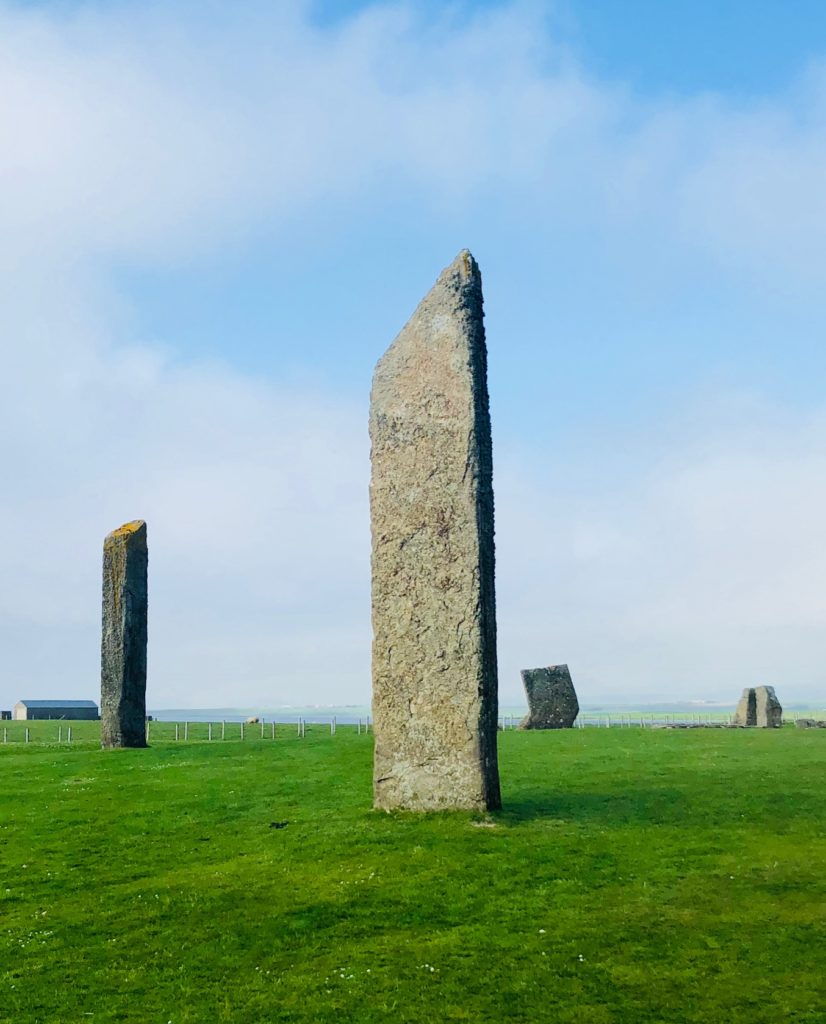
Stenness monolith
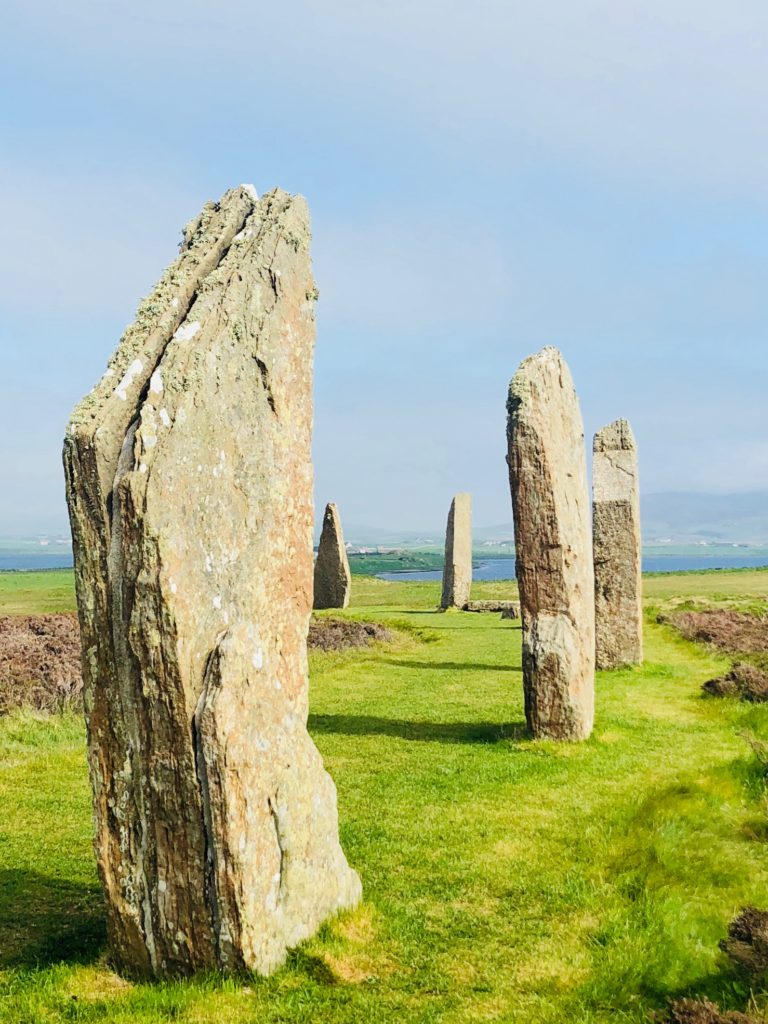
Ring of Brodgar
The next day we left prehistoric and Neolithic standing stones, cairns, ruins and ancient Norse villages for just a minute to explore some fascinating *modern* history. We traveled the 30 minutes across the island, through Kirkwall and on to see all four “Churchill Barriers.” The barriers were constructed starting in 1940 to seal off the Scapa Flow bay on Mainland Orkney from German ships of war potentially getting close enough to attack and damage British war ships gathered for deployment in the bays surrounding the Scapa Flow. Churchill recognized the vulnerability after a British ship, the Royal Oak, was attacked by a German U-boat and over 800 lives were lost. It took three years, thousands of men and half a million tons of stone concrete blocks to completely seal off the bays. These four barriers can be seen now as well as wrecks from several ships that had been deliberately sunk in a first attempt to seal the bays. But, then the Royal Oak attack happened and Winston Churchill saw that further defenses were required — hence the “Churchill Barriers.” Amazing to see these massive concrete blocks scattered about like children’s alphabet blocks to form these impenetrable barriers.
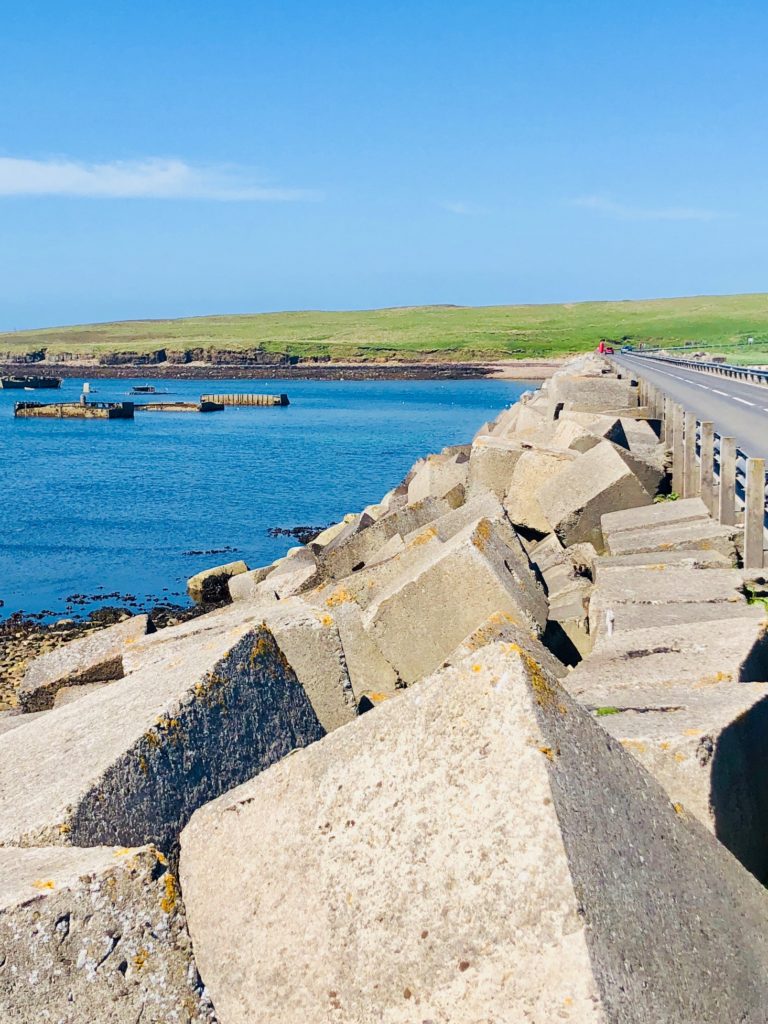
Churchill Barrier #2
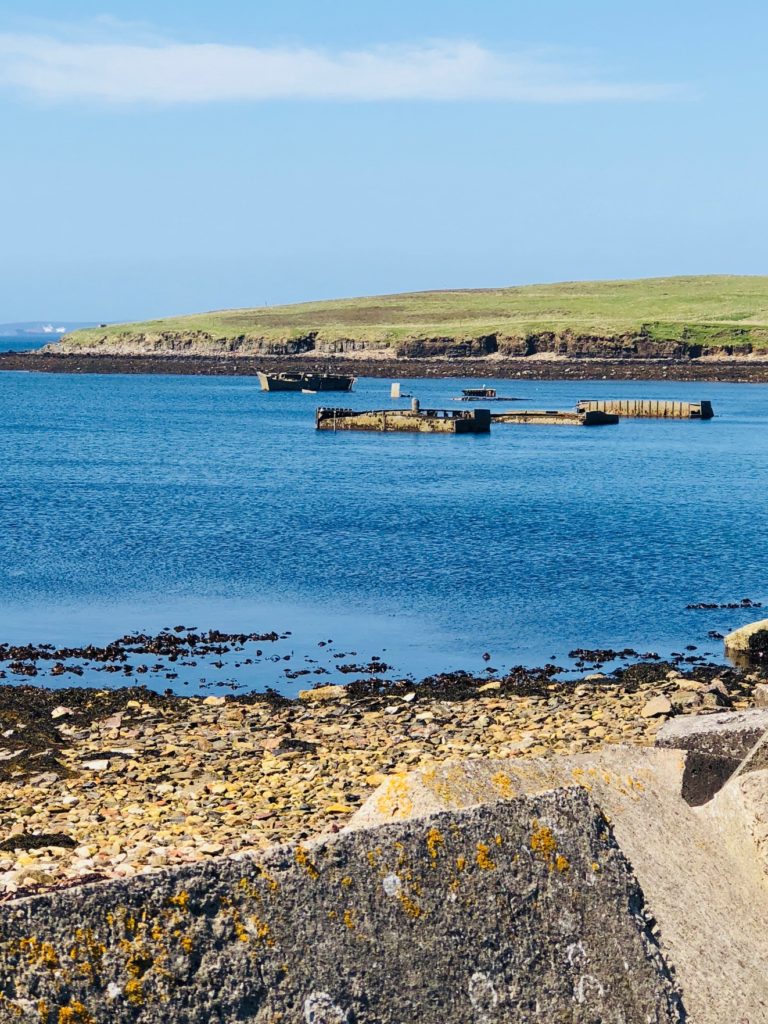
WW II wreck at Churchill barrier
Not far from Barrier #2 we explored yet another World War II oddity on Orkney — the Italian Chapel. Built by Italian Prisoners of War enlisted to help build the barriers, the chapel stands today as a remarkable example of creativity and ingenuity. All materials used to create the chapel were from materials used to build the Churchill Barriers. The entrance front is built out of the same reinforced concrete as was used for the barriers complete with a belfry, crockets and a moulded head of Christ above the door. The Nissen hut walls were lined in plasterboard, and trompe l’oeil decoration gives the impression of stone panels, brickwork and a ribbed ceiling. Beautifully designed altar, altar-rail, screen, font and holy water stoup, all made from scrap materials. Glass windows were painted depicting St. Francis of Assisi and St. Catherine of Siena. Outside, the statue of St. George was created by using barbed wire covered with concrete. It’s a unique and very moving experience to see the loving craftsmanship that went into the chapel’s creation. A real must-see on Orkney.
It was an unexpected treat to see up close Orkney’s pivotal role in World War II. Honestly, I had no idea before coming here that this was the case. I left the barriers and the chapel feeling ashamed I didn’t know about this important time in history but was very glad I got to experience these incredible monuments memorializing the determination and ingenuity of modern warfare and the human spirit. The following day, we beat it back to pre-historic times once again to explore more ancient excavations, another “Earl’s Palace” and the imposing and elaborate 12th century St. Magnus Cathedral in Kirkwall City Centre.
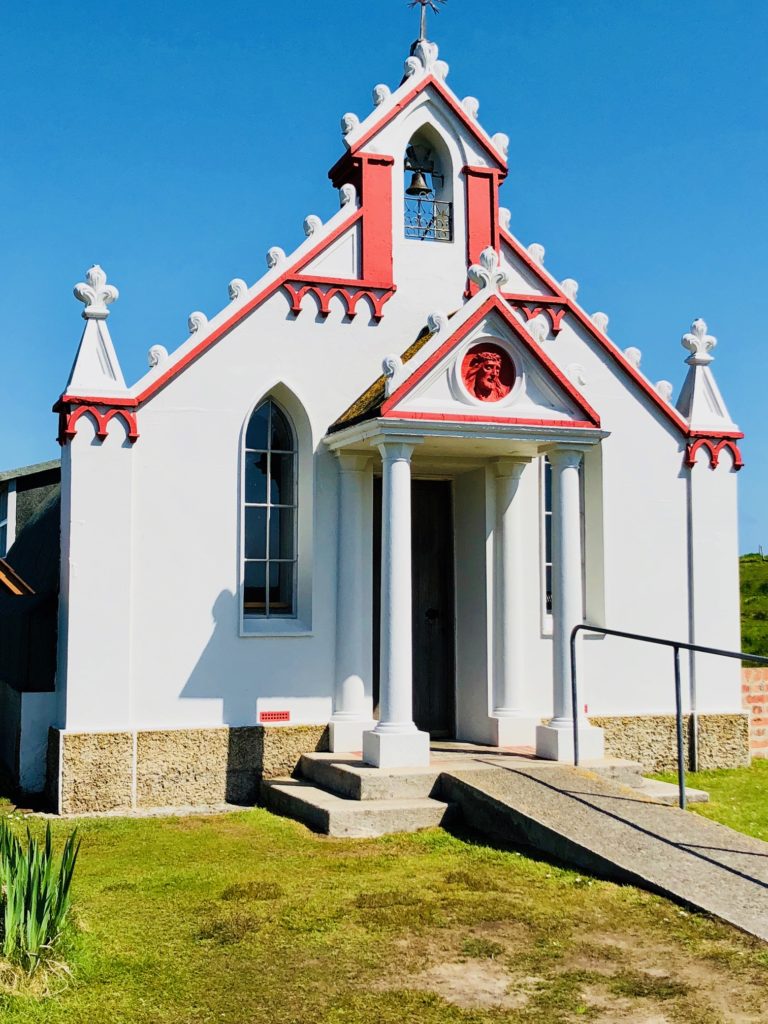
Exterior Italian Chapel
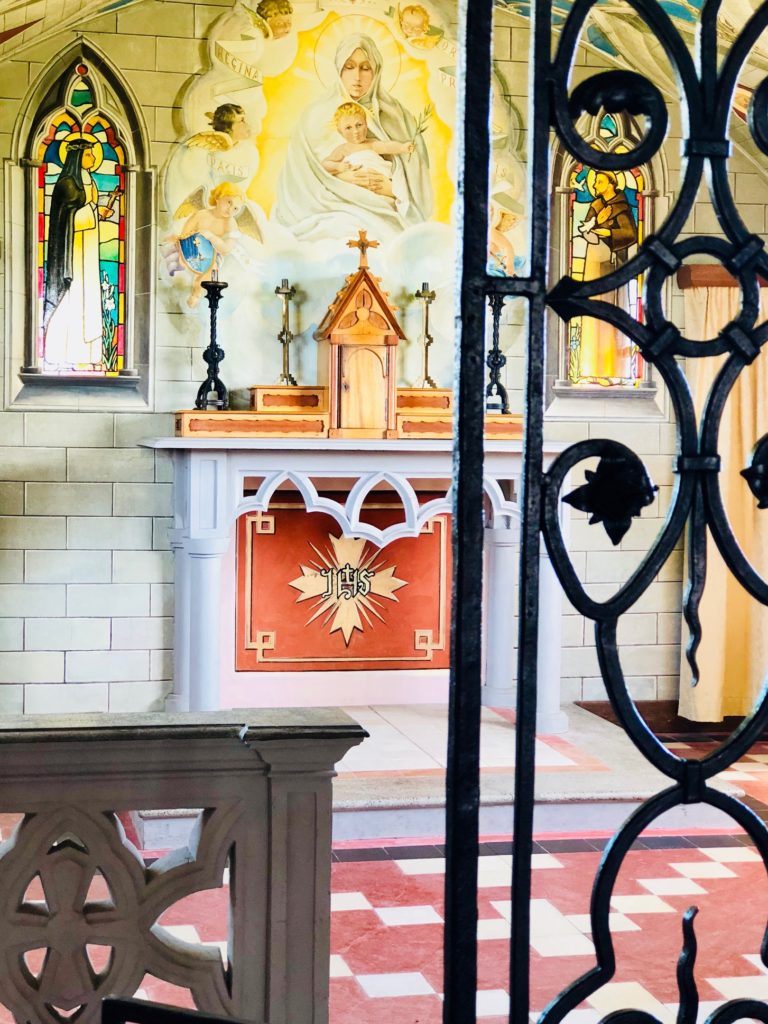
Italian Chapel splendor
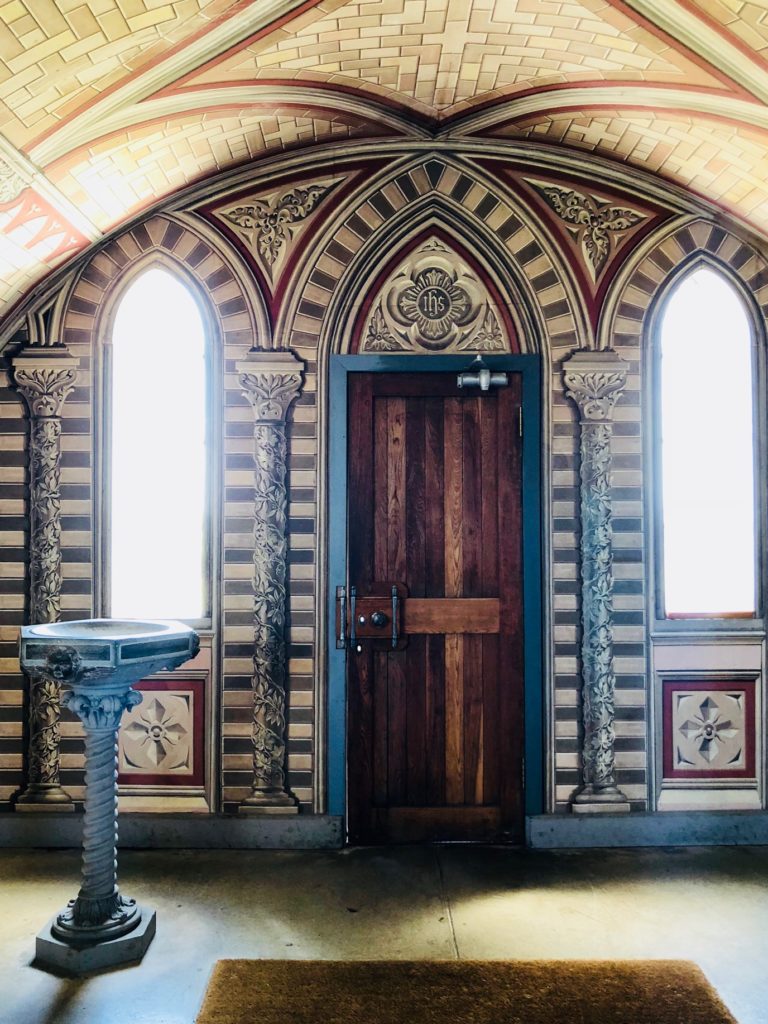
Italian Chapel font and front door
On this day, all six of us started off that morning at the Brough of Birsay together. Yes, I needed to go back and the others had yet to see it. It was too nice a day not to go there — just for the views alone. After another glorious walk atop the cliffs of the Brough, the three couples split off, agreeing to meet up later for lunch in Kirkwall.
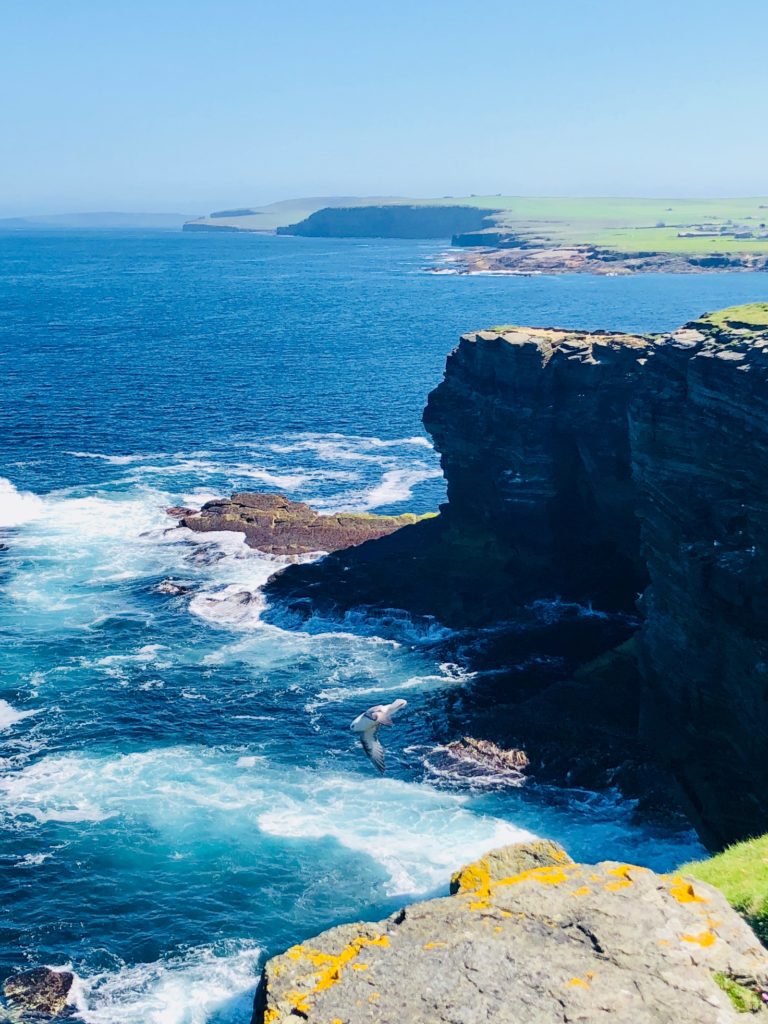
Another glorious Brough of Birsay view
Mr. X and I decided to check out the Broch of Gurness first, another ancient village/settlement still being excavated and now maintained by Historic Scotland. The setting was lovely. You can see why these ancient people decided to live here given the picturesque site above the sea and its azure brilliance. The broch is an Iron-Age settlement dating back to sometime between 500 and 200 BC. The center of the village is a stone tower (broch) and its interior is divided into sections by upright slabs. The broch is surrounded by ditches and stone ramparts encircling a large area around it. A “main street” connects the outer entrance of the “village” to the broch. I loved walking amongst the stone walls and trying to get as many interesting angles as I could with my camera phone. Meanwhile, Mr. X disappeared for a time, no doubt furiously swapping lenses and doing much the same as me – looking for those angles.
Somewhere along the way we met in the middle to compare notes and marvel at the deep sapphire color of the nearby Eynhallow Sound and stunning views of the island of Rousay just across. Next we were off to try and locate a less ancient but no less peculiar site – The Click Mill at Dounby. Young compared to most antiquities on Orkney, The Click Mill water mill was built in the early 1820s and operational until the 1880s. It has all its original machinery including an unusual double paddle wheel, grind stones, hopper and meal bin. Again, across a shite filled farm field we trudged to get to what is touted as one of the last of the horizontal water-mills of Orkney still in use. Mr. X and I had been intrigued by accounts of other visitors who had to find the “key” to the door of the mill in order to get inside and take a look at the original mechanisms. It turned out there was a key, but it was in the lock and just took a twist to open. Fun story, though and we definitely fell for it.
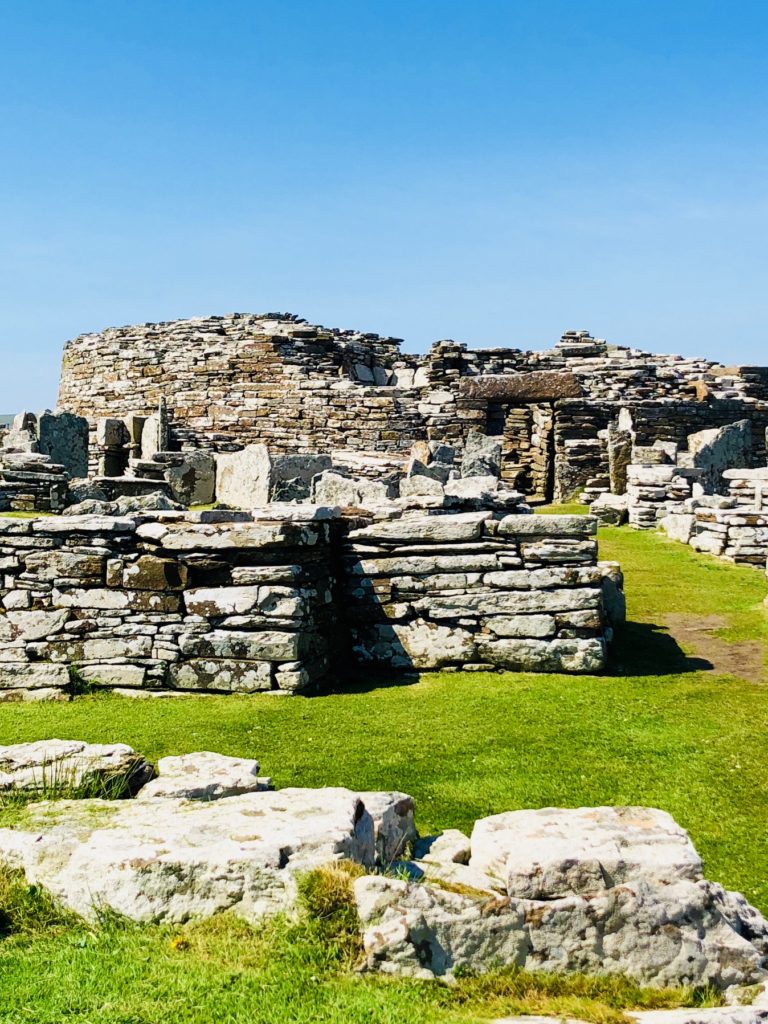
Broch of Gurness
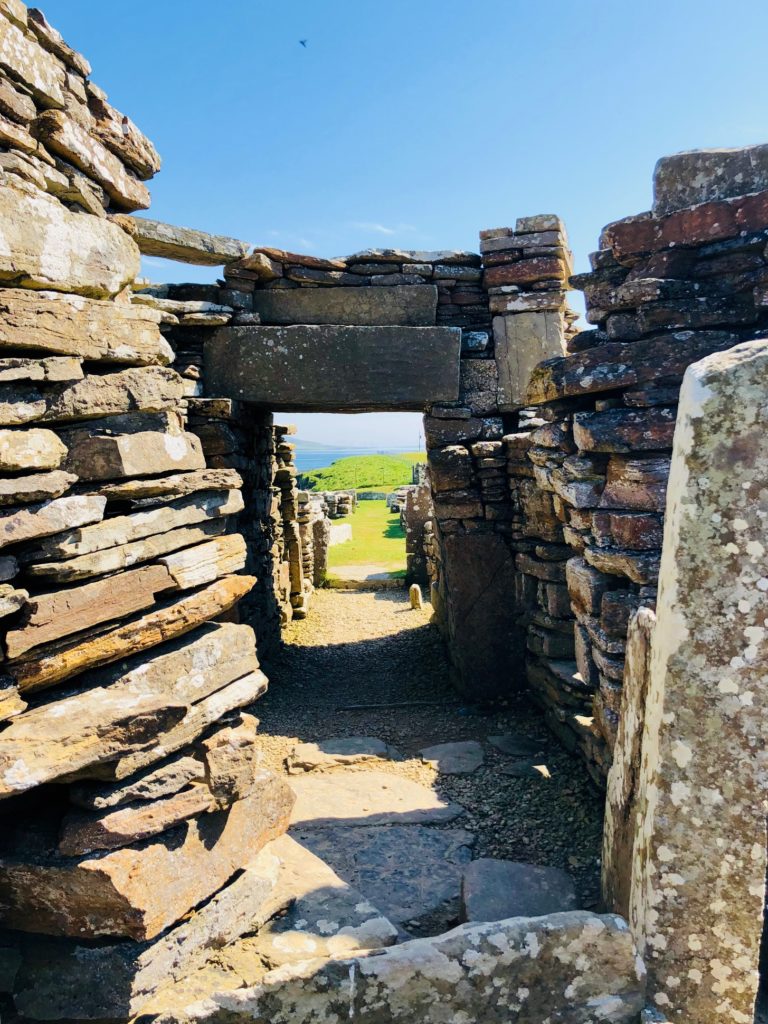
Inside broch tower at Gurness
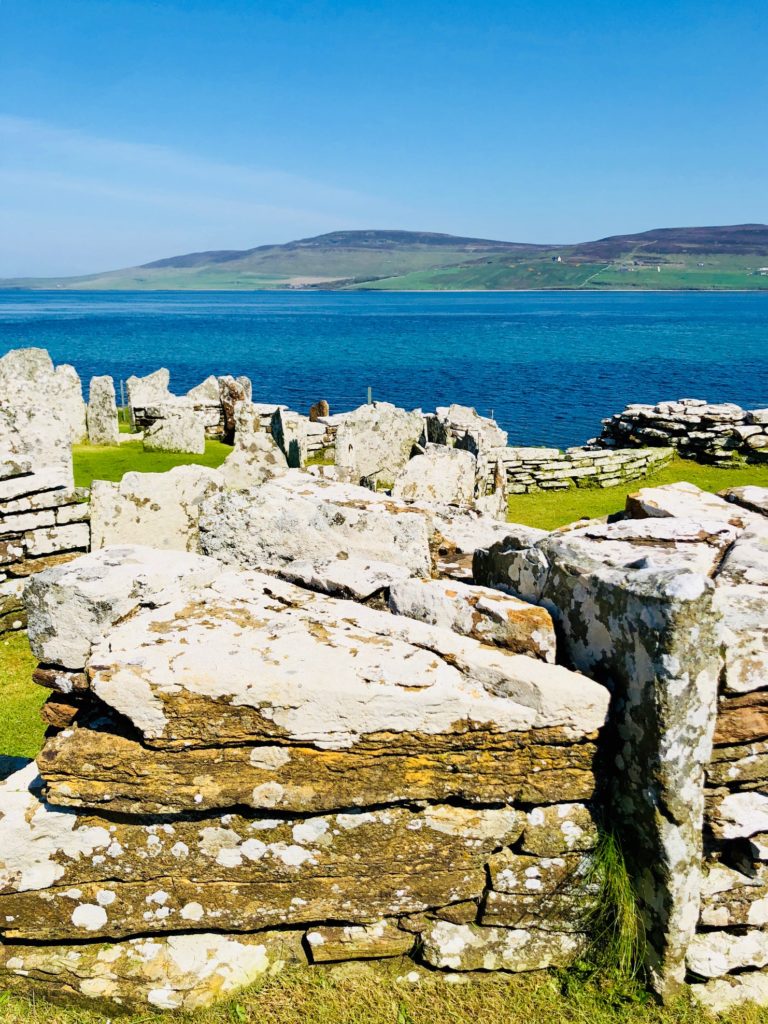
Azure sea at Gurness
Kirkwall, Mainland Orkney’s capital town, is charming and very walkable. Kirkwall’s skyline is dominated by St. Magnus Cathedral. It is the most northerly cathedral in the U.K. and a fine example of Romanesque architecture built when the islands were ruled by the Norse Earls of Orkney. As completed during the 12th century, the original cathedral comprises the choir of today’s church. When the cathedral was ready for consecration the relics of St. Magnus were enshrined in it. In 1917, a hidden cavity in a column was found, containing a box with bones including a skull showing a wound consistent with a blow from an axe – the alleged means to Magnus’ death at the hands of a servant of his cousin and rival, Hákon Paulsson, a Nordic Earl, who jointly ruled the earldom of Orkney with Magnus. As always, I enjoy a wee wander inside a cathedral. Many hidden alcoves in this cathedral and rainbows of colors from the stain glass splashed across the stone floors. It’s easy in such a place to reflect upon Orkney’s close connections to the Nordic rulers of the 11th and 12th centuries.
Just across the street from the cathedral is the Bishop’s Palace and Earl’s Palace of Kirkwall built roughly the same time as the Cathedral. Both are beautifully preserved ruins reflecting a time when the island was ruled by Norse Kings and Earls and the Cathedral overseen by Bishops of the Norwegian Catholic Church. By this point in the day, I was starting to feel the fatigue still plaguing me from bronchial infection I couldn’t seem to shake. I needed a second wind as we determined on our last night on Orkney to go back to the Ring of Brodgar for a sunset experience. Back across the flat roads of Orkney to the cottage we went for a wee afternoon snooze. But, soon my crew was ready to head out towards Brodgar with knowledge of sunset timing and anticipation of what we were about to see.
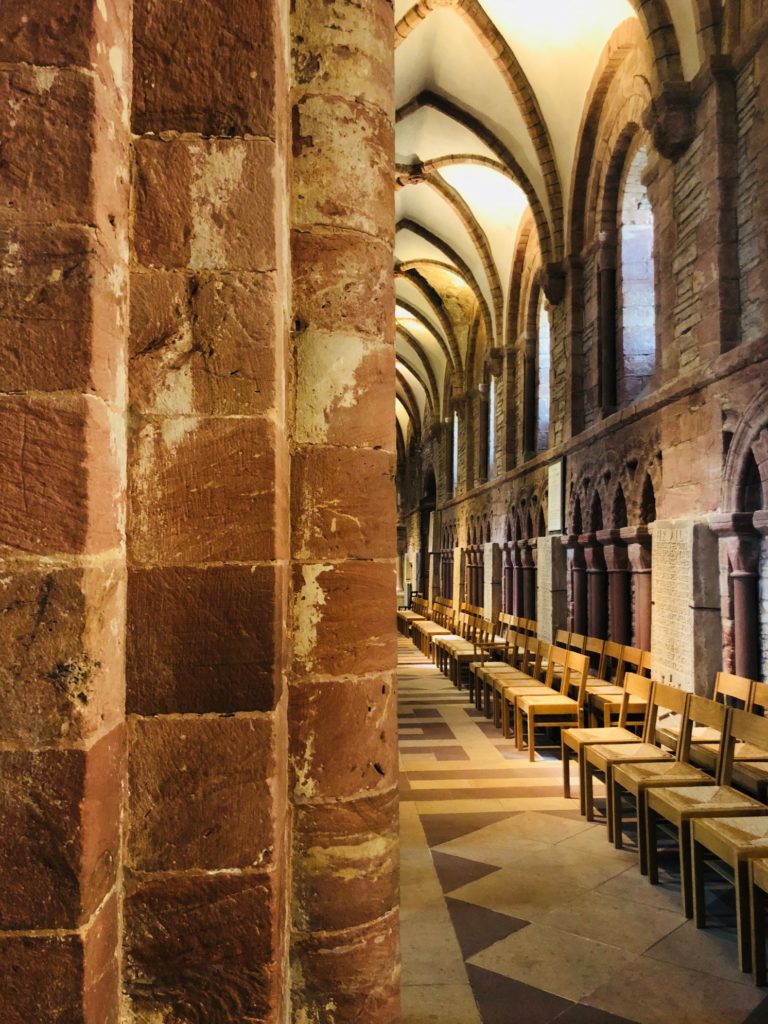
St. Magnus Cathedral
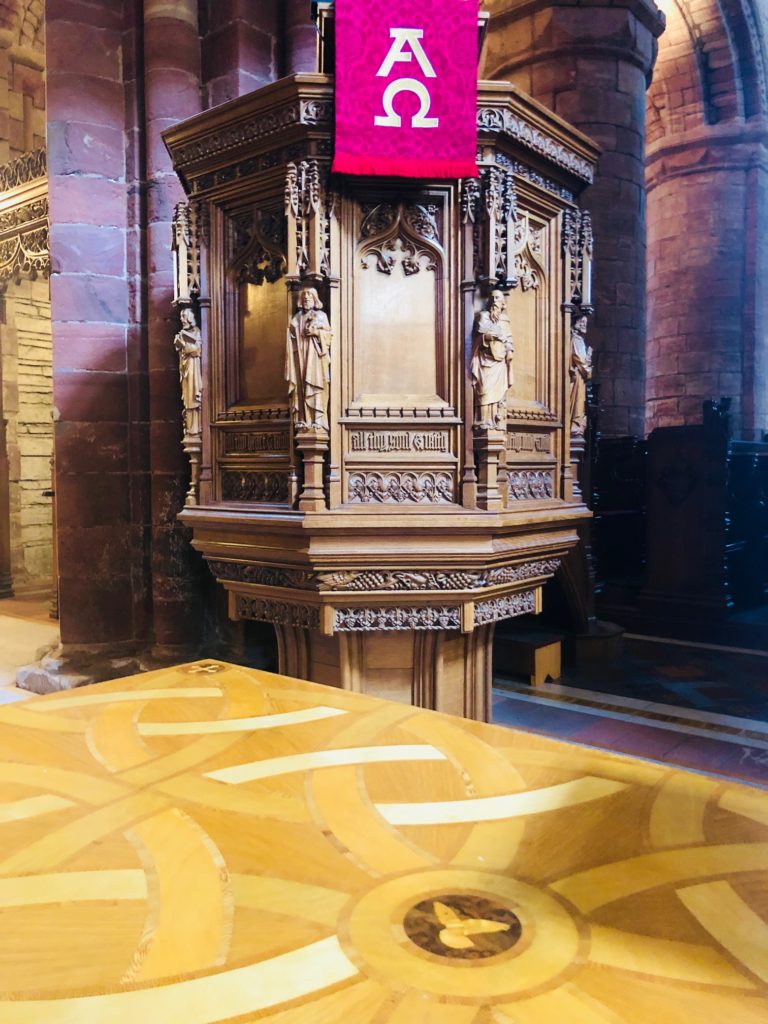
Interior St. Magnus
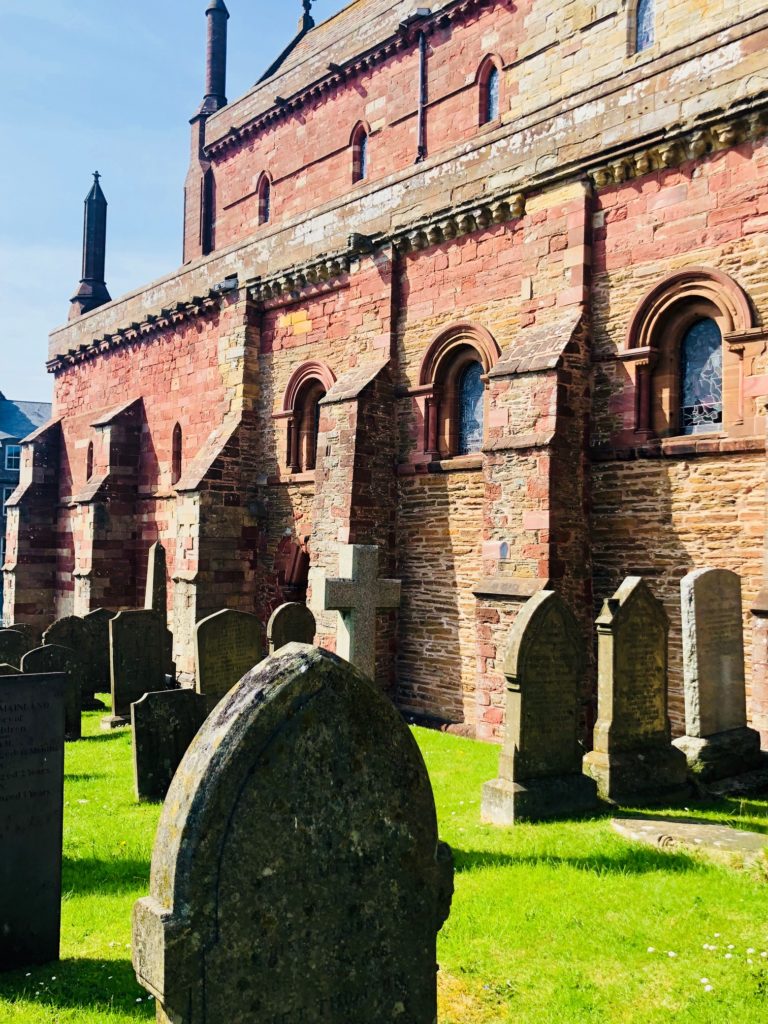
St. Magnus Kirk Yard
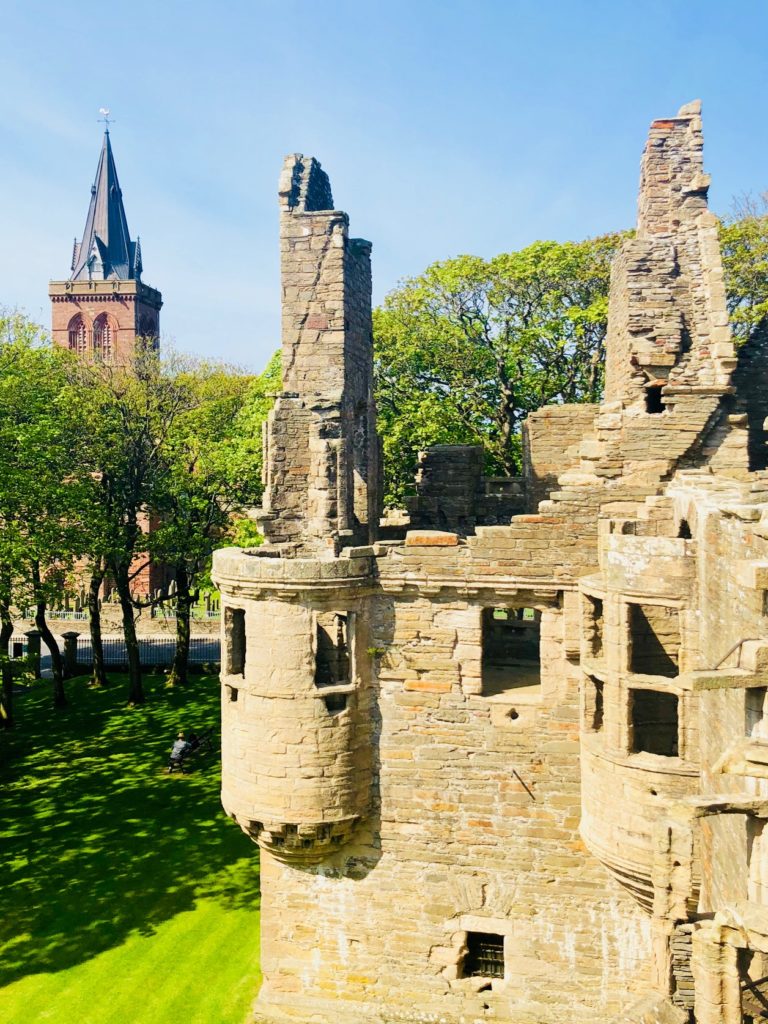
Earl’s Palace Kirkwall
I am SO glad we decided to go back that evening. It was close to 9:00 p.m. local time and a beautiful, clear night. However, it also happened to be the only time during the trip to date that the midges decided to swarm. We all got a mouthful, literally, on our way up the slope to the Ring.
For most of the time at the Ring, I was silent. Truly unable to utter any words as I was completely transfixed by the scene, the sounds of the winds across the circle, the glow of the setting sun on the stones and again, the incredible energy practically sizzling in the air. I have no real words to describe this scene other than breathtaking and surreal. And, just as the last of the red and orange radiance began to fade and darkness began to set-in, above the tallest stone sat the iridescent glow of a full moon. Are you kidding me? I was overwhelmed by emotion and deliberately stayed away from the others so as not to reveal all the feelings that came rushing to the surface. It wasn’t the first time I asked myself during this trip what I did to deserve to witness such magic. It was quite simply, bewitching and beguiling in every sense of those words. I could see that Mr. X was also lost in the moment, juggling his multiple camera lenses and furiously snapping away from different angles around the stone circle. I was pretty sure his shots would be better than mine but either way, I was pleased I could capture just a bit of the enchantment with my humble i-Phone. A very special, once-in-a-lifetime, ending to yet another extraordinary day on Orkney.
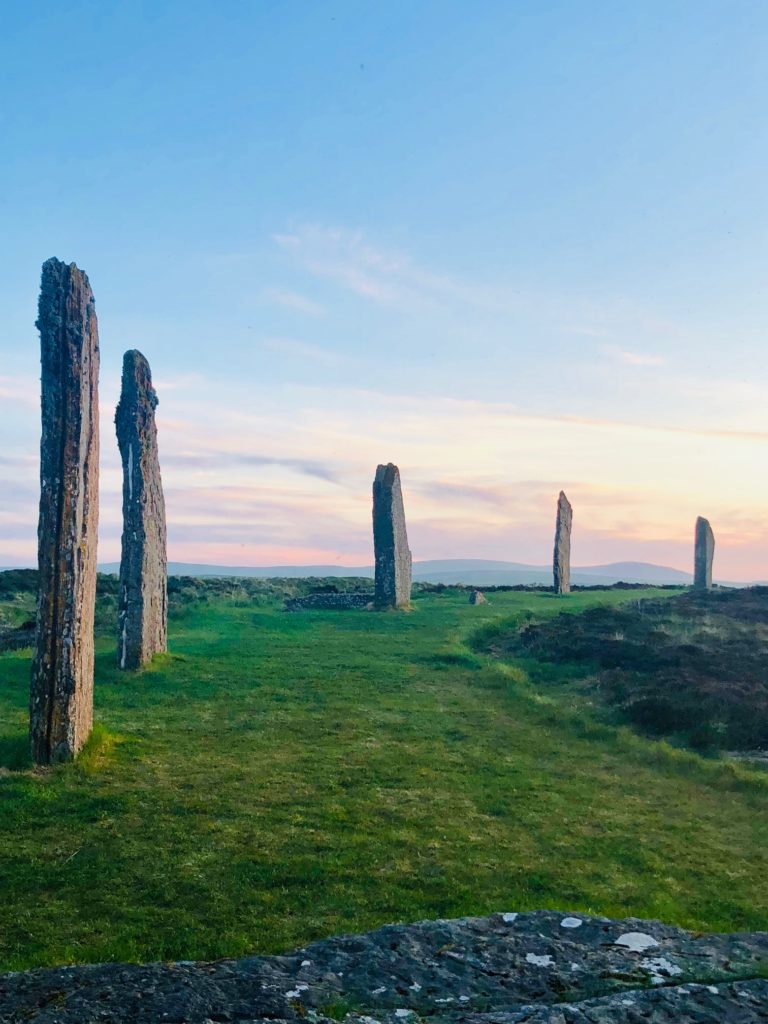
Sunset at Ring of Brodgar
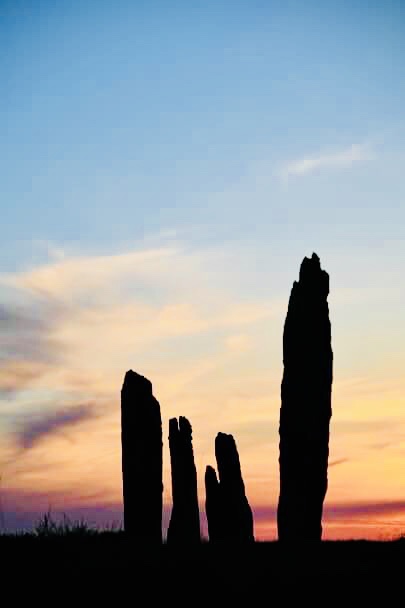
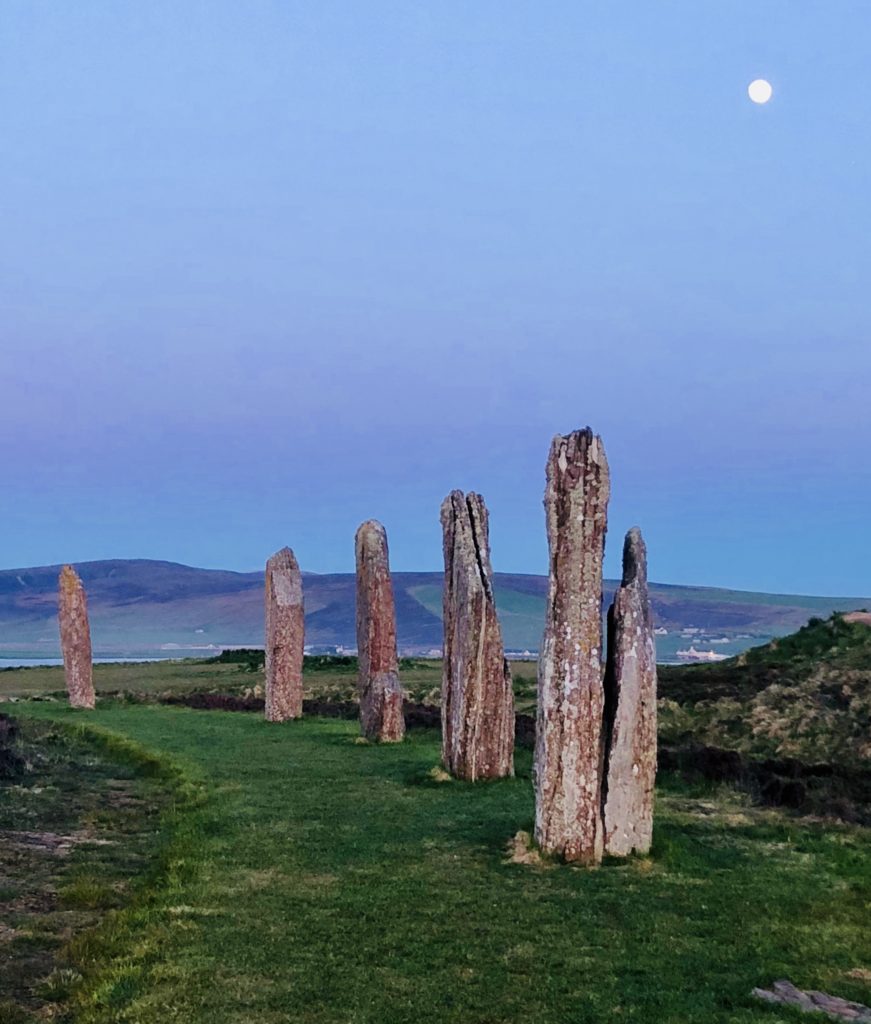
Moonrise at Ring of Brodgar
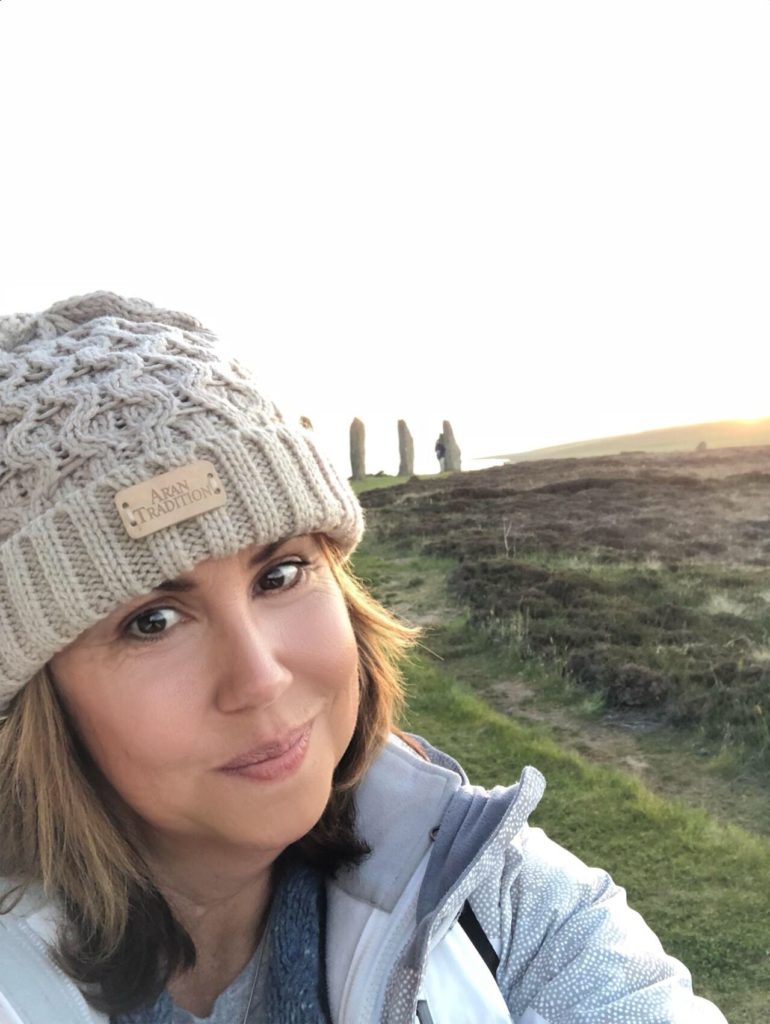
Sunset Standing Stones Selfie!
Leaving Orkney and Heading Doon the Road
I awoke the next day with that familiar feeling. I was leaving yet another island paradise with memories almost too voluminous to recount and a very full heart. I experienced things that I never thought imaginable in the company of great friends and one exceptional Scots companion. Orkney exceeded all my expectations in extraordinary ways. But, I knew more adventures awaited during the final 10 days of my 2018 journey through Scotland and I was looking forward to heading down the road with my very own personal Scots guide in the direction of Ayrshire and more island explorations.
This time I did not miss the Old Man of Hoy sea stack from the deck of the NorthLink ferry. There was a thick fog enveloping Stromness Harbour as the boat pulled away from the dock, but miraculously, as we rounded the tip of the Isle of Hoy, the fog and mist cleared and the Old Man appeared in all his glory. I once again counted myself lucky to have seen the Old Man so clearly and thought to myself that upon my return to Orkney – some day – I would attempt to make the hike to really see him at close range. Mr. X and I bid farewell to dear friends Rhona and Colin as the ferry docked back at Scrabster Harbour. Again, I count myself lucky to have met such wonderful Scots friends some three years ago. This time it was an online Outlander connection that brought us together. Social media for good, I like to call it. It happens. Tough to say goodbye to this fun-loving couple, but both Colin and Rhona needed to head back to work.
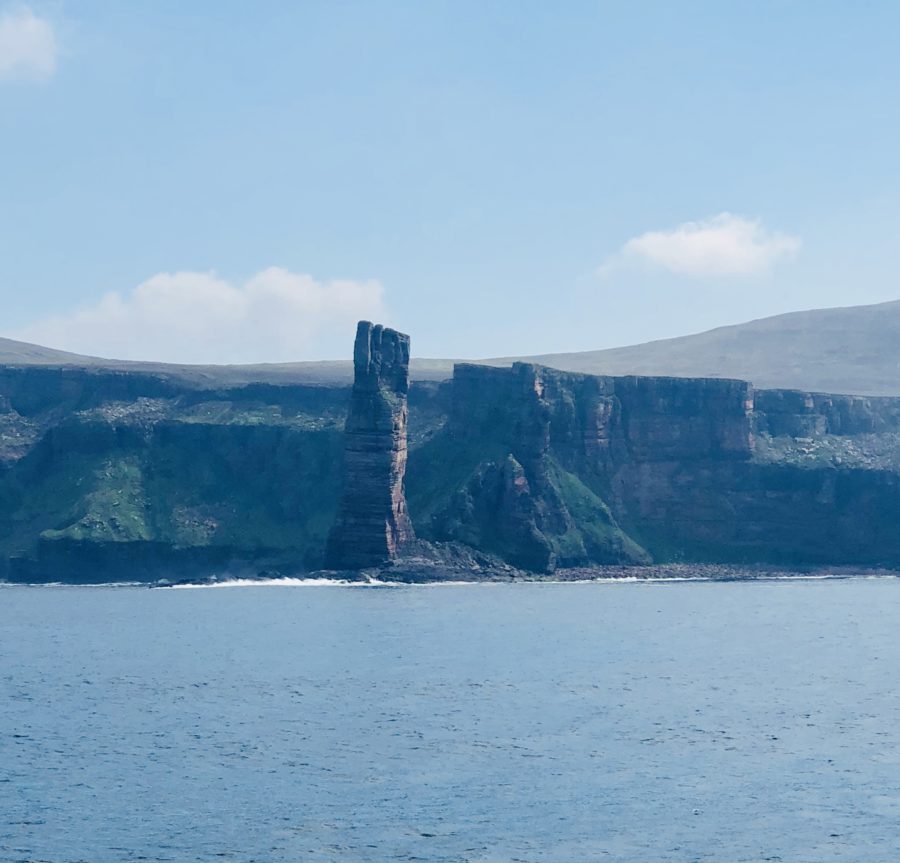
The Old Man of Hoy
Tony and Doreen had their vehicle and Mr. X had his. The plan was that we would head down the road separately and meet up later that evening in Kilmarnock where we had planned a couple of days staying with another of my close friends, Peter and Evelyn Clark. But, lucky me, Mr. X was looking forward to taking me “doon the road” himself and showing me some hidden treasures as we passed through the Northern Highlands, traversing over portions of the North Coast 500 and on through Inverness, Aviemore, the Cairngorms and finally back to Scotland’s west coast and a favorite region for me — Ayrshire. We were in absolutely no hurry, however, as I wanted to savor Scotland’s gorgeous countryside. There are so many beautiful small towns along the Northern Coast including Golspie, Brora, Lairg and international golf mecca, Dornoch, home to world famous Royal Dornoch links. It was, in fact, Dornoch, where we made our first stop and walk-about.
Standing in the center of town, every where you looked were charming houses, shops, restaurants and the striking Dornoch Cathedral in the midst of it all. The shopping was some of the best of the trip where surprisingly Mr. X located an unusual and uncommon style of Barbour jacket for me that, of course, I had to have. There were shops filled with high quality cashmere and wool jumpers as well as some of the nicest small tweed gifts I had seen outside of Harris/Lewis. However, it was the wander inside and around the cathedral and adjoining kirk yard that excited me the most. The stunning stain glass windows impressed as did the exterior views of this relatively compact but no less impressive house of worship. After walking about, snapping photos and doing some damage in the shops, we sat near the center of town and scarfed down the sandwiches we had brought with us from our larder on Orkney enjoying the lovely views and warm temperatures still gracing Scotland. This was turning out to be one of the warmest Scotland summers in history. Again, no complaints!
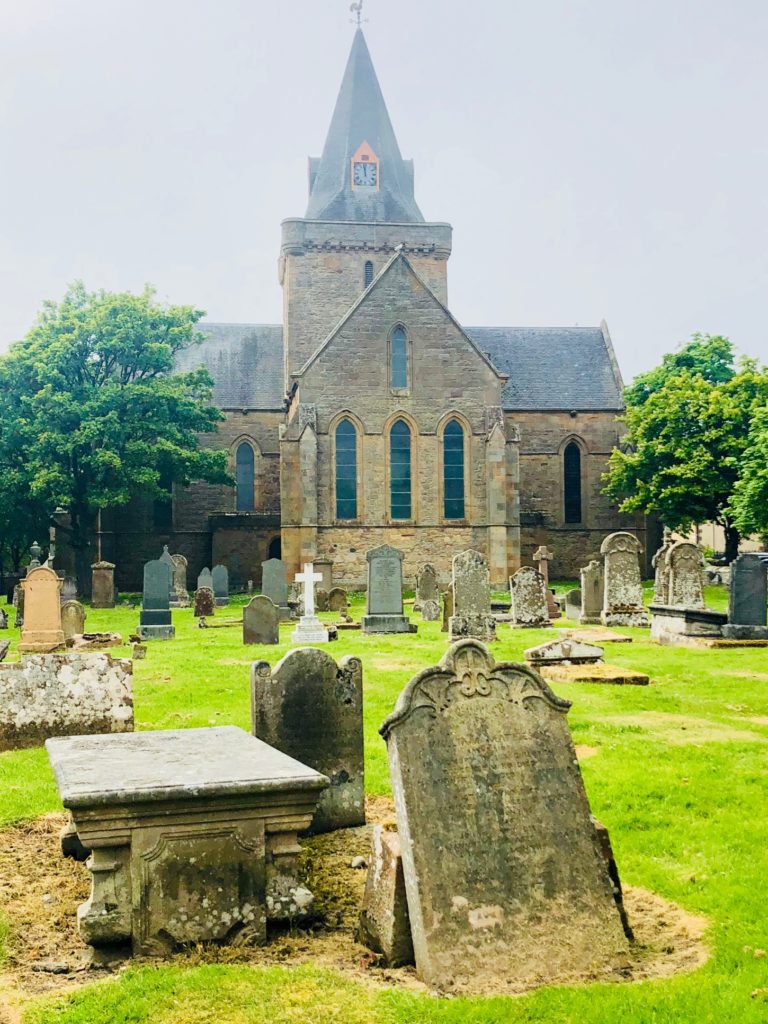
Dornoch Cathedral
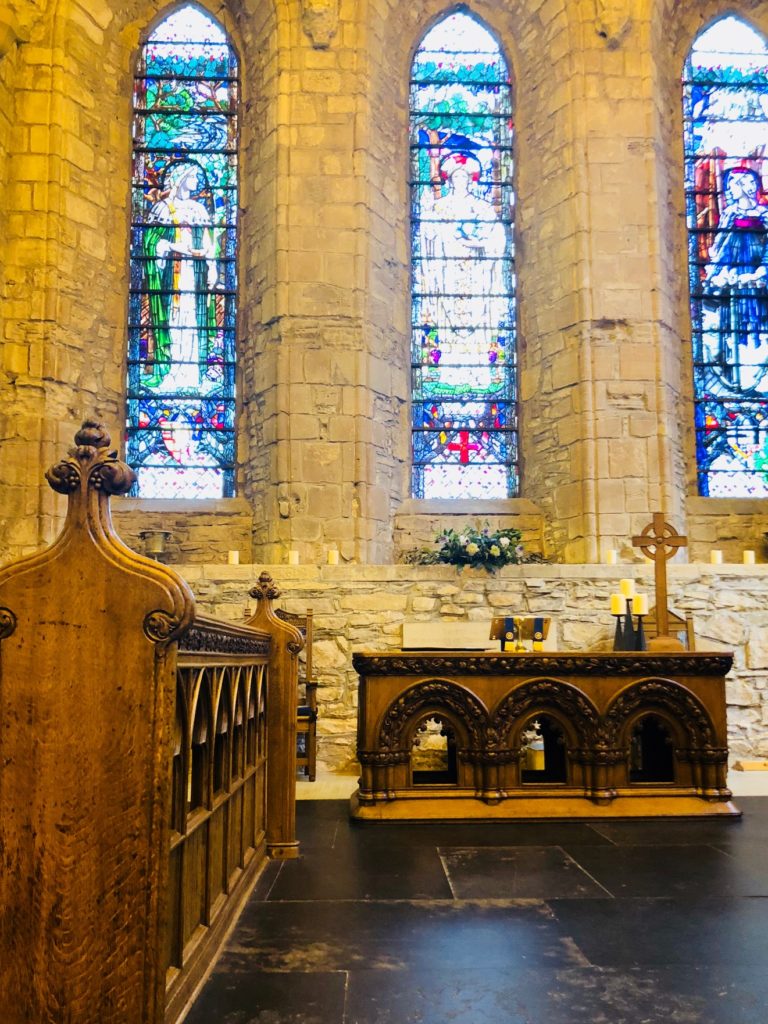
Interior Dornoch Cathedral
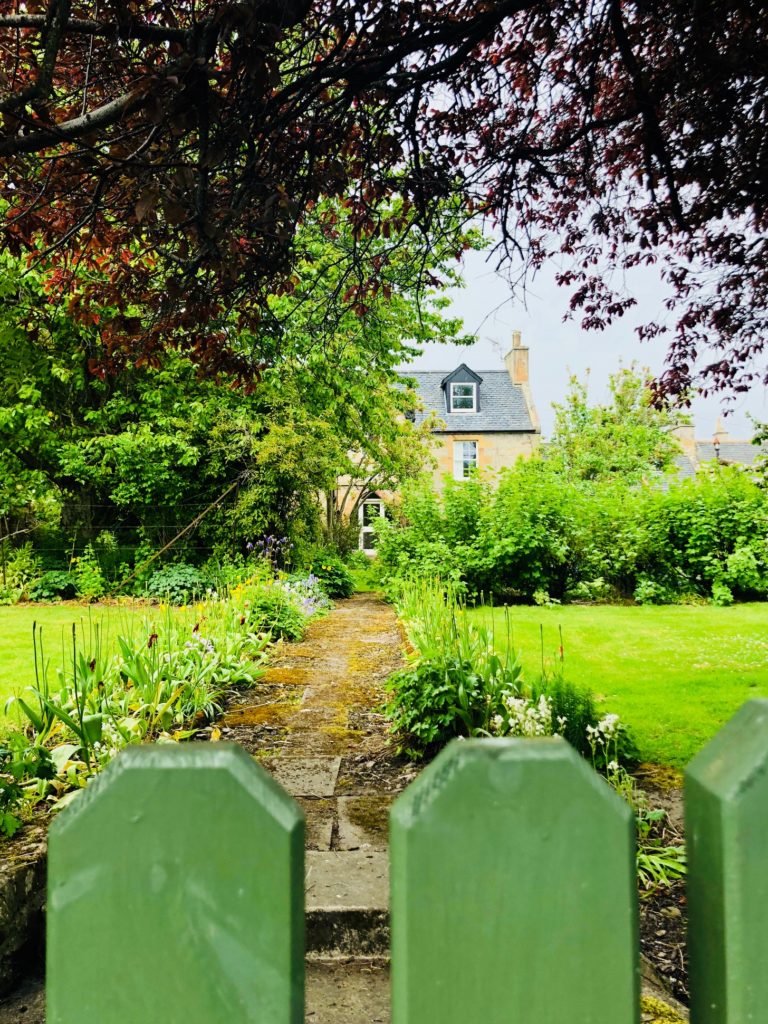
Charming Dornoch
On from Dornoch we continued across the Black Isle – a place I had always been curious about. We saw many of the plentiful oil rig platforms in the Firth of Moray sitting conspicuously offshore. The oil and gas rigs are a way of life for many in Scotland. Some travel long distances to work on the rigs for months at a time away from family and friends. Oil and gas in Scotland account for 96% of UK crude oil and natural gas liquids and the total sales value of oil and gas produced in Scotland is estimated to be £17.5 billion.
As we continued on, I was getting excited to see a place I had only driven through very briefly in past trips and a place where Mr. X had spent many a summer staying with his grandmother and family as a child and young adult. Aviemore and the Cairngorm mountain range are some of the most scenic parts of Scotland you will ever see. This is saying a lot considering almost everywhere you go in this magnificent country is spectacular viewing. I could sense Mr. X’s demeanor change slightly the closer we got to this place that holds many poignant memories for him spending time with his granny. Already extremely enthusiastic about his native country, I could see his face soften and a wide smile appear as we exited the highway and drove quietly and slowly into Aviemore, one of the Cairngorms most popular holiday destination towns. What I wasn’t expecting was the off-the-beaten track visit to Mr. X’s family chapel and graveyard where his granny and many other relatives are buried. It was down a steep path, through some woods in a very secluded, shaded glen. No one driving by on the small single track road above would know this place even existed. I love a graveyard, but more than that, I was enormously flattered that Mr. X shared this special place with me. It was truly lovely there. So peaceful.
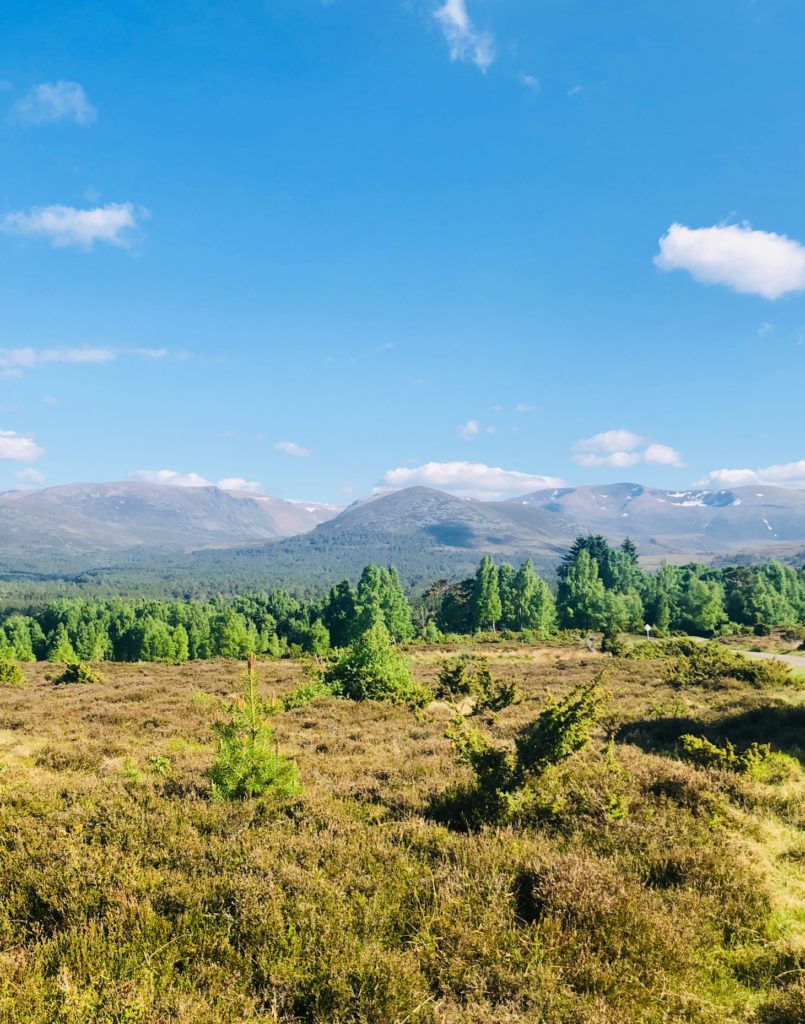
Glorious day in the Cairngorms
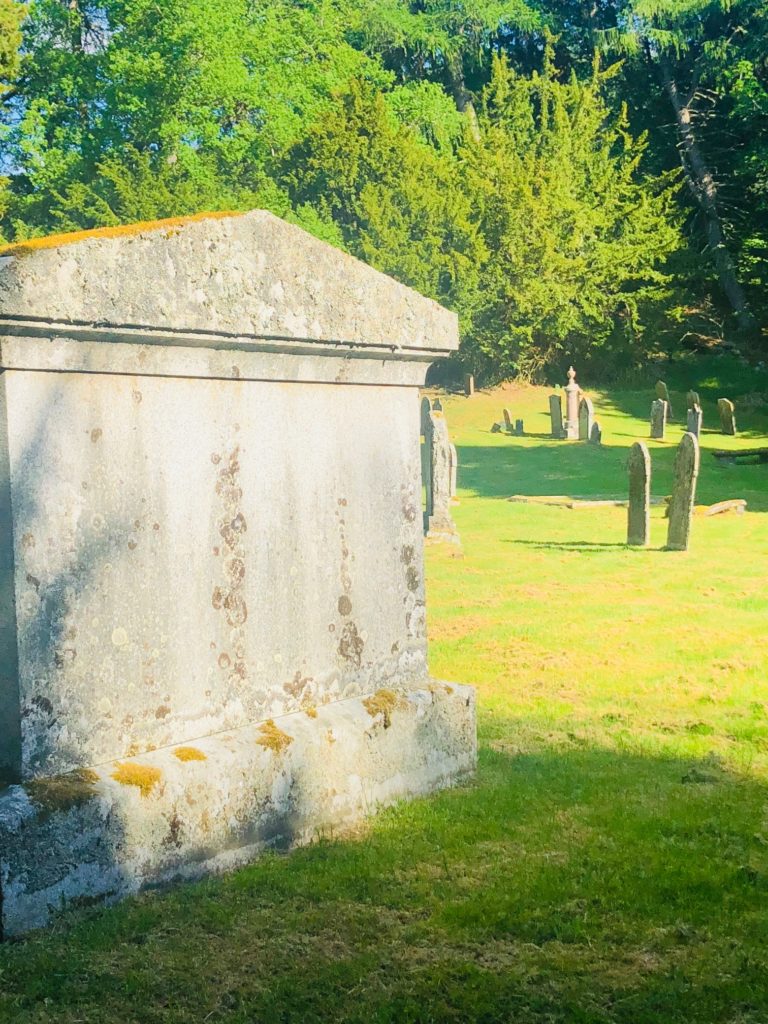
Peaceful family graveyard
We made a quick dinner stop before heading toward Kilmarnock where we arrived quite late and an hour or so later than Tony and Doreen, already well into the drink with the Clarks. Laughter greeted us as we entered and I felt like I was home again. Once more, Peter and Evelyn could not have been any more accommodating and gracious to allow us to spend the next few days in their spacious brownstone on Kay Park in Kilmarnock. Truly, the Clarks are some of my favorite people. It’s always a non-stop laugh fest at their house and an unending supply of booze. However, no rest for the weary as Doreen and Tony had only one more day before flying back to the U.S. We decided to take them over to Alloway the next morning to see Brig ‘o Doon and the Auld Kirk there. Simply put, there is no better time of year to visit the magical gardens of Alloway that surround the Brig ‘o Doon. In late May, the gardens burst with color. It always reminds me of what a fairy garden might look like if such a thing existed. We missed peak bloom by perhaps a week, but were still treated to a sensory overload. Mr. X met us there and we had lunch over at the Robert Burns Museum. This is a nicely done museum dedicated to the Bard. I highly recommend a visit there if you are in the area and it has one of the better gift shops, too.
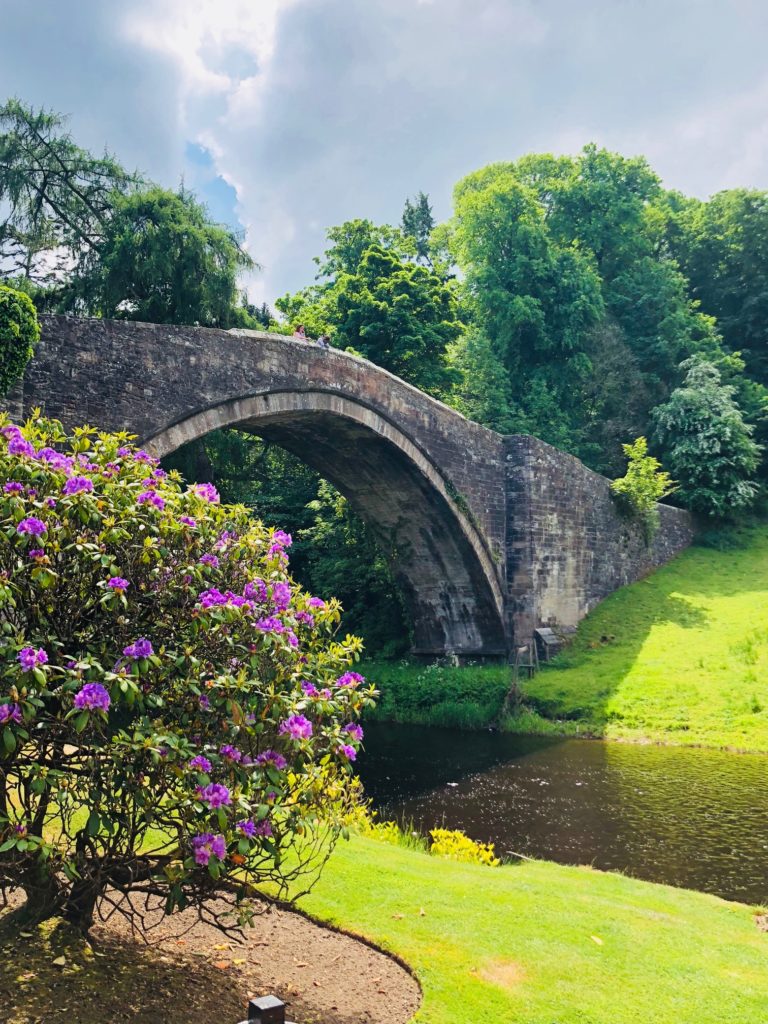
Magical Brig ‘o Doon
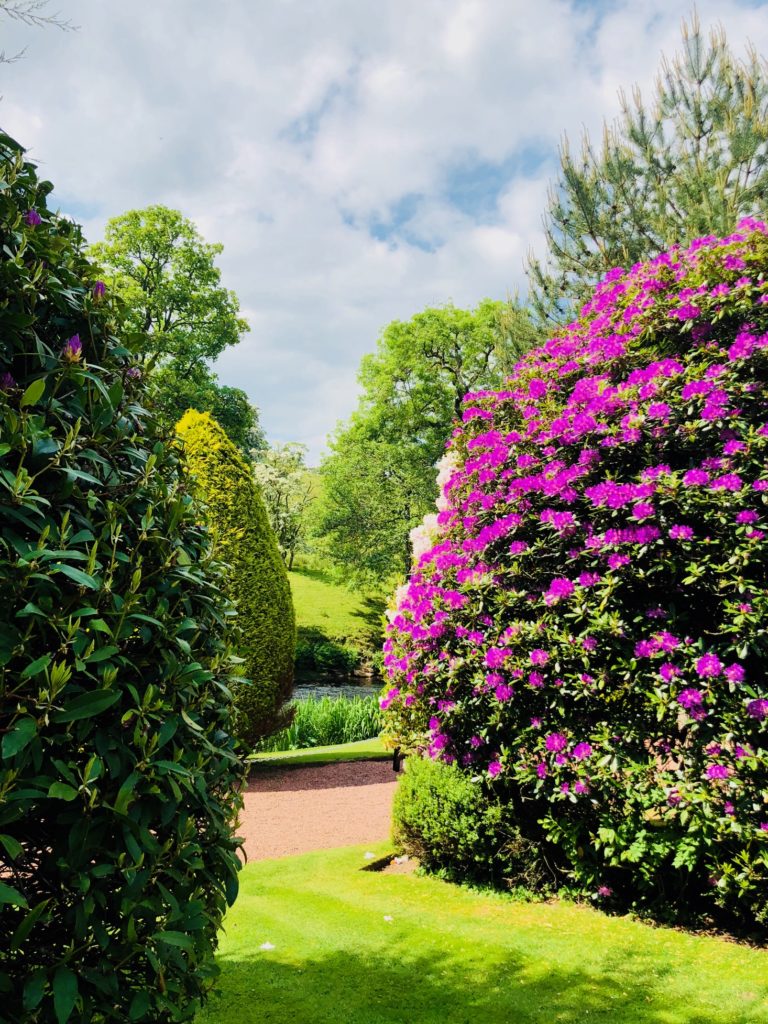
Spring glory
The next day started with a quick day trip over to the Isle of Arran. It was my first time back since walking the Arran Coastal Way in 2017. That was a frantic six days and while a beautiful experience, painful in many ways due to blisters, black-eyes and general soreness from the daily treks. So, when Mr. X and I disembarked from the ferry in Brodick and walked through the brand new ferry terminal, I felt an overwhelming feeling of relief, joy and comfort. I really, truly love Arran. The island will forever be etched in my mind. But, that day, there was no agenda. No mileage to trek, no time goals to make. We just wandered along the beach in Brodick without a care in the world and it felt so good. We made our way slowly to the top of the hill where Brodick Castle sits majestically overlooking Brodick Bay and in the shadow of Goat Fell, the island’s tallest mountain.
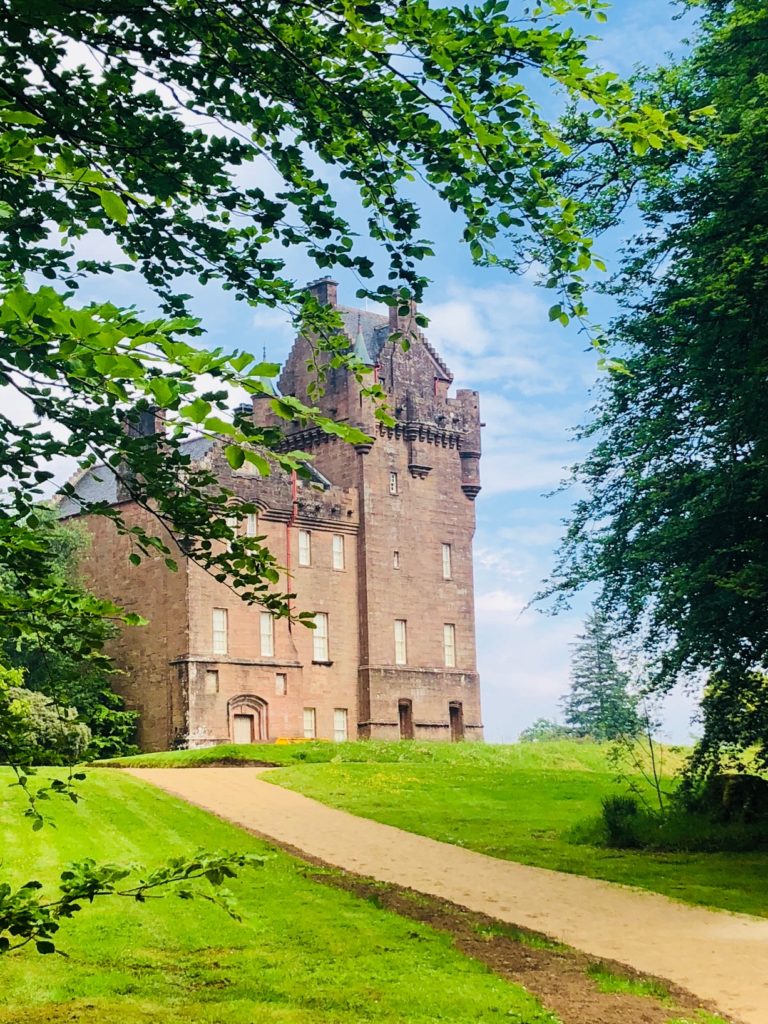
Brodick Castle – Arran
Unfortunately, the interior of Brodick Castle remains closed for renovations. But, something I didn’t get to do in 2017 was wander the extraordinary gardens and garden paths of the castle grounds. It’s a hike to get to the castle from the main road, but well worth the huffing and the puffing on such a warm day. The gardens were stunning and so many hidden gems along the paths surrounding the castle and gardens. A quick stop at a tea room on the way back down the road and a few gorgeous roadside views of mighty Goat Fell greeted us as the sun shone bright and the clouds cleared. Making our way back to the ferry terminal, we started tallying the beautiful moments we were experiencing and again counting ourselves lucky to be witness to such magic. Sailing away from Arran sitting on the back of the ferry, I took in the startling views of this island in the clearness of the day and through the haze of the bright sun. Arran holds so many feelings for me and so many memories. I couldn’t wait to return sometime soon…
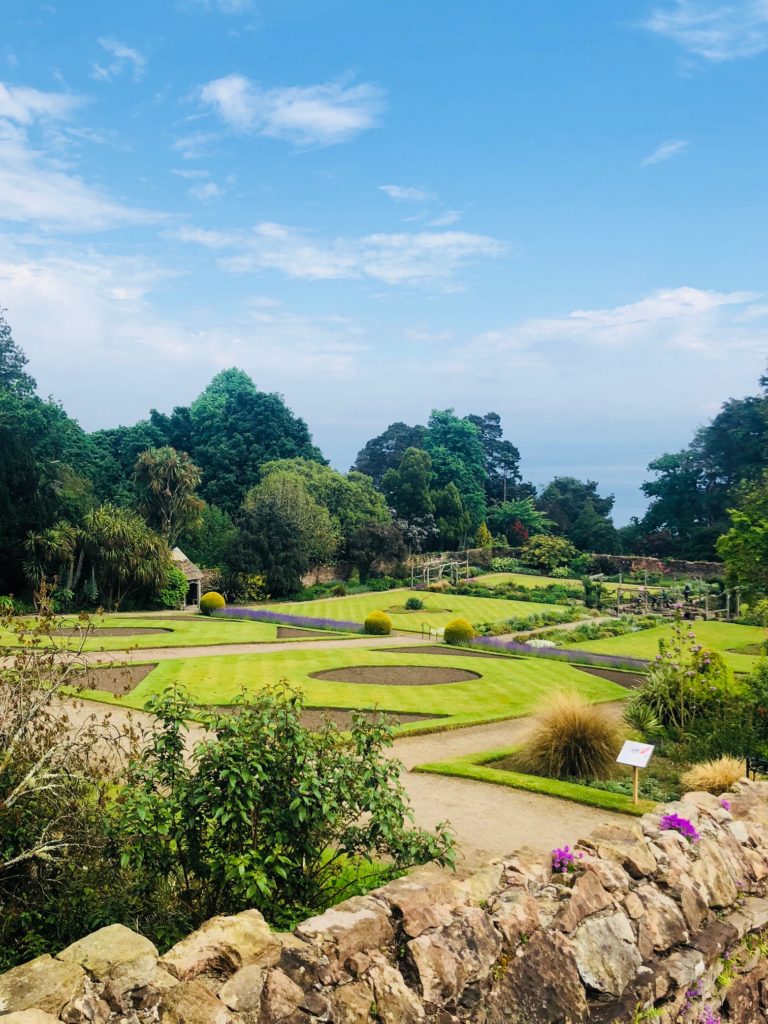
Brodick Castle Gardens
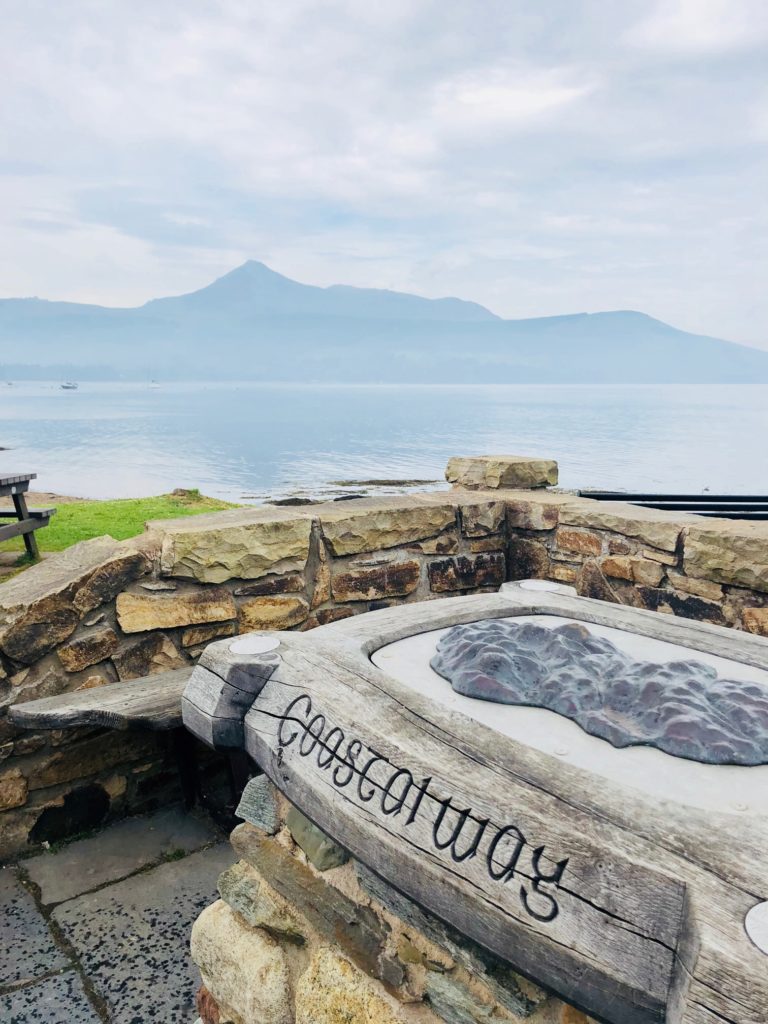
Return to the Coastal Way and Goat Fell
The following day Mr. X had organised yet another boat ride. But, this one was VERY special and was a particular #BucketList item of mine that he and I had spoken about almost since the day we became acquainted. He had arranged a boat to Ailsa Craig. Ailsa Craig is a very small island off Scotland’s west coast. The island had always fascinated me since I saw it three years ago on my first trip to Scotland. And, in 2017 when on the Isle of Arran, I would awaken every morning in my bedroom in our cottage on the sea cliff and on clear days, Ailsa Craig would be floating out there in the sea. Ailsa Craig translates to “Fairy Rock” in Gaelic and that’s exactly what I *thought* it was — just a giant volcanic rock in the ocean. If you see Ailsa Craig from afar, that is what it looks like — a huge, grey rock. This made sense since Ailsa Craig is the primary source for the blue hone granite that is used to make the world’s curling stones. The island is mined every 15 years or so for this unique stone but then otherwise left as a protected bird sanctuary.
Despite living in Ayrshire for the last ten years and seeing Ailsa Craig out his window almost every single day, Mr. X had never made the journey to the Fairy Rock. In fact, I found out that few people who live in Ayrshire and on the west coast ever make it a point to go there. However, after three years of being mesmerized by this tiny island, today was the day I was going.
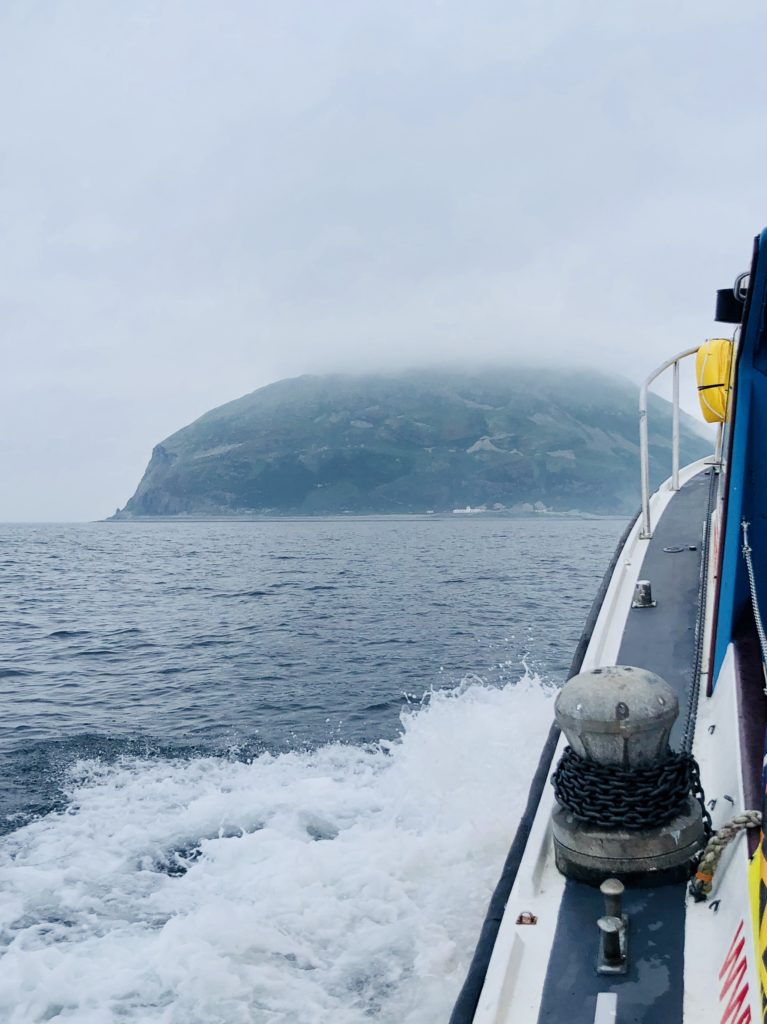
On the way to the Fairy Isle!
The ride over in *very* small boat with about eight other hardy souls was an easy hour and a half. We left from Girvan Harbour on a dull, cloudy day. When we started off, the island was obscured in mist — as it so often is. But, as we came closer, we could see it slowly appear and surprise, the island wasn’t grey at all but verdantly green and lush. Landing on the island was precarious at best, dangerous at worse. The “pier” is falling apart and covered in slippery green algae. We were let off and then the boat sped away with the promise to collect us in two hours.
What really took us both by surprise at that point, was the island seemed to be a spookier version of the Land that Time Forgot. There was the lighthouse, of course — now automated — but also about a half dozen abandoned buildings of various sizes and configurations. Wandering through them, it looked like the people living and working there just suddenly up and left — leaving things behind just as they were. It was very eerie but fascinating and intriguing at the same time. Mr. X. and I wandered and took a ton of snaps — in one case narrowly avoiding dive-bombing seagulls trying to protect their nests. It was definitely shades of Hitchcock’s The Birds. However, we avoided getting our eyes plucked out and continued to be amazed at this strange place that neither of us expected to see. Despite my unease, I found great beauty in the oddness and the seeming suspension of time. My photos reflect this, I think — finding beauty in the chaos.
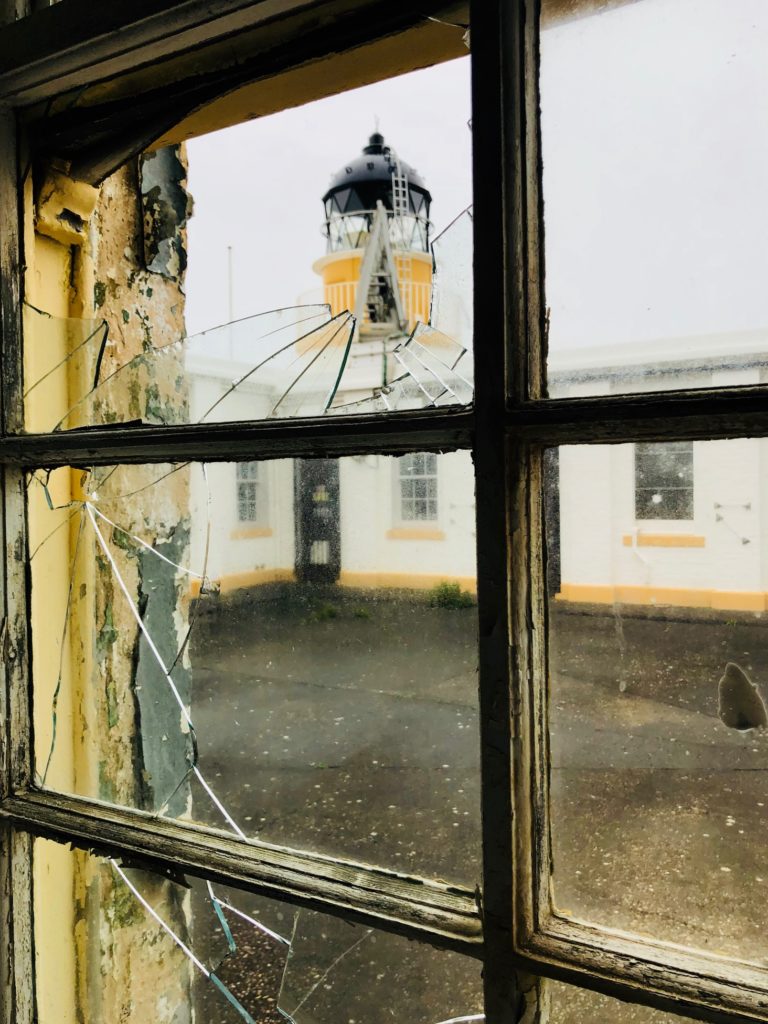
Lighthouse amongst the ruins
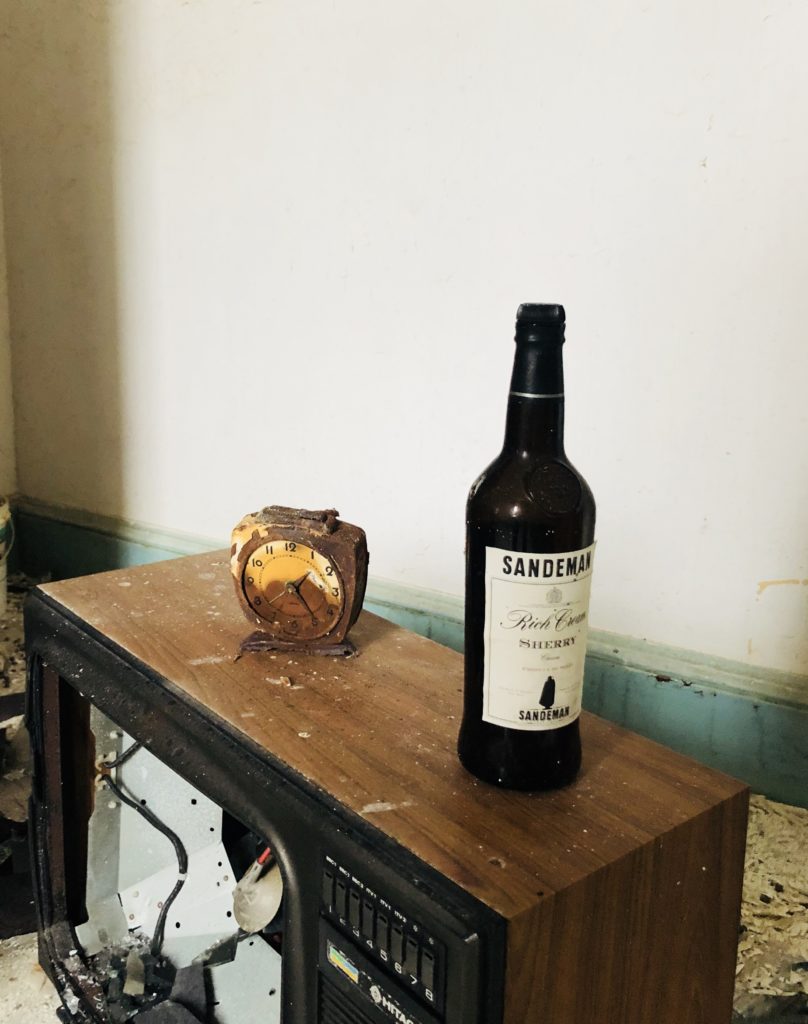
What remains
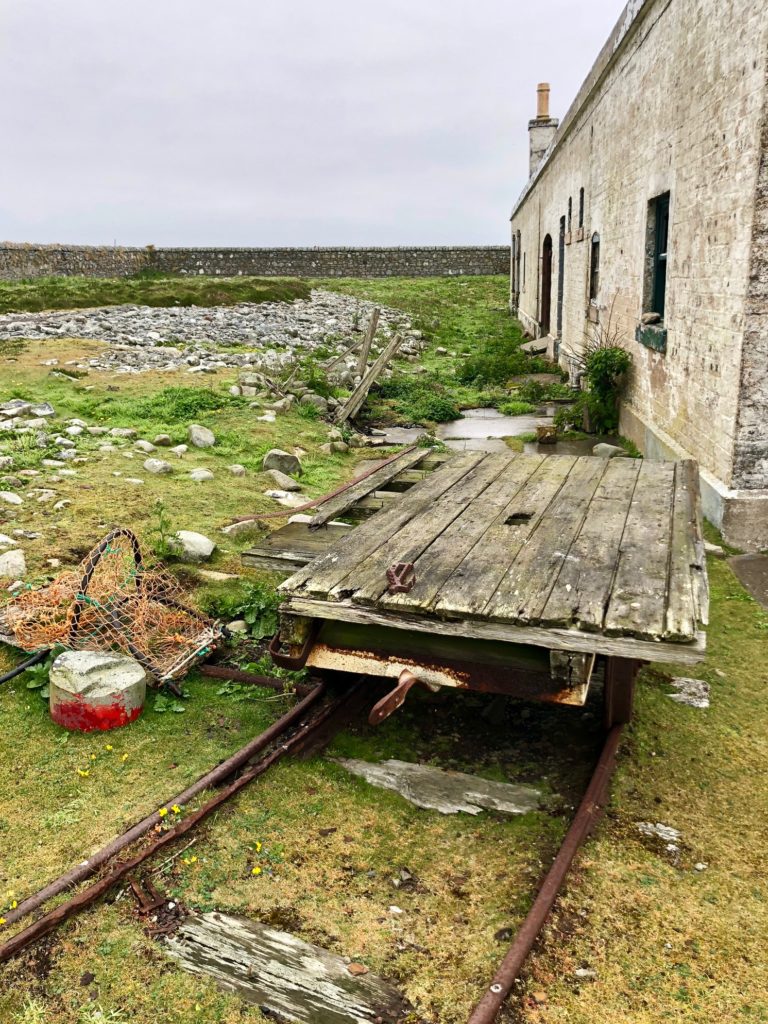
Rail line and mining relics
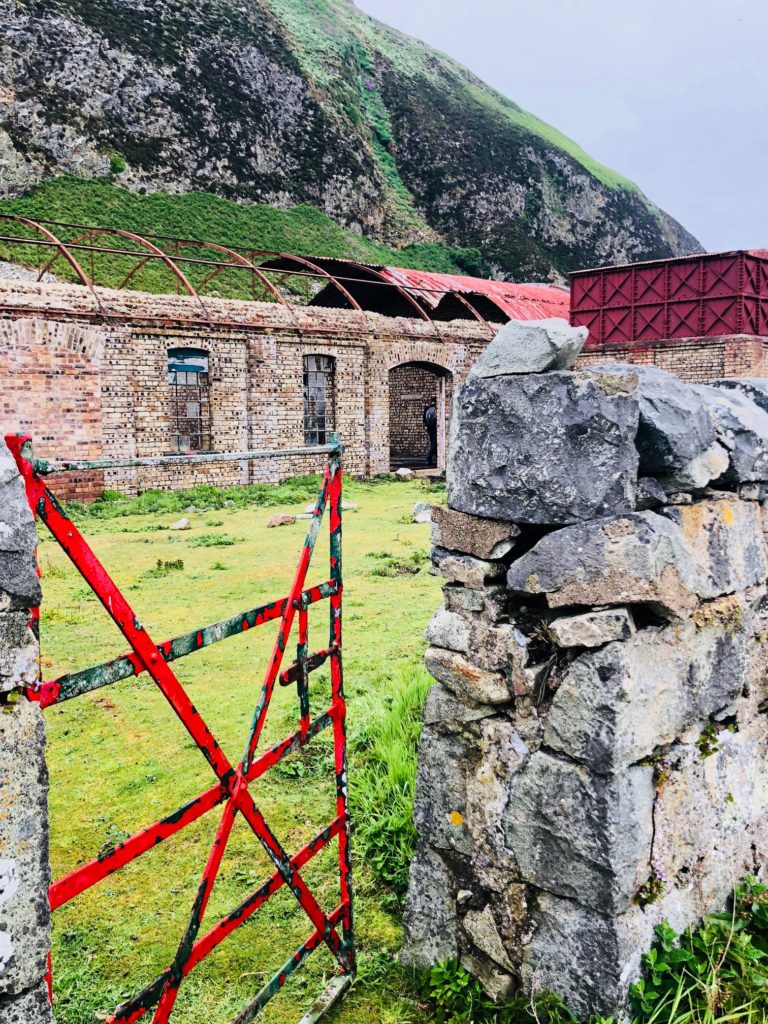
Beauty in the chaos
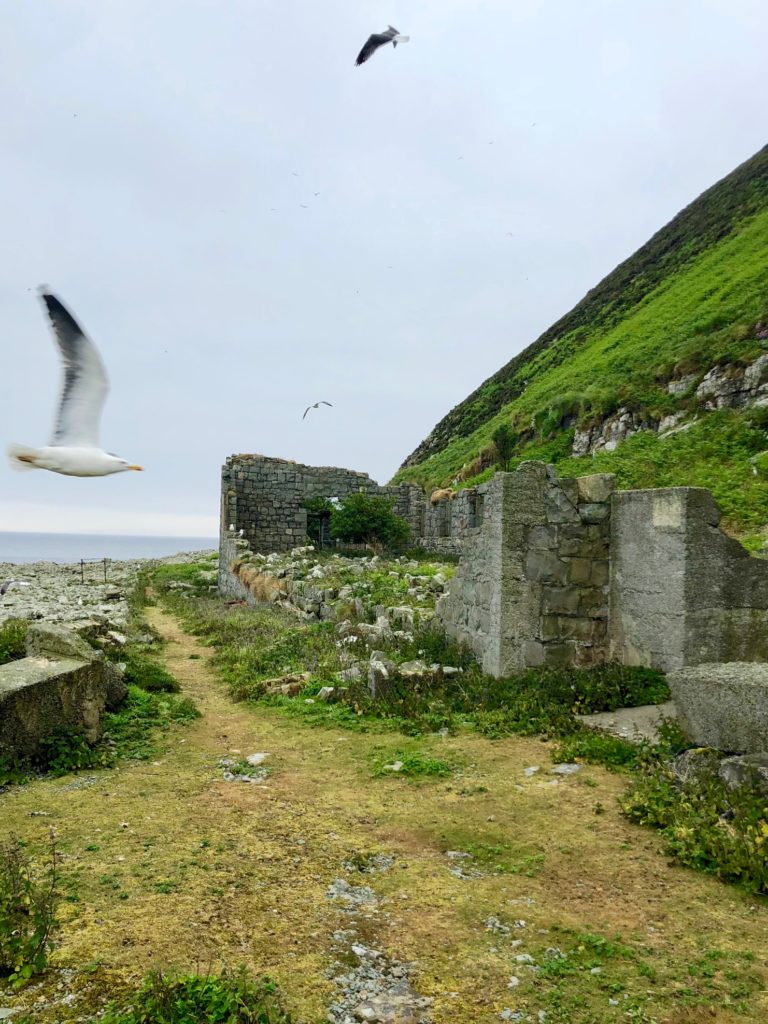
Attack of the Killer Gulls!
On the way back to the harbour in Girvan, we took a spin around the island and saw swarms of nesting birds atop the green and craggy cliffs. Seeing the thousands of birds flock together was magnificent and inspiring. I have to count this visit to Ailsa Craig as an absolute highlight of Scotland 2018. Who would have thought? Certainly not me. I felt transported that day. It was the company I was keeping for sure, but it was also the absolute magic I felt as we made that long ride across the sea and were witness to very odd but strikingly beautiful scenes of ruin. I felt my soul and my heart swell that day in profound ways that I am sure I would never be able to adequately express. It was truly a day I will never, ever forget. If you find yourselves on the Ayrshire coast, make it a point to travel to Ailsa Craig. It will be an experience like no other.
I was beginning to think at this point in the trip – with just a few days left – that there was not a chance in hell I would be able to top any of my previous experiences. There had already been so much magic, so many unique places, people and phenomenons, that what could possibly be left? In fact, there was one. Mr. X insisted that a trip to the Isle of Bute needed to be on my itinerary. Another Scottish island? He was getting no argument from me. We set off planning to spend the weekend exploring both the very famous Mount Stuart House on the island, but also, we hoped, many hidden treasures.
Only 33 miles from Glasgow, the Isle of Bute is the most accessible of the westerly isles from the Scottish Central Belt. We hopped the CalMac ferry at Wemyss Bay and were in Bute’s main village, Rothesay, in under an hour. Lingering morning fog had given way to sun and clouds and exceptionally warm temperatures as we sped around the island to Bute’s crown jewel — Mount Stuart House. The spirit of nineteenth-century invention is embodied in Mount Stuart. A feat of Victorian engineering, this neo-gothic mansion was one of the most technologically advanced houses of its time. The house is set in 300 acres of grounds that include designed gardens, woodland and coast.
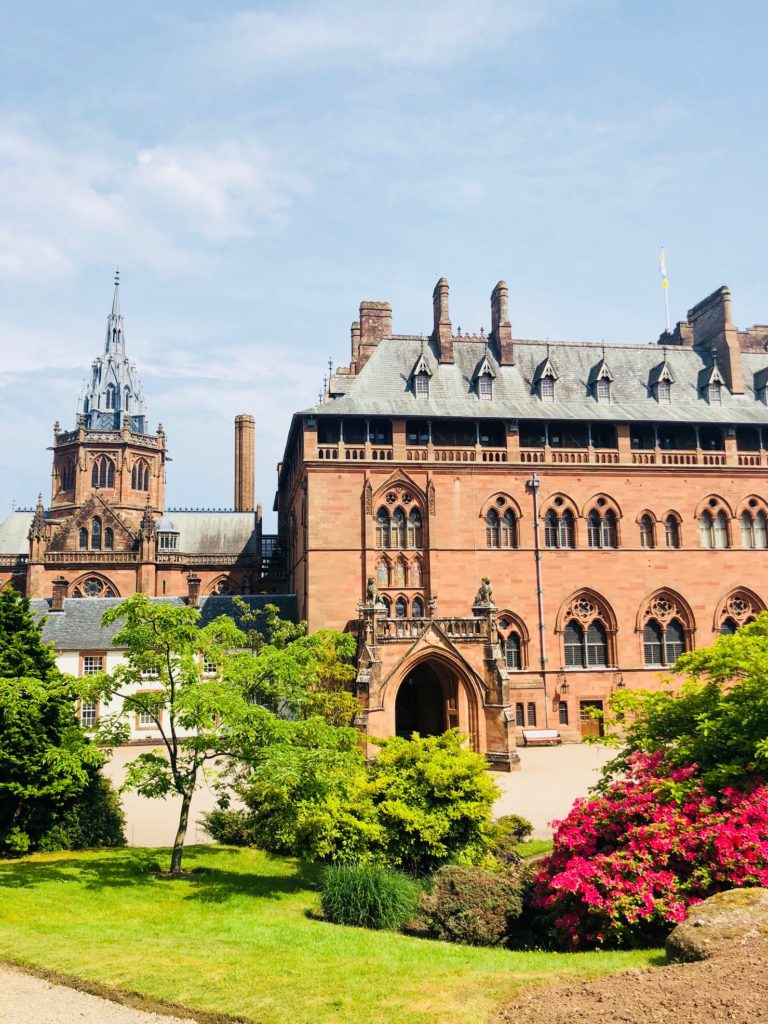
Stately Mount Stuart House
Mr. X had been to Mount Stuart several times. He regaled me with stories of the house’s unique beauty. But, until you see it, you can’t really fathom its exquisitely detailed architecture and interiors. Mount Stuart is the ancestral home of the Marquesses of Bute. It was designed by Sir Robert Rowand Anderson for the 3rd Marquess of Bute in the late 1870s replacing an earlier house that burned down in 1877. Mount Stuart claims to be home to the world’s first heated pool in any house and was the first home in Scotland to be lit by electricity. All fascinating but for me, it was the astonishing interiors, especially the marble throughout the home and intricate cornices and carvings. I have traveled many places in the world but have never seen marble like this — in all hues and variations.
The chapel was breathtaking as was the main hall and bedrooms (and their intricate ceiling art). But for whatever reason the conservatory really captured my attention. The conservatory was on the second floor through one of the main bedrooms. It was large and spacious with views of both the main tower of the house but also the great lawn and beyond to the Firth of Clyde. Mr. X. and I wandered from room to room in the house separately and together. We were overdosing on snaps and camera angles. When we exhausted every angle in every room we meandered through the “Wee Garden” above the house and then decided to walk the coastal path back to the green house gardens and visitor center. The serene walk back along the coastal trail with only the sound of the waves lapping against the shore felt cleansing. Mr. X. and I walked along in silence most of the way, not encountering another soul on the path. Mount Stuart House and gardens exceeded the very high expectations that Mr. X. had set for me. But, it was still mid afternoon and we had more exploring to do.
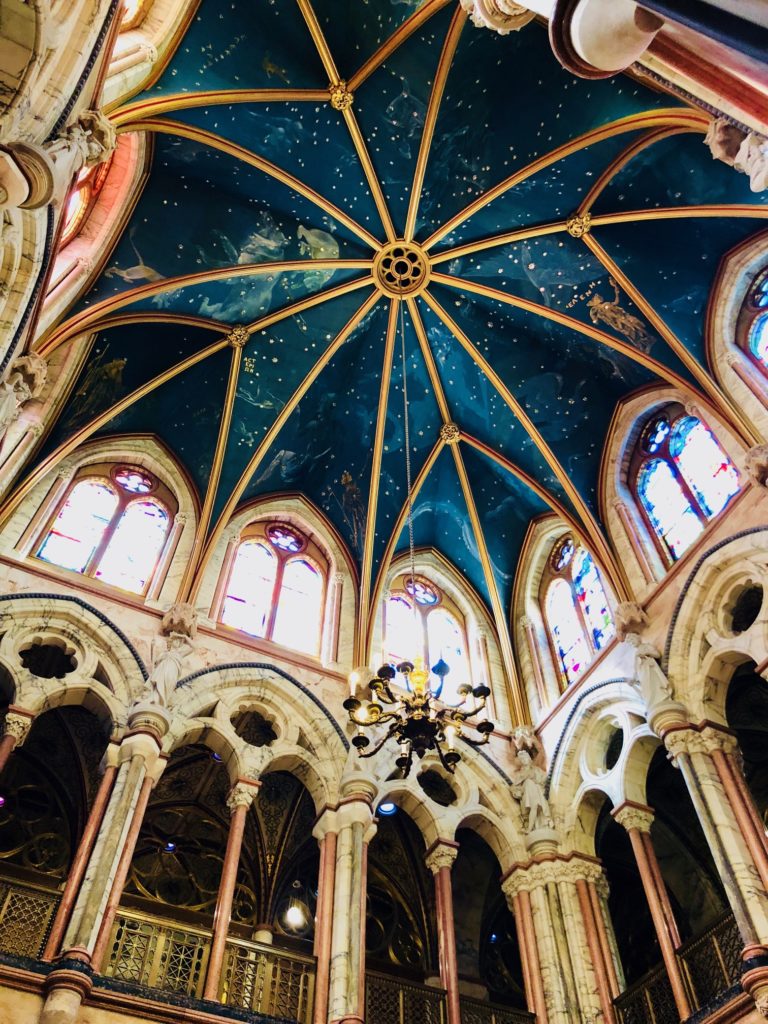
Not the Outlander Star Chamber but pretty close
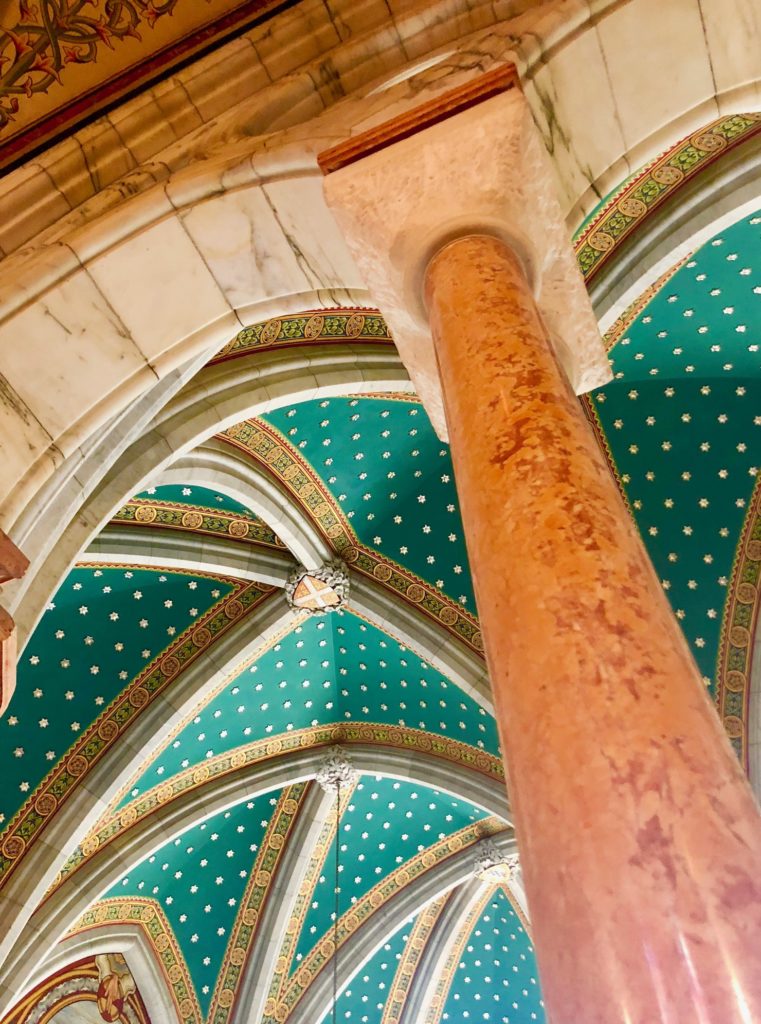
Marble for days
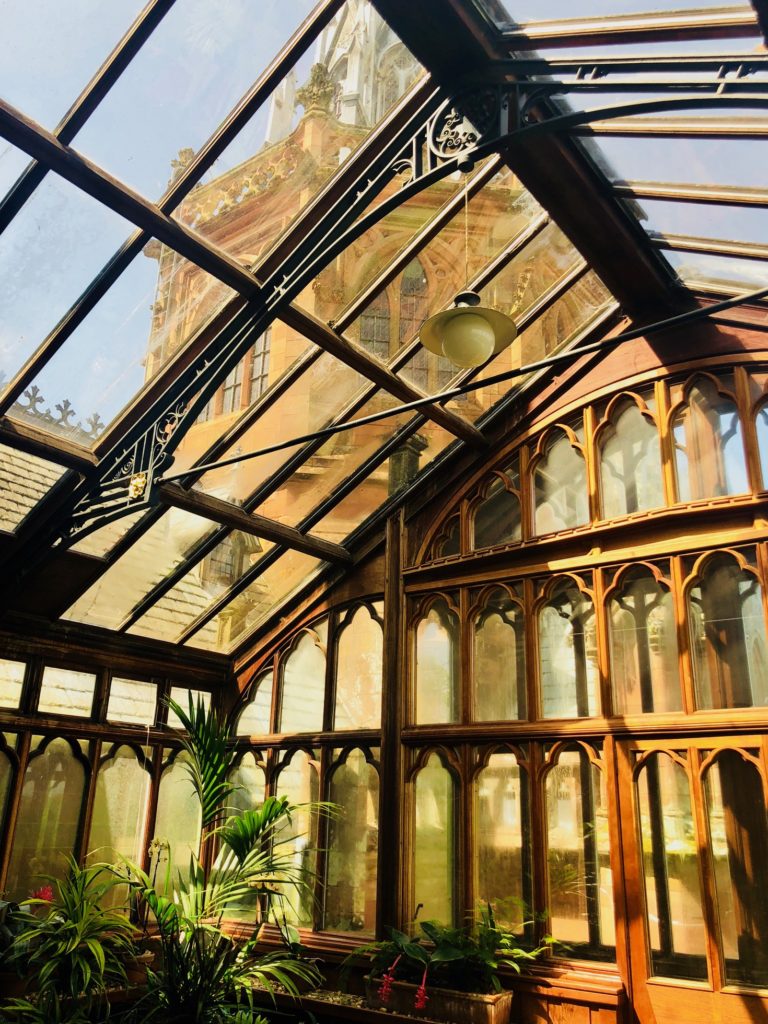
The Conservatory
We were wondering how in the world we could top Mount Stuart and the views there — inside and outside the house — when we left mid afternoon in the roasting heat of #ScotlandSummer. But, usually around a corner in Scotland you will find one of three things. 1) Church Ruins 2) a Castle or 3) Standing Stones. That afternoon and the following morning, we explored all three because, well, that is what you do when in Scotland!
After a long drive around to the other side of the island, we discovered the surprisingly extensive St. Blane’s Church ruins on the southern tip of Bute. Built in a sheltered hollow near the top of a south facing slope, this magnificent site comes complete with beautiful views south to the Isle of Arran. Arran looks so close there that you almost feel like you could jump in and make the swim! It was a hike to make it to the hollow where the ruins sat but we stopped a few times to turn around and gasp at the views. Most of the remains seen today, date back to the 1100s. The upper and lower churchyards come complete with a large selection of fairly worn grave slabs. The first Christian settlement on this site took place as early as the end of the 500s when St. Catan established a monastery here. He was succeeded by his nephew, who later went on to become St. Blane. St. Blane is perhaps better remembered for lending his name to Dunblane, which he later established. But, it was on Bute that he started his religious work. In the 1200s St. Blane’s Church was constructed as the parish church serving the whole of the Isle of Bute. It was thrilling to walk purposely around these very ancient remains of a building that at one time was the heart of a vibrant community on Bute.
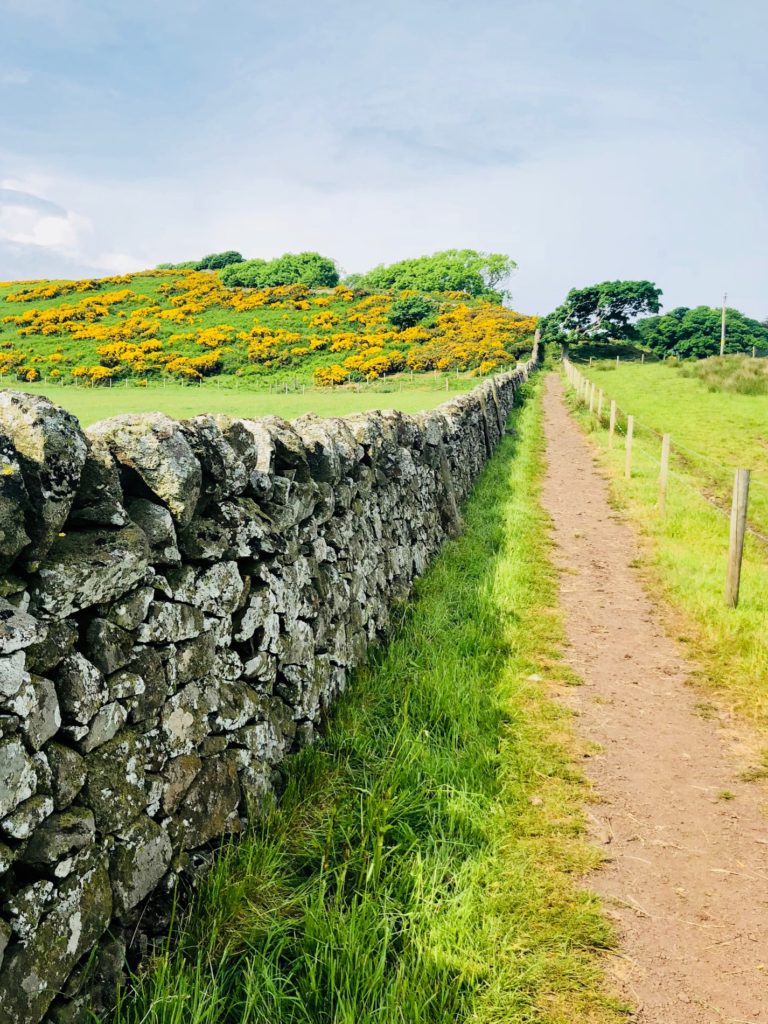
The climb to St. Blane’s
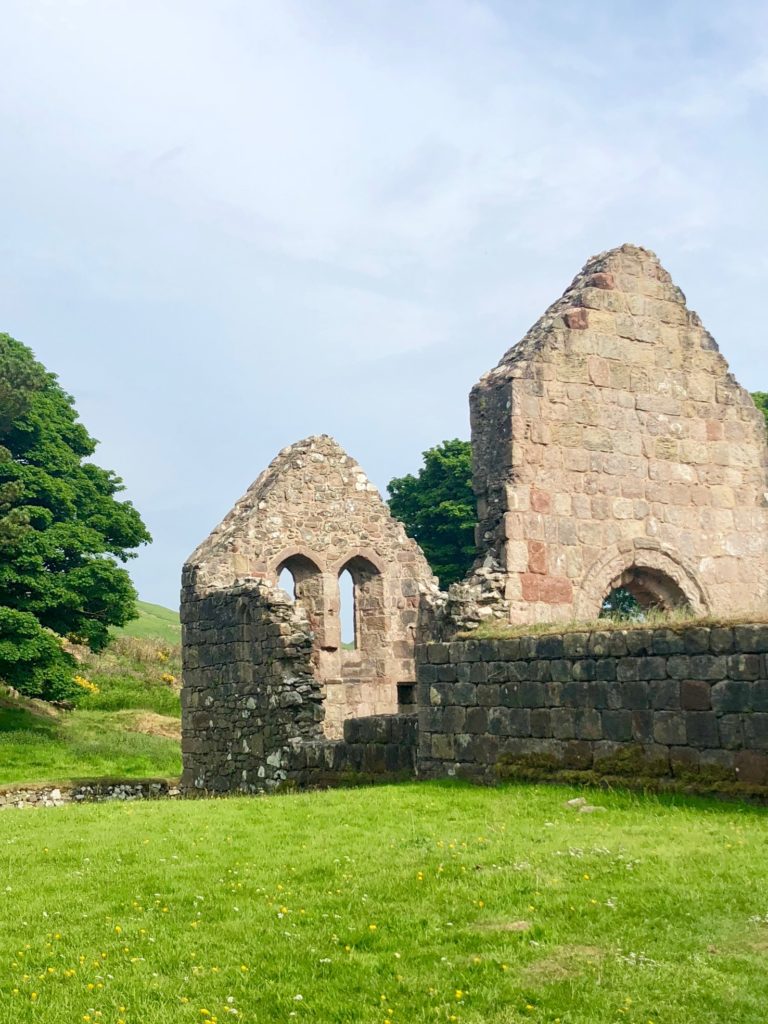
St. Blane’s
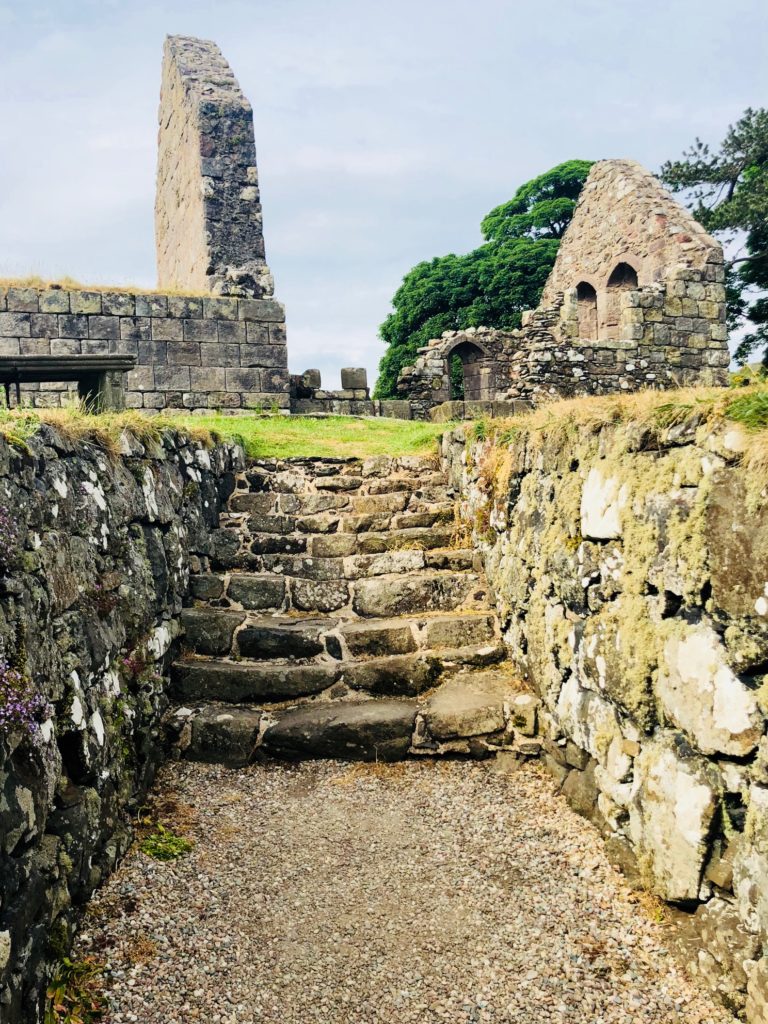
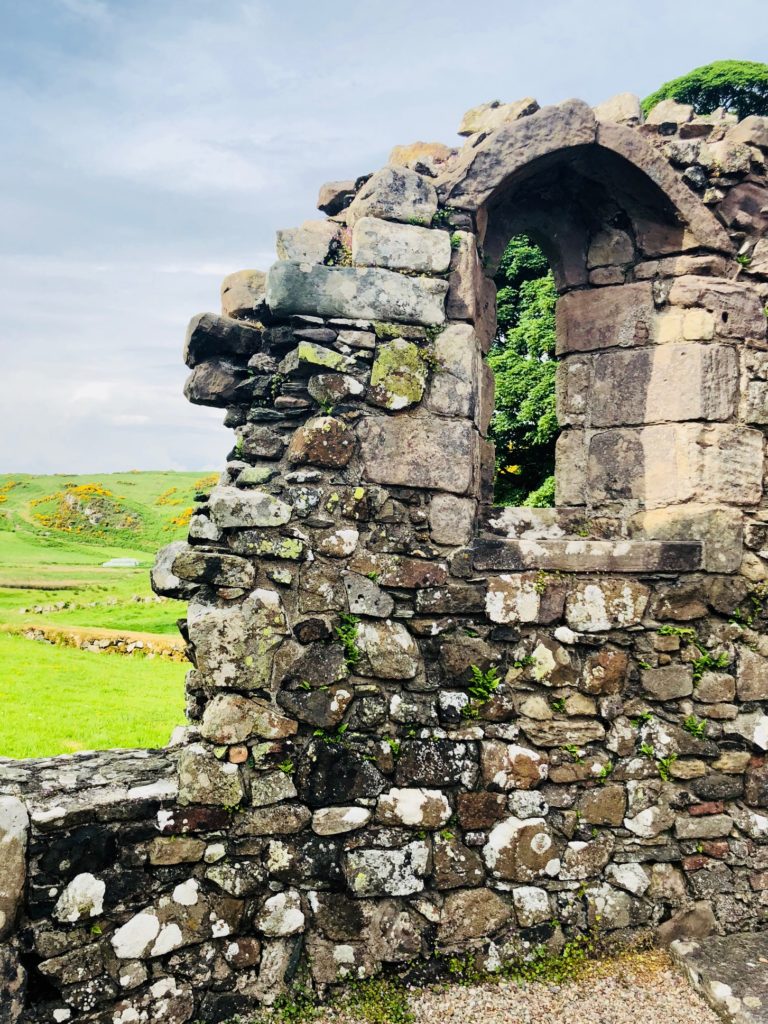
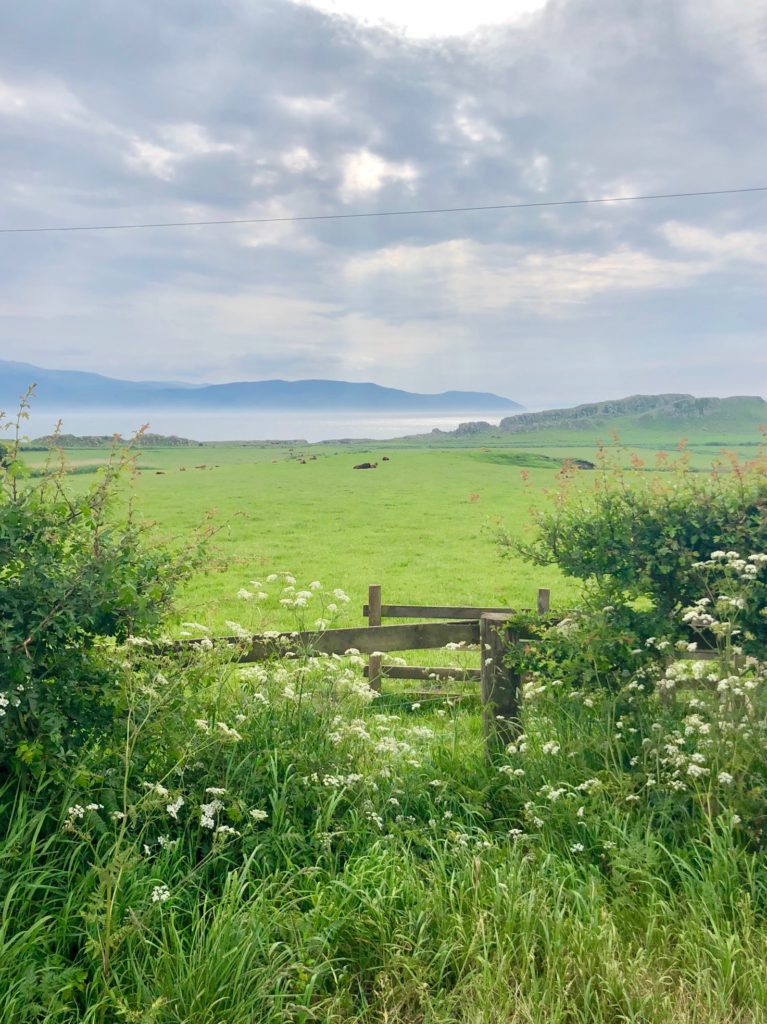
Views of Arran from southside of Bute
After a delicious dinner in the surprisingly quiet (for a Saturday night) village of Rothesay and another memorable sunset, we vowed to explore Rothesay Castle in the morning. Although a bit dank and just a little wet the castle proved fascinating. It is Scotland’s only round-shaped castle built to withstand attacks from Norse Vikings intent on re-taking Bute from Scottish rule. In reality, Bute changed hands a number of times during the medieval period and Rothesay Castle was always in the center of the action just as it sits dead center in the middle of Rothesay village. Odd to see a medieval castle in an “urban setting.” Obviously, not the case back in the day but certainly convenient now!
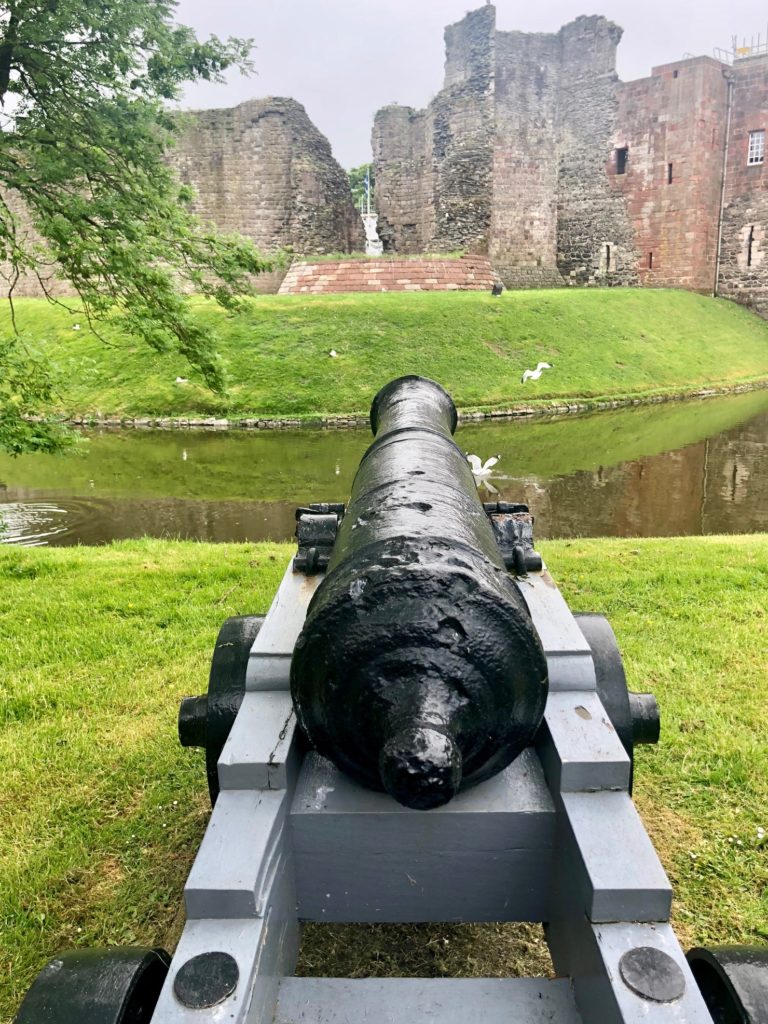
Rothesay Castle
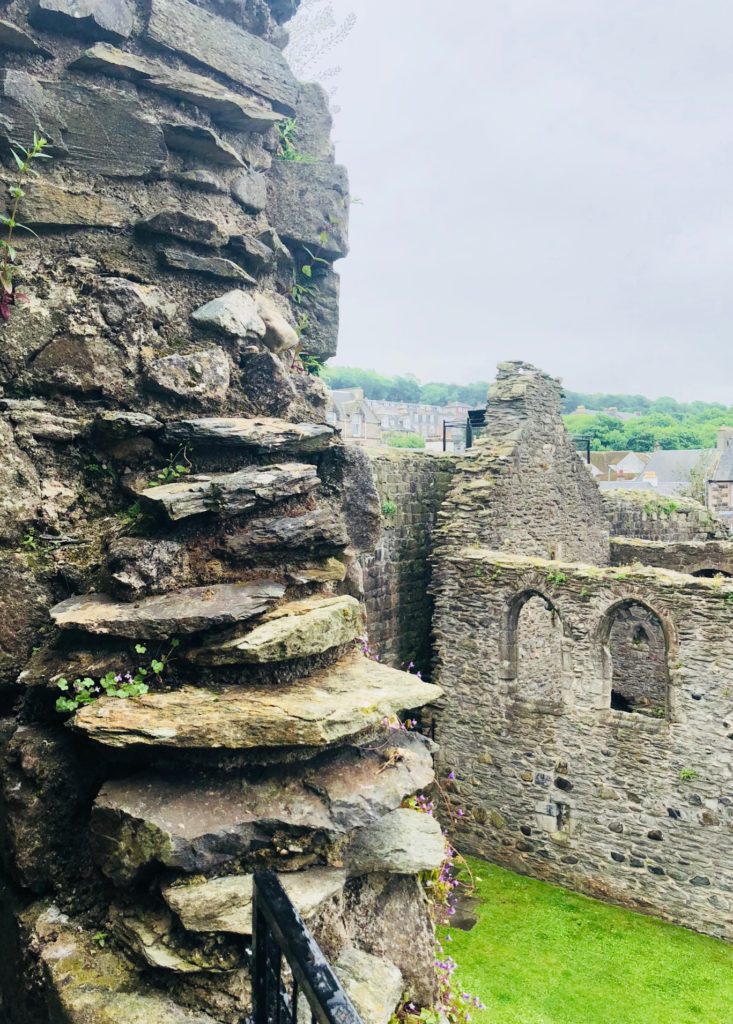
One more excursion before we hopped our ferry found us trudging through a field of cow shite (really stinky) to photograph another random set of roadside standing stones. Then from there on to more church ruins for beautiful views towards the water and some fascinating groups of gravestones, iron gates and stone walls. Before we headed back to the ferry, though, we found a charming beach café. It was yet another lovely day and after gathering our large mugs of coffee from the very friendly café staff, we sat silently on a bench looking out across the Firth and over to Arran. We both were feeling grateful for a fairy-tale-like 48 hours on this enchanted island.
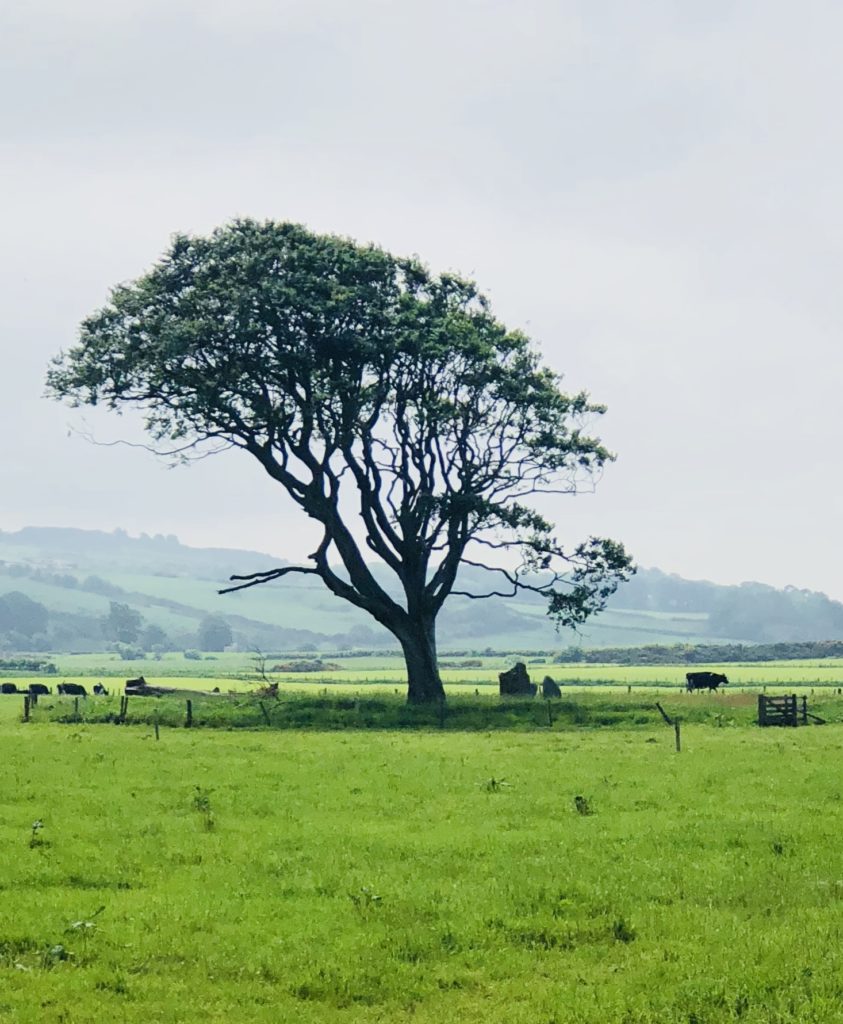
Random Roadside Standing Stones (they are everywhere!)
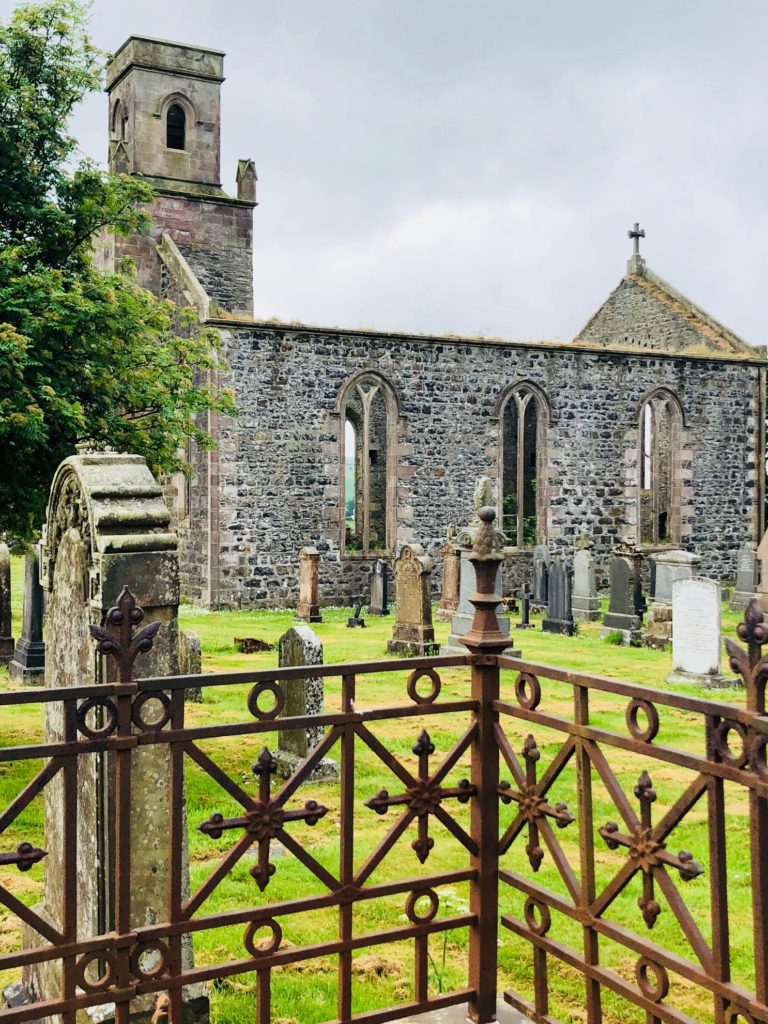
Unknown Church Ruins — Bute
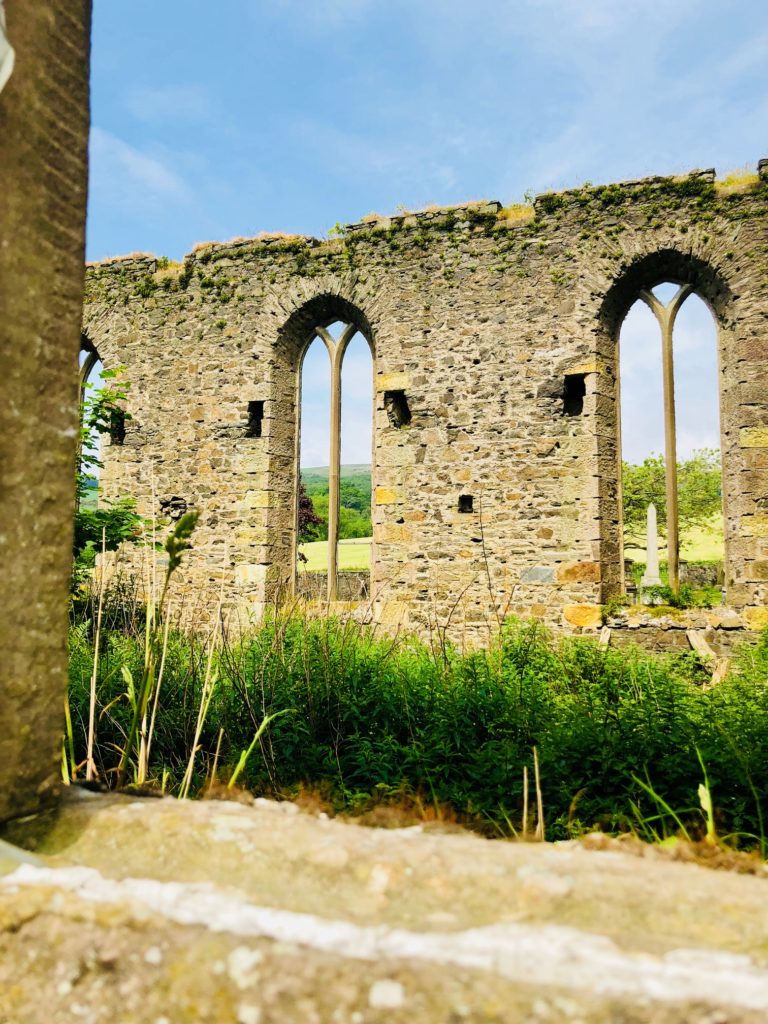
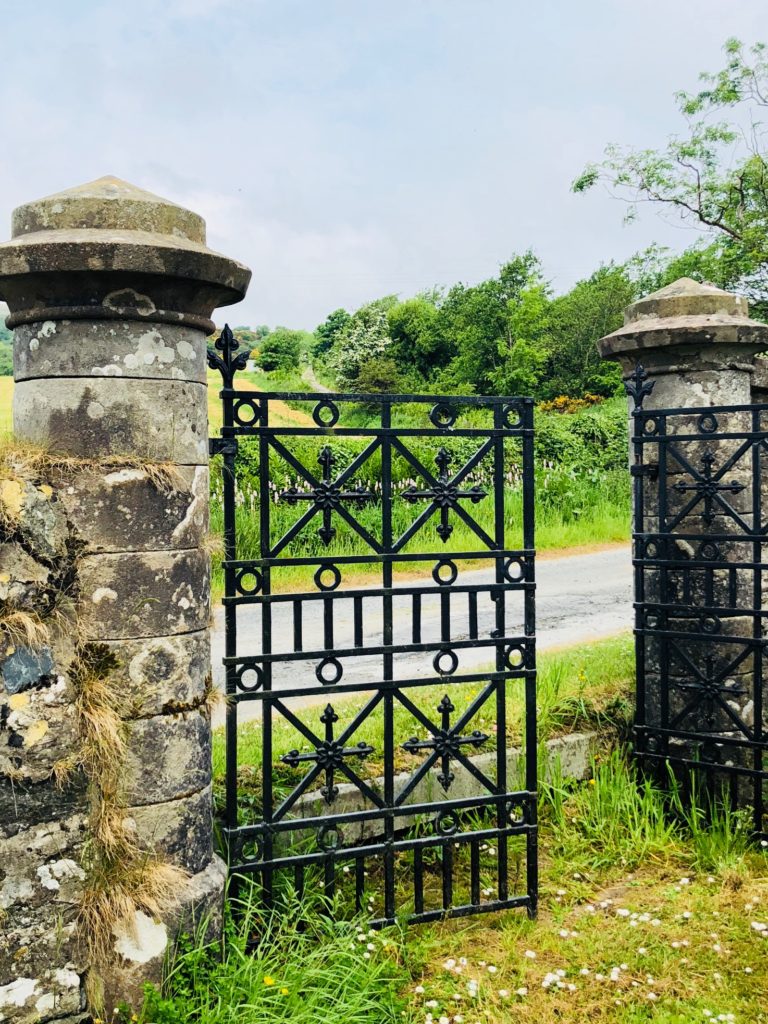
I love GATES!
As we crossed the Firth back to Mainland Scotland, I started to feel a familiar lump in my throat. I was leaving Scotland tomorrow and I wasn’t near ready to go. Mr. X was feeling it, too. I couldn’t have asked for a better traveling companion or someone who delighted in the antiquities of Scotland’s past as much as I did. We had covered a lot of ground together, in more ways than one. I wasn’t just leaving Scotland, I was leaving a very big part of my heart behind. It was by far, the best trip of all three I had taken to Scotland. Despite having spoken about the magic interminably when recounting my visit this year, it deserves to be called out, each and every time. I suppose it affects me so profoundly because the magic is not unreachable or irretrievable, or something ethereal that you can’t put shape to. I had it in my hands so many times throughout this trip. It enveloped me on many occasions and made me believe in things I never thought I would. I was blessed with great friends to share this adventure with who crave seeking the hidden places in Scotland like I do. But, if there was any advice I could give to those traveling to Scotland in the future it would be threefold.
#1
Be sure to come with an open heart. Perhaps that sounds like odd travel advice to give, but I really felt this trip that consciously willing myself to remain open to each and every experience really enhanced my enjoyment of the trip overall and changed me and my perspective on life and love. The advice my psychic medium friend, Alan, gave me that night on Skye (I wrote about my psychic reading in Part 1 of the Scotland Diaries ) was to approach this trip and my life with an open heart. He sensed the evening of the reading that some things were holding me back. He wasn’t wrong about that despite hardly knowing me. I took that advice to heart when it came to the trip but also my time with Mr. X. So very glad that I did. It changed my life in profound ways.
#2
Scotland is a place you want to experience by foot. Again, sounds like odd advice, but despite the vastness of the country and the need for some sort of motorized travel to move from one place to another efficiently, you must get out of the car, the bus, the train and you must walk. If you are not fit to walk, then you must get fit before you come. So many of Scotland’s treasures can only be found at the end of the path, the mountain trail or at the top of a cliff. If you are not able to make the trek, you will miss out on so much. Scotland is an active destination. Yes, you can see the country from the inside of a coach, but you will not come close to the magic if that’s all you do. I was exhausted at the end of most days, but every single step was worth it.
#3
Do not rush your trip. Do not choose to visit a dozen destinations and expect to see them fully if you only have a week to do so. I was fortunate to have nearly a month to explore this year. But, I made a point to stay almost a week in each place so that I could savor not just the place, but the people. I find the people of Scotland and the friends I know there to be some of the most fascinating people I have ever met, and some of the most friendly. It’s not just the place; it’s the culture. It is seeing how others live and hearing their stories. It’s also about getting off the beaten track and exploring the less obvious. As an example, my first trip to Skye in 2016 was remarkable, but I had little time to really explore. This year’s trip to Skye topped that by a mile because I chose to spend much more time there. It allowed me time to dive much deeper and really experience the mountains and the seas with great friends and totally different life experiences then me. It was what I wanted for my return to Skye and it was better than I had hoped. If you only have a week, choose 1-2 places to visit and spend at least three days in each. Trust me. It’s the best way.
As has been the case the past three years, plans are already underway for Scotland 2019. I can’t stop and I won’t stop visiting this amazing country. So much still to see and do and more magic to experience. I hope you enjoyed coming along with me this year. Until next time… Sláinte!
What are some “travel lessons” you have learned either from visiting Scotland or other places?
 Anne Gavin is a senior writer at Outlander Cast and
Anne Gavin is a senior writer at Outlander Cast and obsessive frequent traveler to Scotland. Her 2016 and 2017 “The Scotland Diaries” travel series can be found at Outlander Cast by searching “Scotland Diaries.”
Follow Anne Gavin on Instagram here or at Outlander Cast’s Instagram here, where many of Anne’s photos of Scotland are often featured.


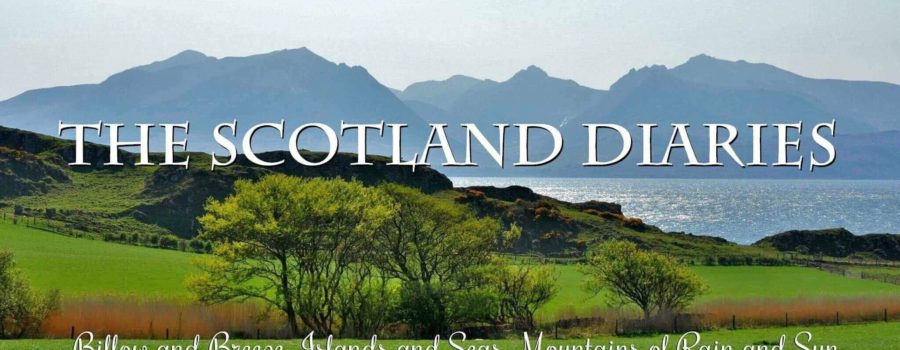



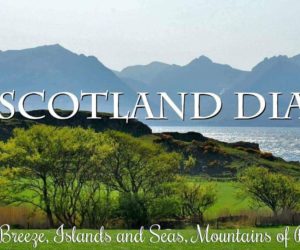
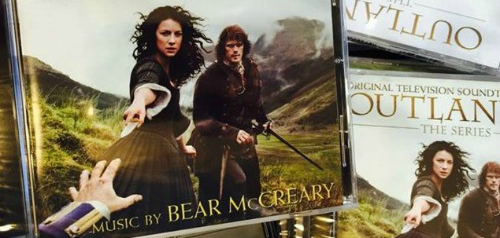
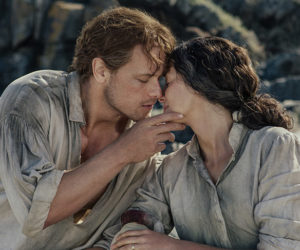
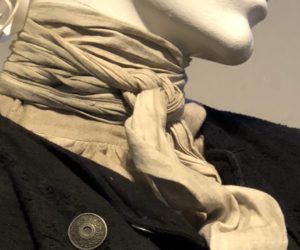





Leave a Reply
Your email is safe with us.